When is the best time to visit Nepal?

May 31, 2024 • 5 min read

Spring and fall are the peak times for trekking, but the Kathmandu Valley can be explored at any time of year © NurPhoto / Getty Images
While Nepal may be most famous for its high-altitude mountains, it actually spans from the lowland Terai – the jungle-filled plains bordering India – to the edge of the high-altitude Tibetan Plateau. There’s a lot of climatic variety.
The best month to visit Nepal largely depends on what you want to do while you’re there, and whether you’ll be visiting either very high or very low-lying places. The weather plays a big part in the tourism seasons.
Whether you want to spot rhinos, go white-water rafting or hike in the mountains, our insider guide to Nepal's seasonal variations and festivities will help you choose the best possible time for your trip.


Late September to November is the best time for trekking, sightseeing and festivities
October to November is the peak season for travel to Nepal and these are the best months to visit for most activities (late September is the shoulder season, although monsoon rains can linger). The weather is warm but not too hot, and the generally clear skies mean great mountain views. Rafting or kayaking on Nepali rivers is also fun, with decent water volume and good temperatures. It’s not the cheapest time to visit Nepal, but the country is generally affordable anyway.
Potential visitors are often wary of traveling during peak season because of the crowds but it really depends where you go. On a famous trekking trail, like Everest Base Camp, you won’t have the trails to yourself. Not by a long shot. Guides, flights, and accommodation should be booked as far in advance as possible, potentially a few months.
But those pictures you’ve seen of human traffic jams on Everest? They’re only a concern if you want to climb the mountain, not trek to it. And overcrowding only really applies to Everest, not the rest of the country. The vast majority of travelers don’t want to climb Everest, but if you do , the peak mountaineering season is different from the peak tourism season (see below). To take advantage of the great weather in peak season without the crowds, consider less well-known trekking routes. They’ll be less busy and accommodation will be more available.
Peak tourism season also coincides with peak festival season. Dashain (also called Dashami or Durga Puja) usually falls in October, while Tihar (also called Deepawali, or Diwali in India) is usually in November. The dates vary because they follow a lunar calendar. Dashain is mostly a family affair, and Kathmandu essentially clears out for around a week during the festival, with many shops and businesses closed. Tihar, the festival of light, is more accessible to travelers – it follows a couple of weeks after the end of Dashain. You’ll see displays of lights and rangoli decorations outside homes and businesses all over the country. It’s one of the best times to visit Kathmandu or Pokhara .
Get inspired with some of our favorite treks in Nepal.

Winter is the best time for off-season low-altitude trekking
Much of Nepal sits at a lower altitude than many people think, and the short winter (December to early February) is typically mild at lower altitudes, including the capital. There may be some foggy mornings and chilly nights, but when the sky is clear, winter days can be quite warm in the cities.
Other major advantages of visiting in the winter is that it’s one of the cheapest times to visit Nepal and there are few other tourists around. Lower-altitude trekking trails –anything that stays below circa 2500m (8200ft) – will be comfortable, as long as you have a good jacket for cold nights. Experienced winter hikers could even venture higher, but you’ll need to be well kitted out and prepared for snow.
Late winter is the best time for wildlife spotting
Nepal isn’t only about the mountains. The national parks on the Terai, such as Chitwan and Bardia , are full of wildlife, including lots of one-horned rhinoceros and a few Royal Bengal tigers. The best time to spot wildlife is at the end of winter (January and February). In late January, local villagers are allowed to cut the high elephant grass that shoots up after the monsoon (which ends in September), and the animals that were previously hiding in it become visible. You’re much more likely to spot rhinos and other animals at this time of year. Plus, wait any later and the temperatures on the Terai become blisteringly hot.

Spring is the second peak season but proceed with caution
For years, spring (late February to April) was touted as a second peak season in Nepal. However, in recent years, this common wisdom rings less and less true. Winters are usually dry, and as temperatures heat up through the spring, wildfires spread.
This has been happening for a long time but, with climate change, wildfires have become significantly worse over the last few years. The smoke from wildfires impacts air quality throughout the country – it's already hazardous in Kathmandu – and that includes the visibility of mountains.
An attractive feature of spring, however, is all the festivals. Shivaratri in February, Holi in March, and Patan’s Rato Machhendranath festival in April are all accessible to travelers and great fun.
Avoid the pre-monsoon and monsoon seasons aka the worst times to visit Nepal
By late spring, Nepal is counting down to the arrival of the monsoon. Temperatures become uncomfortably hot in many places and the air quality is poor. The stifling conditions ease somewhat with the arrival of the monsoon in June, and locals welcome the cooling, refreshing rains.
However, for travelers, the monsoon is the worst time to visit Nepal. Rain means cloudy skies, muddy and flooded streets, canceled or delayed flights, and the potential for landslides across roads. There may be pockets of beauty in Nepal’s monsoon, but visitors should give this season a wide berth. The rains generally peter out by mid-September.

Spring and fall are best for mountain climbing
Much of the above advice doesn’t really apply if you want to climb Mt Everest or another Himalayan peak, as the climbing seasons don’t always align with the best trekking and sightseeing seasons. Spring (March to May) and early autumn (late September and October) are the best times for mountaineering, as temperatures and weather conditions are optimum. However, conditions vary year by year, and climbing expeditions are sometimes affected by unpredictable conditions in the mountains.
Keep planning your trip to Nepal:
- Pick your must-visit locations with our guide to the best places to visit
- Insider tips and tricks if you're visiting Nepal on a tight budget
- Forge your own path and explore Nepal on a road trip
This article was first published Jan 20, 2022 and updated May 31, 2024.
Explore related stories

Budget Travel
Aug 5, 2024 • 6 min read
Tipping is an elusive custom all over the world, and Asia is no exception. Here's what you should know.

Jul 27, 2024 • 4 min read

Jul 23, 2024 • 5 min read

Jun 26, 2024 • 9 min read

Jun 14, 2024 • 6 min read

Jun 6, 2024 • 6 min read

Jun 3, 2024 • 8 min read

May 29, 2024 • 7 min read

May 28, 2024 • 9 min read

May 22, 2024 • 7 min read

Best Times to Visit Nepal —Weather and Travel Experience
Nepal has distinct climates related to its elevations with its subtropical jungle in the south and the world's highest peaks in the north. We suggest you also learn about the seasonal variations before going there so that you can choose the optimum time to visit.
Nepal's climate is divided into two seasons: the rainy season (May to August) and the dry season (September to April). October to December is the best time to visit Nepal as the skies are generally clear and the views are spectacular. However, the best time to visit Nepal depends on what you plan to do while in the country.
Quick Facts
- When Is the Best Time to Visit Nepal
Visiting Nepal in Spring — from March to May
Visiting nepal in summer — from june to august, visiting nepal in autumn — from september to november, visiting nepal in winter — from december to february.
- The ideal time to visit Kathmandu is from September to November when numerous cultural events are held.
- Late September to early December is the best time for photography in Nepal.
- October to April is the best time to see wildlife. Chitwan National Park is one of the most famous national parks in Nepal.
- The best time to visit Pokhara is September to November.
- The autumn months (October and November) are the most popular for trekking to Everest Base Camp.
When Is the Best Time to Visit Nepal?
The best time to visit Nepal is from October to December as the weather is stunning during this period. The average temperature is 22℃ (72°F) by day and 12℃ (54°F) at night.
Trekking, jungle safaris, and outdoor activities are all enjoyable during this period. Dashain is the most auspicious festival in October. Domestic flights are in high demand during the lead-up to it so it is advised to book your tour as early as possible.
March and April are also good times to visit Nepal as the weather gets warmer and the plants come alive with new growth. Most parts of Nepal are hot in these months. Kathmandu and Pokhara can reach 28℃ (82°F). The average temperature is 25℃ (77°F) by day and 10℃ (50°F) at night.
Trekking is ideal during this period, including the route to Everest Base Camp. Many hotels charge a peak season rate. The Holi festival falls in March and is a great opportunity for photos. Domestic flights between Kathmandu and Pokhara can fill up quickly.
January and February are recommended after the months mentioned above. It can be very cold, especially at night. The average temperature is 18℃ (64°F) by day and 2℃ (36°F) at night.
Enjoy viewing the snowcapped mountains. It's a good time to look at the wildlife in the jungles of Chitwan in the south of Nepal as these lowlands experience moderate temperatures. The Losar and Basant Panchami festivals are often, but not always, held in January. Many hotels offer special winter rates. This is a good time for travelers who are looking for deals.
The monsoon season is from May to September . Heat and humidity levels increase and the clouds make the mountain views seem mysterious. Some travelers don't enjoy this time in Nepal but it doesn't mean you can't travel during this period. The average temperature is 29℃ (84°F) by day and 18℃ (64°F) at night.
City sightseeing is interesting at this time. Getaways to Pokhara, Kathmandu, and the surrounding regions are welcome possibilities. During these months, you are likely to find discounts on accommodation and tours.
Here are the average temperatures and rainfall amounts for Nepal:
Spring is one of the most popular seasons to visit Nepal as temperatures climb steadily and the weather tends to be more stable. The valleys are fabulously beautiful, especially after all the ice has thawed and the flowers have bloomed. This is a great time to go trekking in Nepal.
Spring Weather
March: Temperatures on the Terai can be above 32°C (90°F) while Kathmandu and Pokhara can reach 26°C (79°F). Areas at high altitude are still cold, especially at night.
April: Most parts of Nepal are pretty hot. Kathmandu and Pokhara have temperatures reaching 32°C (90°F). The Terai can often be hot.
May: It is very hot in hillside cities – usually above 32°C (90°F) in the daytime – and even hotter on the Terai.
What to See
Spring is a peak season for trekking. Cross high passes, such as the Annapurna Circuit (ABC), which is located in the middle section of the Himalayas. This is the most popular trekking tour in Nepal. Starting at Nayapul, just a short drive from Pokhara, the standard route requires 10–11 days to reach Annapurna Base Camp and return to Pokhara.
During the tour, you will see fantastic glaciers and the peak of Hiunchuli.
This trek is not difficult and any fit person can manage it, even if you do not have any hiking experience.
Th e Everest Base Camp Trek (EBC) is consistently regarded as the finest in the world and is suitable for most trekkers with a medium level of fitness. The adventurous trek begins with a half-hour flight from Kathmandu to Lukla, which offers the best views of the Himalayas.
Start there and go through dense green forests to reach Everest Base Camp. It takes about 12 days to return to Lukla.
During the trek, you'll visit mountain villages and have the chance to visit some of the most renowned monasteries in the country, such as Tengboche Monastery.
Festivals and Events
- Holi : This an exciting festival of color celebrated in Kathmandu in early March. People smear colored powder on each other and throw colored water and water balloons — it's a great opportunity for photos.
- Bisket Jatra : This is Nepali New Year, which is a major holiday in Nepal. Celebrations take place at Bhaktapur in Kathmandu and children offer sweets, fruits, and gifts to their mothers to show their respect and gratitude.
What to Avoid
- Kathmandu is particularly dusty in March because it's the time for crop burn-offs. It's best to head out of the city.
- To avoid the crowds, choose a lesser-known trek or visit in early/late spring.
- Mountain views can be obstructed by haze and low clouds.
Insider Tips
- It is recommended to wear pants, T-shirts, and breathable clothes.
- In the evenings, wear suits, jackets, a windbreaker, and other warm clothes.
- Domestic flights to popular destinations, especially between Kathmandu and Pokhara, can fill up quickly. Early booking is suggested.
- The Holi festival takes place across many cities and smaller towns in March so it's very crowded.
The arrival of the monsoon season sees fewer tourists in Nepal, especially in July, making it the least visited month of the year. The weather is hot and humid and it tends to rain on most days.
Although July is not an ideal month for many outdoor activities, traveling in the city is a good idea, such as visiting temples, museums, bars and restaurants, and shops. Kathmandu and Pokhara are the best places to go in summer.
This season has great deals, which is ideal when traveling on a budget.
Summer Weather
June: The monsoon season sweeps up from India.
July: The monsoon season has truly arrived. Temperatures stay over 26°C (79°F) in Kathmandu and Pokhara. High-altitude areas are somewhat cooler but with heavy rainfall.
August: This is the final full monsoon month so temperatures remain hot and humid around the country.
It is the perfect time to discover Kathmandu's historical heritage without the crowds. The Pashupatinath Temple is a must-see attraction. It is one of the representative Hindu temples in Kathmandu,and is where Hindus hold open-air cremations.
You can visit the world's largest round pagoda in Kathmandu: Boudhanath . It was founded in the 6th century and was the center of Tibetan Buddhism in Nepal. It has one of the largest spherical stupas in Nepal.
Kathmandu Durbar Square is the most famous square in Kathmandu and a good place to see marvelous temples. There are more than 50 temples in the square — the whole scene is like an open-air museum filled with ancient architecture.
Pokhara is divided into two parts: the old part and the modern part. It is recommended to visit the old part because it is the same as it was before the development of tourism. Old houses are everywhere and the shops and stalls are full of local life. You can experience the locals' simple, slow pace of life.
In Pokhara, you can enjoy the stunning view of the beautiful Fewa Lake from a lakeside café.
If trekking is your main purpose in Nepal, the Mustang Trek to the north of Pokhara is a better choice in the monsoon season. It lies within the rain shadow of the Himalayas so it doesn't experience the monsoon-like weather that falls on the rest of the country.
- Rato Machchhendranath : Celebrations are held all over Nepal for the August full moon, especially in Patan in Kathmandu, which includes dancing with shamans. Thousands of devotees gather in Kathmandu Durbar Square.
- It's not a good time for epic mountain views and photography.
- It's not a good time for treks because the monsoon weather makes overland travel difficult. With wet weather, landslides, and muddy or flooded roads, many mountain regions become inaccessible.
- It is not advised to arrange a tight schedule as there is a larger possibility of flight delays and cancelations.
- Long pants and long-sleeved shirts are suggested to protect you from leeches in some areas.
- Take an umbrella as the weather is usually too warm to wear a rain jacket.
- With flight delays and cancelations, check your flights before you venture out.
- Visit the Pashupatinath Temple in the morning to see cremations or visit in the evening from 6pm to see the aarti (worship with fire).
The monsoon rains last until mid-September but it only rains every few days. The sky generally remains clear with fresh air, providing amazing views all around, making October and November lovely times to visit Nepal.
This is the most popular season for trekking in the Himalayas and provides you with opportunities to join in with various festivals.
Autumn Weather
September: The humidity subsides by late September. Temperatures reach 20°C (68°F) and 26°C (79°F) in Kathmandu and Pokhara but is higher on the Terai. Mountainous areas, as always, are cooler.
October: It rains occasionally but not very much. Temperatures in Kathmandu and Pokhara seem comfortable with a high of 20°C (68°F) and a low of 26°C (79°F). The Terai is still a little bit hotter.
November: It is quite warm in many parts of Nepal although temperatures can be cold at night. Daytime temperatures are in the low 20°C (68°F) in Kathmandu and Pokhara. Temperatures become more comfortable in the Terai.
As well as the Annapurna Base Camp and Everest Base Camp treks, which are popular in spring and autumn, the Langtang Valley trek is recommended. It is 62 kilometers north of Kathmandu. The Langtang Valley is the third of the great trekking areas in Nepal after the two treks mentioned above.
Starting at Syapru Besi, an 8 to 9-hour drive from Kathmandu, the moderately difficult trek can be done within a week.
During this cultural trek, you will see several ancient Buddhist monasteries, beautiful valleys, and majestic views of mountains and will pass through local villages where there will be a good chance to interact with the local Tamang people.
- Dashain : which always falls in late October, is the most important festival for Nepali Hindus. It is a celebration of good prevailing over evil. Local people gift goats, ducks, chickens, eggs, and coconuts to the goddess Durga. People return to their hometowns and stay with their families during the 15-day holiday.
- Tihar : is Nepal's second most important festival. It is normally held in mid-November. The celebrations last for 3 days. Local people light up their houses with oil lamps and candles. From the highland, you can see the beautiful scenery of the whole of Kathmandu.
- Chhath : is the most important festival observed in the Terai region and it falls on the seventh day after Tihar. Devotees fast and make offerings to the sun by gathering at riverbanks. The best place to experience the festival is in central Kathmandu.
- If you prefer to avoid crowds, don't travel during Dashain.
- Popular trekking trails are crowded — please get advice from your travel consultant to select the best trail.
- There are higher costs due to the higher demand during this peak time.
- In the daytime, a light jacket or cardigan is advisable in case it gets cold. You can also buy beautiful pashmina scarves everywhere to help keep you warm by covering your shoulders.
- At night, a warm jacket is suggested. If you are trekking, please take hiking shoes and casual clothes.
- Book your domestic flights as early as possible. If traveling during Dashain, flights fill up very quickly in the lead-up to the festival.
- If you wish to get some trekking tips, please ask your travel consultant.
Winter isn't the peak season but there are still clear, sunny skies and mild temperatures in many places. There is practically no rain throughout the country during this season. The pleasant aspect of traveling in this season is that there are fewer visitors.
Winter Weather
December: The skies are clear. In Kathmandu, average temperatures reach highs of 20°C (68°F) and lows of 4°C (39°F). Fog is common in the Terai. Daytime temperatures reach as high as 28°C (82°F) in Chitwan. Trekking trails in the Himalayas are much colder.
January: This is the coldest month of the year. In Kathmandu, daytime highs can reach 18°C (64°F). Pokhara stays a bit warmer than Kathmandu. Daily temperatures in Chitwan can still be as high as 25°C (77°F). Snowfall in the Himalayas makes trekking trails much harder.
February: The climate varies in this month. In Kathmandu, the average high is 20°C (68°F) with Pokhara being a few degrees warmer. The Terai can be very hot with temperatures reaching as high as 32°C (90°F).
If you are an adventurer who wishes to experience the harsh Himalayan winter, see the above-mentioned hiking trails without any crowds.
This is the best time for spotting wildlife in Chitwan National Park. It is unique for its wildlife safaris, bird watching, and tiger tracking activities in Nepal. The elephant safari there should not be missed!
The jeep safari is another popular program that you can enjoy during your stay in Chitwan. Compared to other safaris around the globe, Chitwan National Park has a wide range of wild animals.
Winter is also a great time to relax in Kathmandu. For example, you can sit in a café in Thamel and enjoy a glass of Nepali tea or a cup of Nepalese coffee.
Spending a few days in Bandipur is a good idea in the cold season. This is a unique, charming town with traditional wooden architecture, markets, and temple trails. It is about 5 hours' drive from Kathmandu.
If you enjoy hiking, it's also a good time for short treks in the Kathmandu Valley and a Nagarkot sunrise trek. Near Kathmandu, this is one of the best destinations for a short trek. It is considered a popular place for a sunrise view of the Himalayas. The trek can be done in one day.
- Losar : is the first day of the new year and is celebrated by Nepalese minority people. The best place to experience Losar is to seek out a Tibetan monastery in Kathmandu. The minority people will wear traditional dress for Losar.
- Trekking in the high mountainous areas can be risky.
- It is not advised to reach higher elevations due to the occasional snowfall.
- A down jacket is recommended as it can still be fairly warm during the day, even in winter.
- As it is the off-season period, you don't have to book too far in advance.
Explore Nepal with Asia Highlights
Nepal isn't easy to travel around without the help of English-speaking guides. We will be happy to provide you with worry-free tours.
Our professional travel consultants will help you select the destinations, flights, accommodation, and best things to do. Check out the following links learn more about our tours and submit your tour inquiry.
Discover real reviews of Highlights Travel Family 's best-rated service across trusted platforms.
Get Inspired with Some Popular Itineraries
At Asia Highlights, we create your kind of journey — your dates, your destinations, at your pace. You can have any trip tailor made for your travel.
More Travel Ideas and Inspiration
Sign up to our newsletter.
Be the first to receive exciting updates, exclusive promotions, and valuable travel tips from our team of experts.
Why Asia Highlights
Where can we take you today.
- Middle East
- African Safari
- Travel Agents
- Loyalty Program
- Privacy Policy
Address: Building 6, Chuangyi Business Park, 70 Qilidian Road, Guilin, Guangxi, 541004, China
- Best time to visit Nepal
Book your individual trip , stress-free with local travel experts
Select Month
- roughguides.com
- Travel guide
- Itineraries
- Local Experts
- Travel Advice
- Accommodation
Plan your tailor-made trip with a local expert
Book securely with money-back guarantee
Travel stress-free with local assistance and 24/7 support
We chose this trip specifically as we are regular hill walkers and had always wanted to hike in the Everest region of Nepal, but had been put off by tales ...
Nepal attracts visitors keen to explore its diverse scenery – from jungles to high mountain peaks, to discover its fascinating wildlife and delve into its rich cultural heritage.
Weather in Nepal
When is the monsoon in nepal, when is the best time to visit nepal, when is the best time to visit kathmandu, when to go trekking in nepal, festivals and holidays in nepal, nepal festival calendar, dance and culture shows, travel ideas for nepal, created by local experts.

Exclusive Everest
Trek in the Everest region of Nepal's Himalayas, absorbing spectacular views at every step, including Everest rising above the Nuptse Ridge, Lhotse, the iconic peak of Ama Dablam and other Himalayan giants too. Top this off with a shot of warm Nepalese culture for an experience of a lifetime.
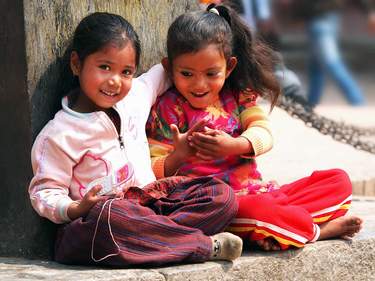
Himalayan Family Adventure
Experience Nepal's hill villages and jungle lowlands as you embark on a family-friendly adventure of a lifetime. Expect mini mountain treks, overnight camps, river rafting and wildlife safaris. Come here for action, stunning mountain scenery and a look around bustling Kathmandu too.

The UNESCO World Heritage Sites of Nepal
Set in the heart of the Himalayas, the landlocked South-Asian country of Nepal is home to a wealth of UNESCO World Heritage Sites. From wild jungles to ancient civilisations, Nepal offers a combination of history, culture and nature; perfect for the most well-seasoned of travellers.
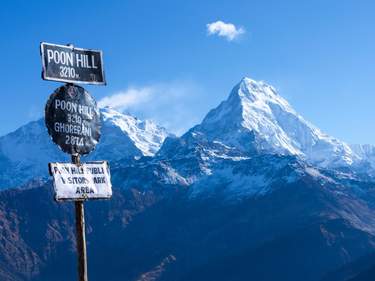
A Taste of Annapurna
Experience the great Nepalese outdoors in all its glory with this moderate trek: pass through picturesque mountain villages like Ghorepani; soak up a stunning sunrise from Poon Hill; marvel at the snow-capped peaks of the Himalayas, all with this unique adventure trek!

Himalayan Trilogy: Nepal, Bhutan, Tibet Unveiled
Discover the majestic kingdoms of the Himalayas on the "Best of Nepal, Bhutan, and Tibet" trip. This journey offers an unparalleled blend of towering peaks, ancient monasteries, and vibrant cultures.

Silver Triangle Nepal Tour
Embark on an unforgettable journey through Nepal's Silver Triangle! Explore the serene beauty of Pokhara, the wilderness of Chitwan National Park, and the ancient wonders of Kathmandu.
The country has much to offer all year round. Differences in the seasons determine where’s good to go at any given time of year – meaning the best time to go to Nepal goes hand-in-hand with the activities on your wishlist.
Nepal is broadly temperate, with four main seasons centred around the summer monsoon from June to September. The build up to the monsoon is stiflingly hot with afternoon clouds and rain showers. The subsequent monsoon brings relief with a drop in temperatures and the heavy rains bring the countryside into bloom.
While winter is mostly clear and stable it can also be seriously cold in trekking areas. Spring sees warm weather, while the months of autumn are clear, dry and fresh after the recent rains.
Each season has its charms and each offers something different to travellers exploring this wonderful Himalayan country.
Nepalis welcome the monsoon, the timing of which may vary by a few weeks every year, but typically begins in mid-June and peters out in the last weeks of September.
During these months, expect to see heavy rains every day, especially in July and August. During June and September, rain is considerably lighter. The good news is that monsoon rains usually only last for a couple of hours and their timing is quite predictable. So it’s still possible to enjoy a great trip to Nepal during the monsoon – all you need to do is choose your destination and itinerary carefully, especially if trekking is top of the list.
The monsoon doesn’t affect all of Nepal equally. Areas in the Himalayan rain shadow, such as Dolpo and Humla in western Nepal and the Mustang region north of Annapurna , are spared the drenching other areas receive. The area of Pokhara is the wettest part of Nepal during monsoon.
The main thing to remember about the monsoon season is that you need to be flexible with your travel plans. In some areas, flights may be delayed or cancelled due to heavy rains. Landslides can happen, causing road closures. Always check with your hotel or guest house before heading on a road trip during monsoon season. They should be able to find the most up-to-date information about road conditions. Bring appropriate waterproof clothing and keep your electronics in waterproof bags if you’re out and about.
And bear in mind, when the rain stops it will still be hot and sunny, so you can still get out and discover the country during the monsoon season.
The best time to visit Nepal depends on what you plan to do while in the country. Fall/autumn and spring are the most popular times to visit for hikers, climbers and mountaineers. At this time, clear skies and pleasant temperatures create the ideal conditions for adventures in the mountains.
Low season (which coincides with the monsoon season) can be an option if you’re on a budget. Firstly, you’re likely to find discounts on accommodation and tours – plus, you won’t have to deal with crowds. Secondly, if you don’t plan on hitting the Himalayas , monsoon season can be a great time to visit.
Spring is a good time to visit Nepal’s valleys and forests. March marks the start of the blooming season in many parts of the country and large areas are covered in bright pink rhododendrons – Nepal’s national flower. This is also a great time to explore centres of Buddhist culture and architecture, such as Tengboche monastery.
You can have a fabulous travel experience in Nepal during the winter. Low humidity and minimal chances of rain make this season great for travel photography and low-altitude hikes.
When to visit Nepal in winter
Winter in Nepal is cold, but cold temperatures are balanced by brilliant sunshine and clear blue skies. It can be a wonderful time for the more experienced trekker to tackle the mountains. Winter weather in Nepal is also perfect for taking photos that capture the country’s stunning natural beauty.
Visiting Nepal in December – February
In terms of the weather, winter is the perfect time to visit Chitwan National Park , a great destination for jungle walks and safari expeditions. The park is home to Bengal tigers, elephants, rhinos, and more than 500 bird species. For the best chances of spotting wildlife, plan your trip around January or February. It’s worth noting, however, that this is one of Nepal’s most popular destinations, so unless you opt for the rainy season for a trip to Chitwan, you’ll be rhino spotting with a whole lot of other visitors. Bardia National Park , northwest of Nepalgunj, is a quieter alternative and offers the best chance to see tigers in Nepal.
The cold season is also a good time to spend a few days exploring Bandipur . This charming town will catch your eye with its traditional wooden architecture, busy markets, and scenic trails. The town is a five-hour drive from Kathmandu , which makes it a convenient getaway if you get tired of the capital’s hectic pace.
Speaking of Kathmandu, winter is a great time to layer up and explore the old city. Low temperatures are the perfect excuse to sit at a café in Thamel and enjoy a glass of Nepali tea, which comes in many varieties, or a cup of Nepal’s own-grown coffee.
The winter months are generally dry and settled, so it can be a good time for trekking – although it is inevitably colder. There can be snow at 2500m – sometimes lower, while conditions can mean passes over 4000m are uncrossable. You’ll also need appropriate gear for cold temperatures and heavy snowfall if trekking at high altitudes. Challenging conditions aside, if you’re an experienced trekker this can be a wonderful time to be on the mountains, with far fewer trekkers venturing out. At lower altitudes it can feel more like spring already.
When to visit Nepal in spring
Spring is one of the most popular seasons to visit Nepal. Snowfall begins to die down around March and makes it easier to move along hiking trails, so this is a fairly busy time in Nepal’s high-altitude destinations, although not as busy as in autumn/fall. But hiking and climbing are not the only things to do in the spring. In general, this is a great time to discover nature in Nepal.
Visiting Nepal in March – May
April is peak time for travellers heading to Everest base camp and the Annapurna circuit . These months are also a popular time to do short treks in the Nepalese countryside, for example at Ghorepani and Poon Hill or Mardi Himal.
But the options don’t end there: you can also explore lesser-visited destinations, such as the tea plantations in Ilam , in eastern Nepal. There’s also Panch Pokhari, a remote high-altitude wetland area home to five glacial lakes. Mountain scenery could also be your stunning backdrop at one of Nepal’s yoga retreats .
By May it is getting hotter and hazier and the weather is somewhat unsettled, with afternoon storms quite common. Go high if you’re trekking and expect rain, especially in the known wetter regions, such as Annapurna and the far eastern parts of the country.
When to visit Nepal in summer
Summer brings the monsoon rains to most of Nepal. At this time of the year, Nepal's climate is hot and humid, so the rains bring a refreshing break from the heat. But although Nepal is generally wet, the mornings are often clear and the countryside is bursting with colour – vivid green forests and rice terraces and bright wildflowers.
What’s more, summer is a pleasant time to go to Nepal if you want to avoid big crowds and peak season prices.
Visiting Nepal in June – August
Early summer is a fantastic time of year to discover Kathmandu’s historical heritage, without the crowds. And if you get caught in the monsoon rain (mid-June to early Sept), you can always wait for it to pass at one of the many cafés and tea houses.
If you’re into landscape or wildlife photography, early June is the time to see the spectacular landscapes at Shey Poksundo (She-Phoksundo) National Park. This is the country’s biggest national park, and as such, it’s home to hundreds of animal and plant species. You may even be able to spot endangered species here, such as Himalayan black bears, snow leopards and blue sheep.
Most people who visit Nepal for its superb trekking opportunities avoid the monsoon. Downpours can render trekking paths too slippery and muddy – plus, there are leeches to contend with! Mountain views may be obscured and general travelling around can prove problematic.
That said, you don’t need to rule out trekking altogether. Avoid wet areas, such as Annapurna and the far east of Nepal and stick to parts where the monsoon is weaker instead. The far west and areas in the Himalayan rain shadow are relatively sheltered. These include Dolpo, Humla and the mystical Mustang region north of Annapurna.
Mustang, home to Kali Gandaki Gorge, which at 8,270 feet (2,520 metres) is the deepest gorge in the world. Other must-sees in the area include villages such as Marpha (also known as the Apple Capital of Nepal) and Kagbeni.
Just remember, if you are travelling to Nepal for trekking expeditions, allow for sudden changes to your itinerary. The rain can affect transport, with delays and cancellations possible. Check road conditions before you venture out and bring waterproof clothing.
It’s as well to bear in mind, when the rain stops it will still be hot and sunny, so you can still get out and discover the country during the monsoon season.
When to visit Nepal in fall/autumn
Fall or autumn is one of the best seasons to travel to Nepal. From October it’s generally dry and skies are clear, which is why climbers and hikers love this season.
Daytime temperatures during the day at high altitudes are pleasantly cool for walking, whereas it’s hotter lower down. At night it’s getting colder high up but it’s unlikely to be too severe.
You’ll also have the chance to enjoy some of Nepal’s biggest festivals , such as Dashain (Desain, or Dashera) and Tihar (Tihaar), important Hindu festivals.
Visiting Nepal in September – November
The period after the monsoon, around September to early October can be unpredictable. If the rains have finished you’ll be blessed with mild temperatures and clear skies, which is why fall or autumn can be one of the best seasons to travel to Nepal. Trekking trails are also quiet – a joy for hikers and mountaineers. If you’re unlucky though, the monsoon may not have quite tailed off yet. In that case it could be hot and sticky and you may get caught in heavy showers – or even snow. Also those stunning mountain views could be shrouded in clouds.
Mid-October to mid-November is the best time for serious climbing and mountaineering in Nepal. But this also means that from September it’s the busiest time in the Himalayas. If you’d rather avoid the crowds, consider less popular destinations and activities:
- Nagarkot is one of the most photogenic places in Nepal. Temperatures may be chilly in the early morning and late evening, but visibility is great and you’ll enjoy panoramic mountain views.
- A multi-day rafting or kayaking trip along Sun Kosi (Sun Koshi) River or Ghaghara River. These trips are a great way of seeing the country and staying active at the same time.
- The Gokyo Lakes trek, where you’ll enjoy dramatic views of some of the world’s highest mountains.
- Cycling in the Kathmandu Valley and southern Nepal. The Terai lowlands are a fantastic destination for a two-wheel holiday. And they’re suitable for cycling beginners too.
Generally speaking, September to November is the best time to visit the city. At this time of the year, you’ll find dry weather, clear skies, and plenty of cultural events. But in fact, there’s no wrong time to visit the city.
Kathmandu weather is relatively mild compared to other parts of the country. The average annual temperature in Nepal’s capital city is a pleasant 18°C. January is the coldest month in Kathmandu (average 9°C). The hottest month is June with average temperatures of 23°C, and the wettest is July with more than 15 days of rain in the month. If you want to avoid rainy weather, November is your best bet.
The Kathmandu Valley is not as affected by monsoon rains as other parts of the country. Some flooding may happen here and there, but it shouldn’t affect your sightseeing plans. Remember that monsoon rains only last a few hours. Plan your activities around this, and you should have no problem visiting Kathmandu during the rainy season.
If you’re interested in high-altitude treks, it’s best to avoid the coldest winter months unless you’re experienced with cold weather conditions and have the necessary gear. Between December and February, heavy snowfall can make some trails and roads dangerous or impossible to cross.
On the other hand, spring – and the period before winter, bring dry and warm weather. These seasons are the best for high-altitude expeditions such as those to Annapurna , Everest , or Langtang .
Trekking in Nepal doesn’t always have to involve great heights. There are many short and lower-altitude hikes you can do around the Kathmandu Valley. A trek on the forested mountain of Phulchowki (Phulchoki) will take you from subtropical vegetation through Nepal chestnut, evergreen oaks and, of course, rhododendron. The unspoiled forest is one of the best places in Nepal for butterfly-spotting and birdwatching.
Or you can choose the Champadevi trek and go on a discovery journey of Tibetan monasteries.
These treks can be done all year round, except for the rainy season. For safety always go with a group when going on walks in the Phulchowki forest, as there have been robberies in recent years. And stick to the trails – anti-personnel mines were laid during the conflict in this region and you can't be 100% sure that they've all been removed.
Read more on trekking : where to go and when, accommodation, remote and restricted areas, organised treks and trekking independently, equipment, safety – and more.
The weather is not the only factor when thinking about when to go to Nepal. This Himalayan nation has a rich history, which can be discovered through its festivals. Nepal’s festival calendar fills every month of the year with colourful celebrations that offer interesting insights into the local culture. Here are some things you should know about festivals in Nepal:
- The exact date varies from year to year. This is because it is calculated based on the lunar calendar.
- Many Nepali festivals last several days. For example, Holi can last for a whole week, and Dashain runs for 15 days.
- Although there are festivals all year round, September to November is considered “festival season”. If you’re interested in the local culture, this is the best time to visit Nepal.
- Nepal’s five biggest festivals are Dashain (Sept/October), Holi (early spring), Nepalese New Year (which usually falls in April), Tihar (November), and Teej (Tij), a women-only celebration usually held in late summer.
- The majority of festivals have spiritual or religious origins. As a visitor, you’re welcome to observe – just remember to be respectful.
- Nepal is a multicultural nation. Some festivals are celebrated all over the country, but others are only observed by certain ethnic groups. Also, the rituals and celebrations can vary from community to community.
- Festivals are a great opportunity to try traditional Nepalese food . Sweet treats are everywhere during the Tihar festival. If you’re around for Holi, you’ll want to try dahi balla , or lentil fritters topped with yogurt and chutney. They’re addictive! Some of these delicacies are only prepared once a year, so don’t miss your chance.
Stumbling onto a local festival may prove to be the highlight of your travels in Nepal – and given the sheer number of them, you’d be unlucky not to. Though most are religious in nature, merrymaking, not solemnity, is the order of the day, and onlookers are always welcome. Festivals may be Hindu, Buddhist, animist or a hybrid of all three.
Hindu events can take the form of huge pilgrimages and fairs ( mela ), or more introspective gatherings such as ritual bathings at sacred confluences ( tribeni ) or special acts of worship ( puja ) at temples. Many see animal sacrifices followed by family feasts, with priests and musicians usually on hand. Parades and processions ( jaatra ) are common, especially in the Kathmandu Valley.
Buddhist festivals are no less colourful, typically bringing together maroon-robed clergy and lay pilgrims to walk and prostrate themselves around stupas (dome-shaped monuments, usually repainted specially for the occasion).
Many of Nepal’s animist peoples follow the Hindu calendar, but local nature-worshipping rites take place across the hills throughout the year. Shamanic rites usually take place at home, at the request of a particular family, although shamans themselves have their own calendar of fairs ( mela ) at which they converge on a particular holy spot. You’ll have to travel widely and sensitively to have the chance to witness a shaman in action.
Jubilant Nepali weddings are always scheduled on astrologically auspicious days, which fall in the greatest numbers during the months of Magh, Phaagun and Baisaakh. The approach of a wedding party is often heralded by a hired band baajaa or brass band and open-air feasts go on until the early hours. The bride usually wears red, and for the rest of her married life she will colour the parting of her hair with red sindur .
Funeral processions should be left in peace. The body is normally carried to the cremation site within hours of death by white-shrouded friends and relatives; white is the colour of mourning for Hindus, and the eldest son is expected to shave his head and wear white for a year following the death of a parent. Many of the hill tribes conduct special shamanic rites to guide the deceased’s soul to the land of the dead.
Knowing when and where festivals are held will not only enliven your time in Nepal, but should also help you avoid annoyances such as closed offices and booked-up buses. Unfortunately, as most are governed by the lunar calendar, festival dates vary annually, and determining them more than a year in advance is a highly complicated business best left to astrologers. Each lunar cycle is divided into “bright” (waning) and “dark” (waxing) halves, which are in turn divided into fourteen lunar “days”. Each of these days has a name – purnima is the full moon, astami the eighth day, aunshi the new moon, and so on. Thus lunar festivals are always observed on a given day of either the bright or dark half of a given Nepali month. The following list details Nepal’s most widely observed festivals, plus a few notable smaller events. For upcoming festival dates, check one of the online Nepali calendars (try visitnepal.com or nepalhomepage.com ).
Magh (Jan–Feb)
Magh (or Makar) Sankranti Marking a rare solar (rather than lunar) event in the Nepali calendar – the day the sun is farthest from the earth – the first day of Magh (Jan 14 or 15) is an occasion for ritual bathing at sacred river confluences, especially at Devghat and Sankhu. The day also begins a month-long period during which families do daily readings of the Swasthani, a compilation of Hindu myths, and many women emulate Parvati’s fast for Shiva, one of the Swasthani stories. For more information, see The Devghat Pilgrimage.
Basanta Panchami This one-day spring festival is celebrated on the fifth day after the new moon in most Hindu hill areas. The day is also known as Saraswati Puja, after the goddess of learning, and Shri Panchami, after the Buddhist saint Manjushri. School playgrounds are decorated with streamers and children have their books and pens blessed; high-caste boys may undergo a special rite of passage.
Phaagun (Feb–March)
Losar Tibetan New Year falls on the new moon of either Magh or Phaagun, and is preceded by three days of drinking, dancing and feasting. The day itself is celebrated most avidly at Boudha, where morning rituals culminate with horn blasts and the hurling of tsampa . Losar is a time for families, and is the highlight of the calendar in Buddhist highland areas, as well as in Tibetan settlements near Kathmandu and Pokhara.
Shivaraatri Falling on the new moon of Phaagun, “Shiva’s Night” is marked by bonfires and evening vigils in all Hindu areas, but most spectacularly at Pashupatinath , where tens of thousands of pilgrims and sadhus from all over the subcontinent gather for Nepal’s best-known mela . Fervent worship and bizarre yogic demonstrations can be seen throughout the Pashupatinath complex. Children collect firewood money by holding pieces of string across the road to block passers-by. Nepalis say the festival is usually followed by a final few days of winter weather, which is Shiva’s way of encouraging the Indian sadhus to go home.
Holi Nepal’s version of the springtime water festival, common to many Asian countries, lasts about a week, and commemorates a myth in which the god Krishna, when still a boy, outsmarted the demoness Holika. During this period, anyone is a fair target for water balloons and coloured powder. It culminates in a general free-for-all on Phaagun Purnima, the full-moon day of Phaagun.
Chait (March–April)
Chait Dasain Like its autumn namesake, the “little Dasain”, observed on the eighth day after the new moon, involves lots of animal sacrifices. The goriest action takes place at goddess temples, such as the one at Gorkha, and in the Kot courtyard near Kathmandu’s Durbar Square, where the army’s top brass come to witness the beheading of numerous buffalo and goats.
Ram Nawami The birthday of Lord Ram is observed on the ninth day after the full moon at all temples dedicated to Vishnu in his incarnation as the hero of the Ramayana, one of the great Hindu epics. By far the biggest and most colourful celebrations take place in Janakpur, where thousands of pilgrims flock to the Ram temple.
Seto Machhendranath Jaatra Kathmandu’s answer to Patan’s Machhendranath Rath Jaatra (see below), this sees a lumbering wooden chariot containing the white mask of the god Machhendranath pulled through the narrow lanes of the old city for four days, starting on Chait Dasain.
Baisaakh (April–May)
Nawa Barsa Nepali New Year, which always falls on the first day of Baisaakh (April 13 or 14), is observed with localized parades. Culminating on Nawa Barsa, Bhaktapur’s five-day celebration, known as Bisket or Biska, is the most colourful, combining religious processions with a rowdy tug-of-war (see Bishanku Narayan ); the nearby settlements of Thimi and Bode host similarly wild scenes.
Machhendranath Rath Jaatra Nepal’s most spectacular festival: thousands gather to watch as the image of Machhendranath, the Kathmandu Valley’s rain-bringing deity, is pulled around the streets of Patan in a swaying, 18m-high chariot. It moves only on astrologically auspicious days, taking four weeks or more to complete its journey. For more information, see Raato Machhendranath’s big ride .
Buddha Jayanti The anniversary of the Buddha’s birth. Enlightenment and death is celebrated on the full-moon day of Baisaakh at all Buddhist temples, but most visibly at Swayambhu, where the stupa is decorated with thousands of lights, and ritual dances are performed by priests dressed as the five aspects of Buddhahood. Processions are also held at the Boudha stupa and in Patan. Curiously, observances at the Buddha’s birthplace, Lumbini, are rather sparse.
Saaun (July–Aug)
Janai Purnima The annual changing of the sacred thread ( janai ) worn by high-caste Hindu men takes place at holy bathing sites throughout the country on the full-moon day of Saaun. Men and women of any caste may also receive a yellow-and-orange “protective band” ( raksha bandhan ) around one wrist, which is then worn until Tihaar, when it’s supposed to be tied onto the tail of a cow. Mass observances are held at Gosainkund, a holy lake high in the mountains north of Kathmandu; Pashupatinath; and most prominently Patan’s Kumbeshwar temple, where priests tie strings and bestow tikas , and jhankri (hill shamans) perform sacred dances.
Gaai Jaatra Newari tradition has it that Yamraj, the god of death, opens the gates of judgement on the day of the full moon, allowing departed souls to enter. Falling on the day after the full moon, Gaai Jaatra honours cows ( gaai ), who are supposed to lead departed souls to Yamraj’s abode. Processions in Kathmandu, Bhaktapur and other Newari towns are both solemn and whimsical: an occasion for families to honour loved ones who have died in the past year, but also for young boys to dress up in fanciful cow costumes or masquerade as sadhus. In Bhaktapur, where the festival is known as Gunhi Punhi and starts a day earlier (coinciding with Janai Purnima), men parade around town in humorous costumes. Satirical street performances are less common nowadays than they once were, but newspapers and magazines publish caustic Gaai Jaatra specials.
Nag Panchami On the fifth day after the new moon, Kathmandu Valley residents quietly propitiate the nag (snake spirits), who are traditionally held to control the monsoon rains and earthquakes, by pasting pictures of nag over their doorways with cow dung and offering milk, rice and other favourite nag foods to the images. Wells are cleaned only on this day, when the nag are believed to be away worshipping their ancestral deities.
Ghanta Karna On the fourteenth day after the full moon, residents of Kathmandu Valley towns celebrate the victory of the gods over the demon Ghanta Karna (“Bell Ears”) by erecting effigies and then burning or tearing them down.
Bhadau (Aug–Sept)
Krishna Astami (also called Krishna Jayanti or Krishna Janmastahmi) Krishna temples such as Patan’s Krishna Mandir throng with thousands of worshippers celebrating the god’s birth on the seventh day after the full moon. Vigils are also held the night before.
Tij The three-day “Women’s Festival”, which starts on the third day after the new moon, sees groups of women clad in red singing and dancing through the streets. Letting their families fend for themselves for once, they start with a girls’ night out, feasting until midnight when they begin a day-long fast. On the second day they queue up to worship Shiva at the Pashupatinath temple outside of Kathmandu, and break the fast and ritually bathe to remove their sins on the final day.
Indra Jaatra A wild week of chariot processions and masked-dance performances in Kathmandu, held around the full moon of Bhadau. On the last day, which is also known as Kumari Jaatra, beer flows from the mouth of an idol in Durbar Square. For more information, see Indra Jaatra: eight days of pomp and partying .
Yartung A swashbuckling fair held at Muktinath, in the Annapurna trekking region, centred around the full-moon day and featuring horse racing, dancing, drinking and gambling.
Asoj (Sept–Oct)
Dasain (or Dashera) Although Hindu in origin, Nepal’s longest and greatest festival is enthusiastically embraced by members of almost all religious and ethnic groups. It stretches over fifteen days, from the new moon to the full moon of Asoj, with the liveliest action taking place on the seventh, ninth and tenth days. Normally falling just after the summer rice harvest is in, Dasain is a time for families to gather (buses get extremely crowded with homeward-bound passengers), children to be indulged (with kites, makeshift swings and miniature ferris wheels), and animals to be sacrificed (roads and markets all over the country are filled with doomed goats). On the first day, known as Ghatasthapana, people plant jamura (barley) in a kalash (sanctified vessel), representing Durga, Dasain’s honoured goddess; the seedlings will be picked and worn in the hair on the tenth day. Devotees congregate at local goddess temples throughout the next nine nights. A separate festival, Panchali Bhairab Jaatra, features late-night processions between the Bhairab’s shrine and the Kumari Ghar in Kathmandu, and coincides with the fourth and fifth days of Dasain. On the seventh day, Fulpati, a bouquet of sacred flowers ( fulpati ) is carried in a procession from Rani Pokhari to the Hanuman Dhoka Palace in Kathmandu. The ninth day, Navami, begins at midnight with tantric buffalo sacrifices inside the forbidden Taleju (a form of Durga) temples of the Kathmandu Valley; throughout the day, animals are ritually beheaded publicly in the Kot Courtyard near Kathmandu’s Durbar Square and in every village and city of Nepal; their blood is sprinkled on tools, vehicles and even aircraft to impart Durga’s shakti (power). These rituals commemorate Durga’s slaying of the demon Mahisasur, and more generally, the triumph of good over evil. Bijaya Dasami, the “Victorious Tenth Day”, celebrates Ram’s victory over the demon Ravana – with Durga’s help. Various processions and masked dance troupes ply the streets and families visit their elders to receive blessings and tika .
Kaattik (Oct–Nov)
Tihaar (Diwali near India) Lasting for five days, starting two days before the new moon, the “Festival of Lights” is associated with Yamraj, the god of death, and Lakshmi, the goddess of wealth and good fortune. On the first day, Nepalis set out food on leaf plates for crows, regarded as Yamraj’s messengers; on the second, they honour dogs as Yamraj’s gatekeepers, giving them tika , flower garlands and special foods; and on the third they garland cows both as the symbol of Lakshmi and as the soul’s guide to Yamarj’s underworld. The festival’s most picturesque event, Lakshmi Puja, comes on the evening of the third day, when families throughout Nepal ring their homes with oil lamps, candles or electric lights to guide Lakshmi to their homes so she can bless them with prosperity for the year. Trusting in her, many Nepalis gamble on street corners, and student groups make the rounds singing “Diusire”, a form of musical fundraising. Firecrackers have also become a big part of the fun for kids. To Newars, the fourth day is known as Mha Puja (“Self-Worship”), an occasion for private rituals, and also their New Year’s Day, marked by banners, well-wishing and motorcycle parades in the Kathmandu Valley’s three main cities. On the fifth day, Bhaai Tika, sisters recall the myth of Jamuna, who tricked Yamraj into postponing her brother’s death indefinitely, by blessing their younger brothers and giving them flower garlands, tika and sweetmeats.
Chhath Coinciding with the third day of Tihaar, this festival honours Surya, the sun god, and is one of the most important for the Maithili-speaking people of the eastern Terai. Chhath is celebrated most ardently in Janakpur, where women gather by ponds and rivers to greet the sun’s first rays with prayers, offerings and ritual baths.
Mani Rimdu Held at Tengboche and Chiwong monasteries in the Everest region around the full moon of the ninth Tibetan month (usually Oct/Nov), this colourful Sherpa masked dance dramatizes Buddhism’s victory over the ancient Bon religion in eighth-century Tibet. A similar event is held in May or June at Thami.
Mangsir (Nov–Dec)
Ram-Sita Biwaha Panchami As many as 100,000 pilgrims converge on Janakpur for this five-day gathering, beginning on the new moon of Mangsir. The highlight is the re-enactment of the wedding of Ram and Sita, the divine, star-crossed lovers of the Ramayana, one of the great Hindu epics. Janakpur’s stature as a holy city rests on its having been the location of the original wedding.
Nepali music is inseparable from dance , especially at festivals. Nepali dance is an unaffected folk art – neither wildly athletic nor subtle, it depicts everyday activities such as work and courtship. Each region and ethnic group has its own traditions, and during your travels you should get a chance to join a local hoedown or two, if not a full-blown festival extravaganza. Look out, too, for the stick dance of the lowland Tharus, performed regularly at lodges around Chitwan National Park. Staged culture shows in Kathmandu and Pokhara are a long way from the real thing, but they do provide a taste of folk and religious dances. Most troupes perform such standards as the dance of the jhankri (shaman-exorcists still consulted by many hill-dwelling Nepalis); the sleeve-twirling dance of the Sherpas; the flirting dance of the hill-dwelling Tamangs; perhaps a formal priestly dance, to the accompaniment of a classical raga (musical piece); and at least one of the dances of the Kathmandu Valley’s Newars.
Folk music ( git lok ) is an important aspect of life in Nepal, particularly during festivals and holidays. The maadal double-ended drum plays a focal role, often accompanied by the harmonium, murali (bamboo piccolo) or bansuri (flute). A group member will strike up a familiar verse, and everyone joins in on the chorus.
Folk music traditions vary among the country’s many ethnic groups, but the true sound of Nepal can be said to be the soft, melodic and complex music of the hills. Jhyaure , the maadal -based music of the western hills, is the most popular. Selo , the music of the Tamangs, has also been adopted by many other communities. Meanwhile, the music of the Jyapu (Newari farmers) has a lively rhythm, though the singing has a nasal quality.
The improvised, flirtatiously duelling duets known as dohori , traditionally performed by young men and women of the hill tribes, have become the soundtrack of modern Nepal. You’ll hear them on personal radios, mobile ringtones and bus music systems, as well as in the dedicated rodi ghars (nightlife restaurants), and will soon come to recognize the repetitive back-and-forth, him-then-her structure, with wailing flutes and unison choruses punctuating each verse.
While folk music is by definition an amateur pursuit, there are two traditional castes of professional musicians : wandering minstrels ( gaaine or gandarbha ) who play the sarangi (a four-stringed fiddle), and damai , members of the tailor caste who serve as wedding musicians.
The Rough Guides to Nepal and related travel guides
In-depth, easy-to-use travel guides filled with expert advice.

Travel advice for Nepal
From travel safety to visa requirements, discover the best tips for traveling to Nepal
- Culture and Etiquette in Nepal
- Eating and drinking in Nepal
- Getting around Nepal: Transportation Tips
- Travel Health Nepal
- Travel Tips Nepal for planning and on the go
- How to get to Nepal
Find even more inspiration here

- Travel Tips
written by Rough Guides Editors
updated 17.05.2021
Ready to travel and discover Nepal?
Get support from our local experts for stress-free planning & worry-free travels.
- Where to stay
- Travel advice

Change location
- Call us today from 9am
- 01993 838 925 01993 838 315 or
- REQUEST A QUOTE
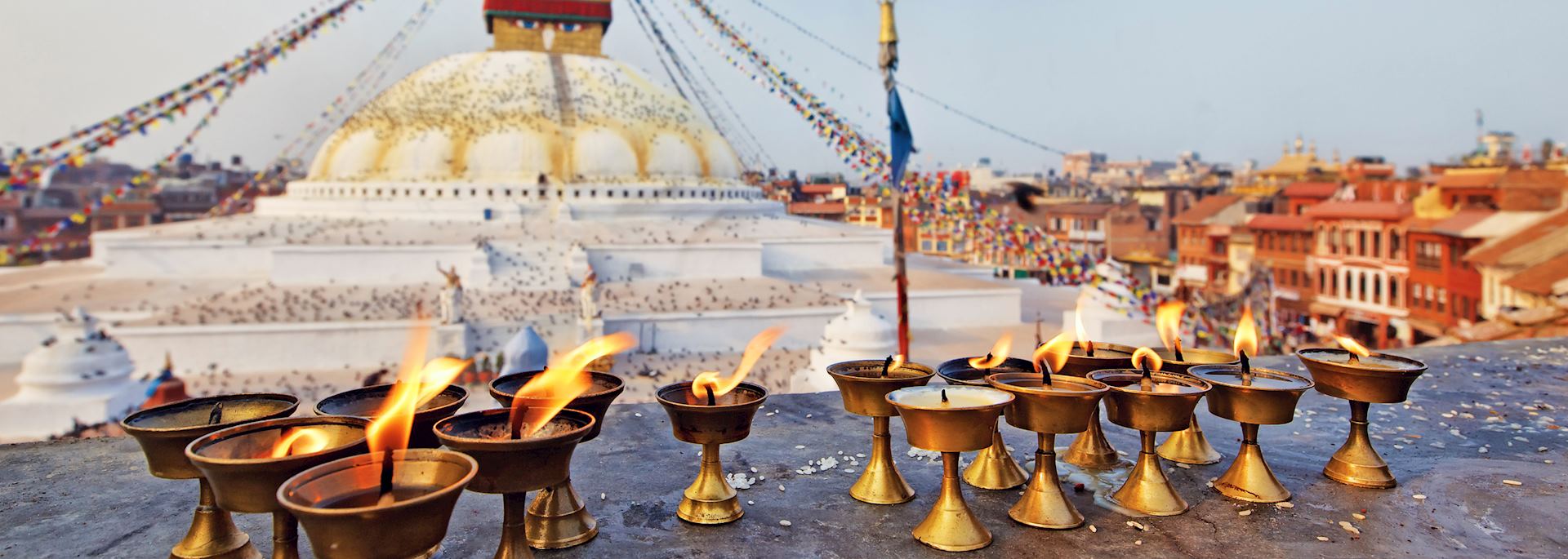
When is the best time to visit Nepal?
- Month-by-month
The best time to visit Nepal is between October and December, when the skies are a clear blue and the views spectacular. The weather remains dry until about April, with temperatures varying between regions.
January and February can be very cold, especially at night, with average temperatures of 6°C. But you’ll be rewarded with clear skies, incredible panoramas and quieter trekking trails, as there are fewer visitors. High altitude trekking is not recommended at this time.
Late spring in May is a beautiful time to travel, with the rhododendrons bursting into bloom. Heat and humidity levels build, with temperatures climbing to 35°C.
The monsoon season arrives in June and lasts until the end of August, with the clouds obscuring the glorious mountain views. The heavy rain and landslides make travel difficult and many places close down, so the country is best avoided at this time.
Nepal celebrates festivals all year, so there is often a festival or pilgrimage taking place. Ask your specialist for more details, as the dates often change from year to year.
- Make an enquiry
- Request a brochure
Month-by-month guide for travelling in Nepal

Visiting Nepal in December - February
From late December through to February, Nepal's weather is pleasant during the day but temperatures drop significantly at night-time; especially in the mountains. January is the coldest month, but fewer visitors results in quieter sightseeing opportunities. Many hotels and lodges offer fireplaces, blankets and hot water bottles to keep you cosy.
Events & Festivals
- Wildlife in Nepal (October to April): Nepal's wildlife is worth exploring during the drier months. Chitwan is one of the better protected national parks, offering great sightings of rhinos, monkeys, birds and even elephants.
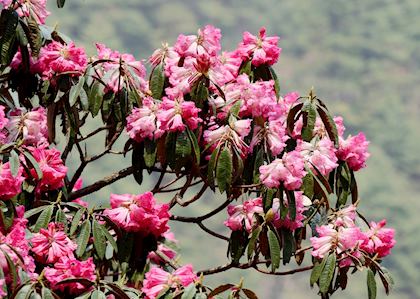
Visiting Nepal in March - May
March marks the beginning of spring, when temperatures increase and rhododendrons bloom. Days are longer during March and April, making them perfect for trekking, although temperatures are still cool at night. It's a popular time to travel, so plan well in advance. May is one of the warmest months of the year but will bring cloud and showers before the monsoon arrives.
- Holi festival is becoming more well-known around the world, but it isn't just an Indian festival; it's celebrated across the cities and towns of Nepal every March too.
- Rhododendron season (March and April): Nepal’s landscapes change colour in the spring as a range of rhododendron species spread across the hills and mountains, changing colour according to altitude from reds to pinks and whites.
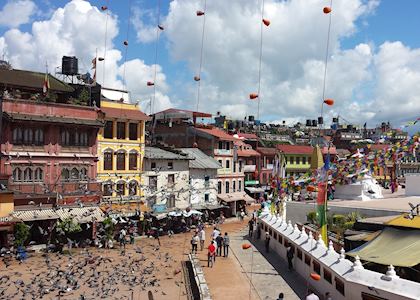
Visiting Nepal in June - August
The monsoon season occurs from June through to August. Days are warm (up to 30°C), wet and with high humidity. Due to Nepal’s topography, rains often occur at night, resulting in beautiful morning scenery. Although we’d advise against trekking at this time of year, city sightseeing is still possible and quieter than peak periods.

Visiting Nepal in September - November
As the monsoon dissipates in September, Nepal welcomes beautiful clear skies, fresh air and incredible views. October and November are two of the best months to visit as dry days make trekking easier and offer good visibility. The verdant landscapes following the rains are ideal for photographers.
Nepal Climate Guide
Why travel with audley.
- 100% tailor-made tours
- Fully protected travel
- Established for over 25 years
- 98% of our clients would recommend us

Travel advice
Practical tips for travelling to Nepal, from social protocols to guidance on money matters, with a link to the latest FCDO travel advice.

Request our brochure
Covering all seven continents, The World Your Way shows you how you can see the world with us. It features trip ideas from our specialists alongside hand-picked stays and experiences, and introduces our approach to creating meaningful travel experiences.
Trip ideas and travel guides for exploring Nepal
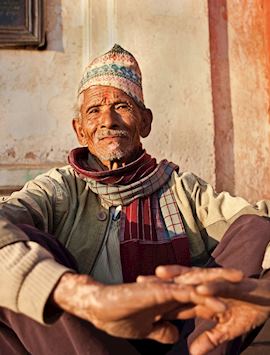
Kathmandu Valley discovered
13 days from £4,495pp

Discover Nepal
15 days from £5,950pp
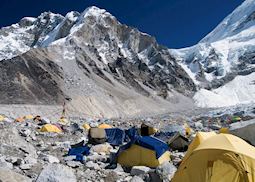
Nepal trekking: walking on the roof of the world
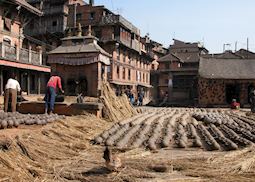
There’s more to Nepal than trekking: our highlights guide
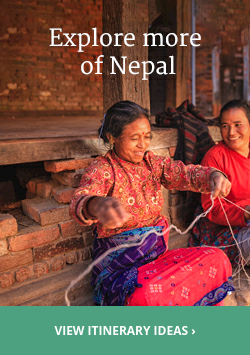
Best Time To Visit Nepal

Nepal through the seasons
The best time to visit Nepal is during the months of October and November. The monsoon is over, which means magnificent, green, lush vegetation as well as clean air – the perfect time to explore the country in all its beauty, especially given the mild temperatures. This is also the time the views of the peaks of the Himalayas are nearly picture perfect.
May is considered low season and we recommend not visiting the country from June to mid September.
Best Time To Visit
We recommend.
- The mountain views are the best in winter so you could opt for a short trek at low altitudes
- Visit Chitwan National Park and try and spot the big five – the one-horned rhino, the Royal Bengal tiger, the Asian elephant, leopard and the Himalayan Sloth bear
- Witness the colorful Maha Shivratri celebrations (A Hindu festival worshipping Lord Shiva) at the Pashupatinath Temple
- Head out to one of the popular trekking trails in the Everest or Annapurna. But book early as these are usually in high demand!
- Get the adrenalin flowing with a white water rafting trip
- Fly and get up close and personal with the Everest, as you soak in stunning aerial views of the Tibetan Plateau’s lakes and glaciers
- Enjoy the festivities around the Nepali New Year
- Get the adrenalin flowing with a short kayaking trip given the weather will be warm
- Spend time at the several restaurants across Kathmandu sampling Nepalese cuisine, or participate in a cooking class at a local’s home
- As the Mustang region falls in the rain shadow area of the Himalayas, it is relatively dry during this time, which means you can trek in the upper and lower Mustang region
- Nepal’s rice fields will be a lush green at this time, so why not capture stunning photographs of the panoramic landscape?
- Enjoy the various trekking trails around Pokhara, with its crystal clear lakes, turbulent rivers, deep gorges, and picturesque valleys
- Be part of the Dashain, the most auspicious religious celebration in the country, which usually begins end September and head into October
- Visit the small town of Nagarkot to savor panoramic views of the Himalayas and get a taste of village life
- Stroll through Kathmandu’s backstreets, catching glimpses of art and daily lives
- Kathmandu Valley is a World Heritage Site so make sure you visit the Durbar Squares, Patan and Bhaktapur, the Buddhist stupas and the Hindu temples
- Attempt one of the most popular long treks (21 days), the Annapurna trek, which takes you along the edge of the Tibetan Plateau and through the Thorung La Pass (5,400 meters)
- To catch a glimpse of Nepali village life, stop off at the quaint Newari village of Bandipur, en route to Pokhara or the high-altitude Sherpa village of Namche Bazaar in the Everest region
- Tihar or the festival of lights is usually celebrated in Nepal in November and is the country’s second-biggest religious festival
- Visit the town of Dhulikhel with its panoramic views of the Himalayan range, enchanting temples, and exquisite local handicrafts
- Indulge in a spot of mountain biking
Best Time to Visit Nepal by Season
The weather patterns are largely predictable. There are four seasons in Nepal:
- Spring from March to May
- Summer from June to August
- Autumn from September to November
- Winter from December to February. The monsoon season lasts from late June to mid-September, while it is relatively dry the rest of the year.

What to Pack for Nepal
There are largely no clothing restrictions in Nepal and you can wear what is most comfortable and weather appropriate. Choosing to be formal or casual is entirely up to you. Traveling in mountainous regions means experiencing a wide range of temperatures across 24 hours. During the day it can be quite warm, whereas at night temperatures can drop dramatically. Crossing over a pass requires an extra layer of clothing just for an hour or two. Lightweight and tropical clothes with umbrellas are advised from June to August. Between October and March, lightweight clothes with a coat for the evenings and warm clothing for the mountainous areas are recommended.
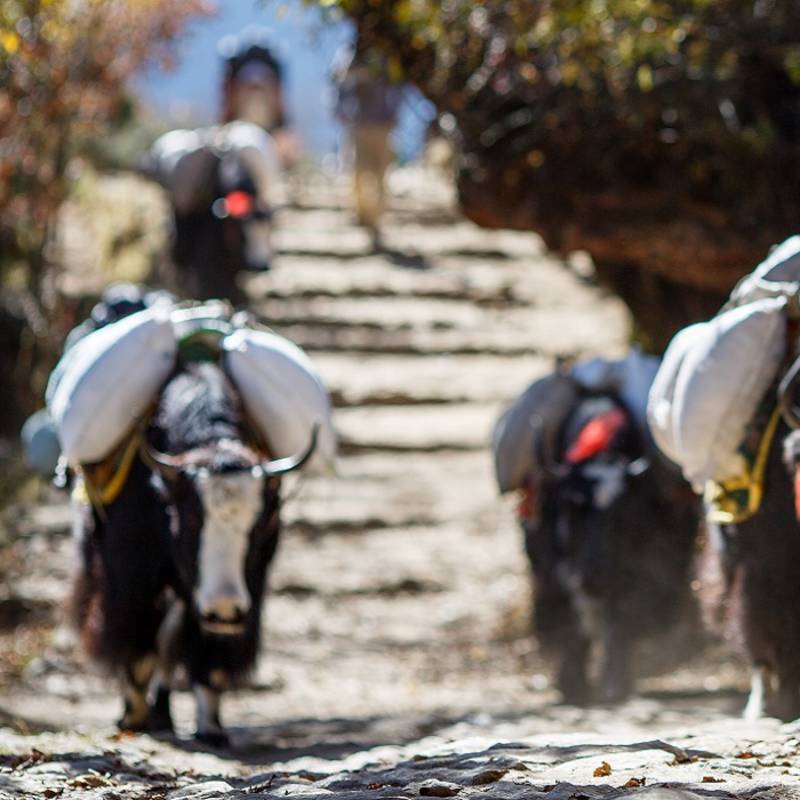
Popular Trips to Nepal
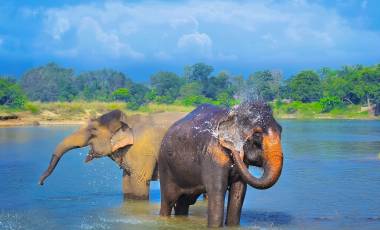
Nepal & Bhutan: Highlights
Discover the Himalayan kingdoms of Bhutan and Nepal on this 16-day tour. Start your journey in Kathmandu, the capital of Nepal, and take in its magnificent UNESCO World Heritage sites. Go on an exciting safari at the Royal Chitwan National Park and bask in panoramic mountain views in the scenic town of Dhulikhel. Continue your…

Classic Nepal for Beginners
From its lofty mountains to its warm people, Nepal is yours to discover! Home to enchanting UNESCO World Heritage sites, give in to Kathmandu’s mesmeric charm before you tackle lofty heights at Pokhara. In Chitwan, befriend a herd of elephants or laze by the Rapti, and soak in the undiscovered, tranquil charm of Dhulikhel. Your…
Best Places To Visit

Kathmandu is a Himalayan valley kingdom, cradled within the foothills of mighty peaks. The city is home to seven UNESCO World Heritage sites and several other attractions, such a carved rose-brick pilgrimage sites, artistic workshops, and cafes and courtyards brimming with friendly local families.

Pokhara has it all – a picturesque valley nestled amid majestic mountains, glorious adventure trails and delicious cuisine! Originally envisioned as a center of commerce, the city’s roots can be traced back to the 17th century, when it featured on the trade route between India and China.
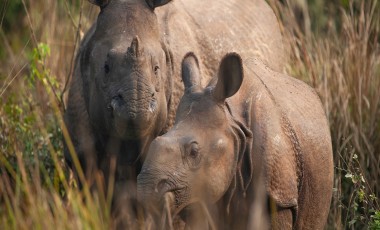
Chitwan: A wholly different experience! Chitwan is home to one of Asia’s finest National parks and one of the most traditional and conservative indigenous people of Nepal – the Chepangs.

Dhulikhel: Undiscovered gem Dhulikhel is a scenic and ancient town located east of Kathmandu with panoramic views of the Himalayan range, enchanting temples, exquisite local handicrafts, and friendly and intriguing culture.

The second highest point on the valley rim at an elevation of 7,200 feet, Nagarkot boasts panoramic views of the Himalayas and is ‘so near yet so far’ from the maddening crowd of a bustling city.
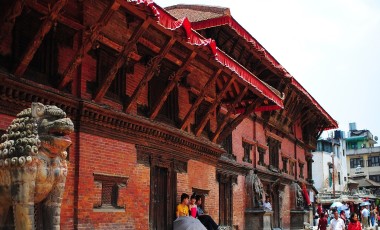
Patan is one of three royal cities in the Kathmandu Valley, located on the southern side of the Bagmati River and about half a mile south of Kathmandu.
Things To Do
From towering mountain peaks to incredible hiking opportunities and cultural delights – Nepal holidays are a joy! Our destination experts share their personal favorite highlights.
Travel Guide
Discover the most essential details before you travel to Nepal, from visa formalities to combating altitude sickness in the Himalayas, and everyday traditions, in our Nepal travel guide.
From the Blog
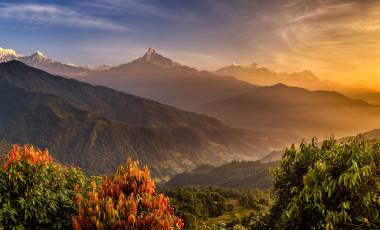
Climb every mountain: Why you need to plan a Nepal holiday
On your Nepal holiday, find spiritual bliss in the ancient temples of Kathmandu, many of them UNESCO World Heritage Sites, bathe elephants at Chitwan National Park, or challenge yourself with treks in the Himalayas.
What Our Guests Say

The Enchanting Difference
Authentic & unique.
Our award-winning, licensed local guides provide incredible insights and exclusive experiences for you.
Personalized & Private
Our experts completely customize your private tour to match your interests and preferences.
High-Quality Experiences
All our accommodations and services are personally tested by our team.
Fully Supported Travel
You’ll have a personal and dedicated trip coordinator, backed by 24/7 support in case of emergencies while you’re traveling.
Financial Protection & Flexibility
Your booking is flexible and completely secure with us.
Safe & Secure
Your safety and well-being are our top priorities.
Do you have a vacation in mind? Personalize your itinerary with our Trip Builder.
Best time to visit Nepal: A comprehensive guide by a local
When is the best time to visit Nepal? As someone who lives in this breath-taking country, I often get asked this question by eager travellers looking to explore the wonders of Nepal. Well, you’re in luck! In this article, we’ll dive into the best time to visit Nepal and provide you with all the essential information you need to plan your trip.
As someone who has been living in Kathmandu for three years now, I have experienced all kinds of weather, all seasons and sadly also all levels of pollution . So, let’s embark on this journey together and discover when you should pack your bags and head to this Himalayan paradise. Trust me, as a local, I know a thing or two about the perfect time to visit!
Table of Contents
Travelling to Nepal?
- Read my guide on Kathmandu Airport and learn how to get from Kathmandu Airport to thamel.
- If you are trekking you will need good gear such as trekking shoes and sleeping bags .
- I would recommend booking an Everest flight ! They are absolutely amazing.
- Book a cooking class. I can personally recommend the cooking class by Kalpana . She is so sweet!
- Don’t forget to visit the UNESCO heritage sites when in Kathmandu!
Why is it important to understand the best time to visit Nepal?
Well, there are a few reasons. First and foremost, Nepal has a monsoon season that can make trekking dangerous and downright unpleasant. Secondly, there’s a pollution season which means life in the Kathmandu Valley isn’t much fun, and visibility is severely impacted. So, let’s break it down and find out when you can enjoy Nepal at its finest.
Monsoon Season: June to September
During the monsoon season, Nepal experiences heavy rainfall, making trekking trails slippery, muddy, and prone to landslides. While the rain brings life to the lush green landscapes, it also means that those epic mountain views are often hidden behind a veil of clouds. So, if you’re planning to conquer those Himalayan peaks or simply enjoy some scenic strolls, this might not be the best time to visit Nepal.
Pollution Season: December to February

As winter sets in, the Kathmandu Valley experiences a significant increase in air pollution. The combination of vehicle emissions, dust from construction sites, and smoke from burning wood and waste creates a thick smog that blankets the city. This not only affects the quality of life for locals but also impacts visibility for travellers looking to enjoy the stunning vistas. So, if you’re hoping for crystal-clear views and easy breathing, you might want to avoid visiting during these months.
Keep in mind that even during March, April and May you can experience heavy pollution in the Kathmandu Valley. Due to global warming, Nepal has had a pretty bad run of forest fires. In the three years that I have lived in Nepal, there have been two years where Kathmandu was the most polluted place on earth in April due to these forest fires.
The Best Time to Visit Nepal: October to November and March to May
Now that we’ve covered when not to visit, let’s talk about the best time to visit Nepal! The months of October to November and March to May offer the most favourable conditions for travellers. During these periods, the weather in Nepal is generally clear and stable, providing excellent visibility for those jaw-dropping mountain panoramas.
In October and November, you’ll experience pleasant temperatures and minimal rainfall – perfect for trekking and exploring Nepal’s diverse landscapes. Plus, the post-monsoon season means that the countryside is lush and vibrant, making for some truly stunning photo opportunities.
From March to May, the temperatures begin to rise, and the rhododendron forests burst into a riot of colour. This is also an ideal time for wildlife enthusiasts, as many of Nepal’s national parks come alive with activity during these months.
Visiting Nepal in different seasons
So, when is the best time to visit Nepal? The answer ultimately depends on your preferences and what you want to experience during your trip. Each season offers its own unique charm and challenges, but as a local, I can confidently say that October to November and March to May are the most favourable times to explore this enchanting country. Whether you’re an avid trekker, a culture enthusiast, or a wildlife lover, visiting Nepal in different seasons will undoubtedly leave you with unforgettable memories and a deep appreciation for this Himalayan gem. So, pack your bags, and let’s embark on this adventure together!
Spring in Nepal (March-May): A Blooming Adventure
Spring in Nepal (March-May) is hands down the best time to visit Nepal for trekking . The weather is pleasant, the skies are clear, and the landscapes are bursting with vibrant colours. So, if you’re looking to embark on an unforgettable trekking adventure, look no further than springtime in Nepal. Let’s dive into the specifics of what makes this season so special.
Best trekking trails during spring:
Spring in Nepal offers a plethora of trekking options for both seasoned trekkers and beginners alike. Some of the best trekking trails during spring include:
- Everest Base Camp Trek
- Annapurna Circuit Trek
- Langtang Valley Trek
- Manaslu Circuit Trek
- Upper Mustang Trek
Weather conditions and temperatures during spring in Nepal:
During spring in Nepal, the weather is generally stable, with daytime temperatures ranging from 15°C to 25°C (59°F to 77°F) at lower altitudes. As you ascend higher, the temperatures can drop to below freezing at night, so it’s essential to pack warm layers for those chilly evenings.
Popular attractions and activities:
Aside from trekking, spring in Nepal offers a variety of attractions and activities for travellers to enjoy:
- Witness the spectacular rhododendron blooms in the forests
- Explore the ancient cities of Kathmandu, Bhaktapur, and Patan
- Visit the UNESCO World Heritage Sites , such as Pashupatinath Temple and Boudhanath Stupa
- Experience the vibrant Holi Festival (Festival of Colours) in March
- Go on a wildlife safari in Chitwan National Park or Bardia National Park
Spring in Nepal is undoubtedly the best time to visit Nepal for trekking and exploring the UNESCO sites in this incredible country. With its pleasant weather, clear skies, and an abundance of trekking trails, there’s no better time to lace up your hiking boots and embark on the adventure of a lifetime.
Summer in Nepal (June – August): Embracing the Monsoon Magic
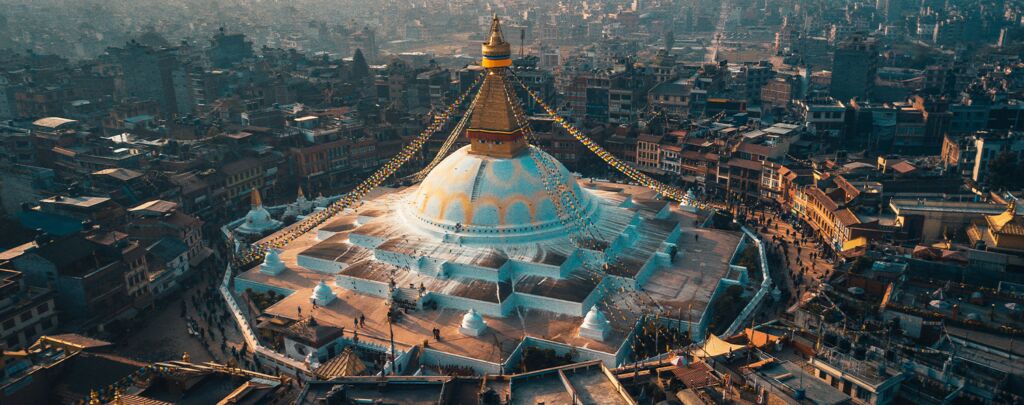
Summer in Nepal is a time when the monsoon rains take centre stage and transform the country into a lush, green paradise. While the monsoon season may not be the ideal time for trekking, it does offer its own unique charm and opportunities for exploration. So, let’s dive into what makes summer in Nepal worth considering for your next adventure.
Best places to visit in Nepal during summer:
Despite the monsoon rains, there are still plenty of amazing places to visit in Nepal during summer. Some of these include:
- Mustang and Dolpo regions : These areas lie in the rain shadow of the Himalayas, making them ideal destinations for trekking during the monsoon season.
- Pokhara : This picturesque lakeside city offers a more relaxed atmosphere and is perfect for enjoying leisurely boat rides on Phewa Lake.
- Lumbini : The birthplace of Lord Buddha, Lumbini is a significant pilgrimage site and offers a peaceful retreat from the bustling cities.
- Chitwan National Park : The monsoon season is an excellent time for wildlife spotting, as many animals are more active during this time.
Best treks in Nepal during monsoon:
While many trekking trails may be off-limits due to the rains, there are still some fantastic treks to consider during the monsoon season:
- Lower Dolpo Trek
- Nar Phu Valley Trek
Advantages and challenges of visiting during monsoon season:
Visiting Nepal during the monsoon season comes with its own set of pros and cons. Here are some advantages and challenges to consider:
Advantages:
- Fewer tourists, meaning less crowded trails and attractions
- Lush, green landscapes
- More affordable accommodation and travel options
Challenges:
- Unpredictable weather conditions
- Slippery and muddy trekking trails
- Travel within Nepal by bus can take twice to three times as long due to mudslides
- Limited visibility for mountain views
Monsoon time in Nepal:
The monsoon season in Nepal typically lasts from June to August (sometimes as late as September), with the heaviest rainfall occurring in July.
Weather conditions and temperatures:
During the monsoon season, expect hot and humid conditions with temperatures ranging from 20°C to 30°C (68°F to 86°F) in the Valley. Heavy rainfall is common, particularly in the afternoons and evenings .
While summer in Nepal may not be the most popular time to visit due to the monsoon rains, it still offers plenty of opportunities for exploration and adventure . With fewer tourists, lush landscapes, and unique trekking options , summer in Nepal is definitely worth considering for those who don’t mind embracing the monsoon magic. Just don’t forget to bring your raincoat!
Autumn in Nepal (September-November): A Himalayan Haven

Autumn in Nepal (September-November) is hands down the best time to visit Nepal for trekking and exploring the majestic Nepal Himalayas . With clear skies, pleasant temperatures, and stunning landscapes, it’s no wonder that autumn is a favourite among travellers. So, let’s dive into the specifics of what makes this season so special.
Best trekking trails during autumn:
Autumn in Nepal offers a plethora of trekking options for both seasoned trekkers and beginners alike. Some of the best trekking trails during autumn include:
Weather conditions and temperatures during autumn in Nepal:
During autumn in Nepal, the weather is generally stable, with daytime temperatures ranging from 15°C to 25°C (59°F to 77°F) at lower altitudes. As you ascend higher, the temperatures can drop to below freezing at night, so it’s essential to pack warm layers for those chilly evenings.
Aside from trekking, autumn in Nepal offers a variety of attractions and activities for travellers to enjoy:
- Explore the ancient cities of Kathmandu , Bhaktapur , and Patan
- Experience the vibrant Dashain and Tihar festivals, celebrated throughout the country
- Enjoy paragliding , mountain biking , or white-water rafting in Pokhara
Autumn in Nepal is undoubtedly the best time to visit Nepal for trekking and exploring the incredible Nepal Himalayas . With its pleasant weather, clear skies, and an abundance of trekking trails, there’s no better time to lace up your hiking boots and embark on the adventure of a lifetime.
Winter in Nepal (December-February): A Chilly Adventure
Winter in Nepal may not be the most popular time to visit, but it certainly has its charms. With fewer tourists, you can enjoy a more peaceful and authentic experience. Plus, the crisp, clear skies (once you make your way out of the Kathmandu valley and into the mountains) offer some of the best mountain views you’ll ever witness. So, let’s explore what winter in Nepal has to offer.
Mustang Nepal in winter
The Mustang region, also known as the “Forbidden Kingdom,” is a hidden gem that’s perfect for winter exploration. Unlike other parts of Nepal, Mustang is located in the rain shadow of the Himalayas, meaning it receives significantly less precipitation and pollution. This makes it an ideal destination for trekking during the winter months when other trails may be snowbound or inaccessible.
Best places to visit in Nepal during winter
While some areas may be off-limits due to snow and cold temperatures, there are still plenty of amazing destinations to explore during winter in Nepal. Some of the best places to visit include:
- Pokhara : A lakeside city with stunning mountain views and a plethora of adventure activities
- Chitwan National Park : A wildlife haven where you can spot rhinos, elephants, and even Bengal tigers
- Lumbini : The birthplace of Lord Buddha and a UNESCO World Heritage Site
- Nagarkot : A hill station with some amazing hotels nearby offering panoramic views of the Himalayas, including Mount Everest
Winter trekking trails
While some trails may be closed due to snow, there are still several fantastic winter trekking trails available for those looking for a chilly adventure. Some popular options include:
- Ghorepani Poon Hill Trek
- Tamang Heritage Trail
- Everest Panorama Trek
Winter in Nepal temperatures
During winter in Nepal, temperatures can vary greatly depending on your altitude. In lower regions like Kathmandu and Pokhara, daytime temperatures can range from 9°C to 12°C (48°F to 54°F), while night-time temperatures can drop to near freezing. In higher altitudes, temperatures can plummet well below freezing, so it’s essential to pack appropriate clothing and gear .
While winter in Nepal may not be the most popular time to visit due to temperatures and pollution in Kathmandu valley, it offers a unique and peaceful experience for those willing to brave the colder temperatures. With stunning mountain views once outside Kathmandu, fewer tourists, and a variety of trekking trails and destinations to explore, winter in Nepal is a season worth considering for your next adventure.
Visiting Nepal from India and Tibet

If you’re planning a trip to Nepal from India or Tibet, you might be wondering when the best time to visit is. Well, worry not, my fellow adventurers! I’ve got you covered. In this section, we’ll explore the best time to visit Nepal from India and Tibet, so you can make the most of your journey.
Best time to visit Nepal from India
When it comes to visiting Nepal from India, the ideal time is during the months of October to November and March to May . These periods offer the most favourable weather conditions, making it perfect for exploring Nepal’s diverse landscapes and engaging in various outdoor activities.
Here’s a quick breakdown of what you can expect during these months:
- October to November: Clear skies, pleasant temperatures, and minimal rainfall make this an excellent time for trekking and sightseeing. The post-monsoon season also means that the countryside is lush and vibrant – perfect for photography enthusiasts.
- March to May: This period offers stable weather conditions and excellent visibility for those awe-inspiring mountain views. The temperatures are also pleasant, making it comfortable for trekking and other outdoor activities.
Best time to visit Nepal from Tibet
If you’re planning a trip to Nepal from Tibet, the best time to visit is also during the months of October to November and March to May . These months offer clear skies, stable weather conditions, and pleasant temperatures – ideal for trekking, sightseeing, and immersing yourself in Nepal’s rich culture.
The best time to visit Nepal from India and Tibet is during the months of October to November and March to May. These periods offer the most favourable weather conditions, allowing you to fully experience the beauty and charm of this Himalayan paradise.
Best time to visit Tibet from Nepal
So, you’ve decided to embark on an epic adventure to the mystical lands of Tibet and Nepal. But when is the best time to visit these enchanting destinations? Fear not, intrepid traveller! I’m here to help you navigate the ins and outs of planning your trip, ensuring you experience the very best that Tibet and Nepal have to offer.
When planning your journey from Nepal to Tibet, timing is everything. The ideal months to visit Tibet are from April to October, with two distinct periods offering unique experiences:
- April to June: Springtime in Tibet is a sight to behold. With blooming flowers, lush greenery, and comfortable temperatures, this is an excellent time for sightseeing and exploring the region’s stunning landscapes. Plus, you’ll have the chance to witness the Saga Dawa Festival, a significant Buddhist event held in May or June.
- September to October: As the monsoon season comes to an end, Tibet’s skies clear up, offering breath-taking views of the majestic Himalayas. This period is perfect for trekking and photography, as well as attending the lively Shoton Festival in September.
However, it’s worth noting that July and August can be quite rainy in Tibet, so it’s best to avoid these months if you’re not a fan of getting drenched.
Celebrating Nepalese Festivals

Nepalese festivals are a vibrant and colourful showcase of the rich culture and traditions of this beautiful country. If you’re lucky enough to visit Nepal during one of these celebrations, you’re in for a treat! So, without further ado, let’s dive into the world of Nepalese festivals and discover when they’re usually celebrated.
• Dashain : This is the most significant and longest festival in Nepal, usually celebrated in September or October. It’s a time for family reunions, feasting, and blessings from elders.
• Tihar : Also known as the Festival of Lights, Tihar is often celebrated in October or November. The five-day festival honours various animals and the goddess of wealth, Laxmi. Look out for Kukur Tihar (the festival of dogs) and Laxmi Puja.
• Holi : The Festival of Colours is a fun-filled event celebrated in March. People throw coloured powders and water at each other to mark the victory of good over evil.
• Teej : This women-centric festival takes place in August or September. Women fast, pray for marital bliss, and dance in their finest red attire.
• Janai Purnima : Celebrated in August, this Hindu festival involves changing the sacred thread worn by Brahmin men and offering prayers to Lord Shiva.
• Buddha Jayanti : This significant Buddhist festival commemorates the birth, enlightenment, and death of Lord Buddha. It’s celebrated in April or May.
• Shivaratri : Dedicated to Lord Shiva, this festival takes place in February or March. Devotees fast, pray, and visit Shiva temples throughout the night.
• Gai Jatra : The Cow Festival is held in August or September to honour deceased family members. Colourful processions featuring cows or cow effigies fill the streets. Look out for the dancing demons and the cute kids with cow masks!
• Indra Jatra : This eight-day festival in September honours the god of rain, Indra. It features chariot processions, masked dances, and the Kumari – Nepal’s living goddess. Head out to Indra Chowk on the first day!
• Bisket Jatra : Celebrated in April, this New Year festival in Bhaktapur involves chariot processions, tug-of-war contests, throwing around orange powder, and plenty of feasting.
• Maghe Sankranti : This January festival marks the start of warmer days and longer daylight hours. People take ritual baths, visit temples, and enjoy festive foods.
• Chhath Puja : Dedicated to the sun god, this November festival involves fasting, offering prayers at sunrise and sunset, and taking ritual baths in rivers or ponds.
• Lhosar : The Tibetan New Year is celebrated in February or March with colourful decorations, traditional dances, and family gatherings.
• Ghode Jatra : The Horse Racing Festival takes place in March or April, featuring horse races, acrobatics, and other exciting performances.
• Maha Shivaratri Jatra : This grand procession in February or March honours Lord Shiva with chariots, music, and dance performances.
Mani Rimdu : This Buddhist festival in October or November showcases colourful masked dances and rituals performed by monks.
- Nag Panchami: Nag Panchami is a Hindu festival dedicated to the worship of snakes that is celebrated in July or August. During this festival, devotees offer milk and honey to live snakes and worship them as they believe that snakes are protectors of their family and livestock. Look out for the drawings being sold on the street and in markets for a few rupees. People normally hang these on their door!
Visiting Popular Nepalese Destinations
Embarking on a journey to the breath-taking country of Nepal? Lucky you! With its stunning landscapes, rich culture, and warm-hearted locals, Nepal is truly a traveller’s paradise. But when is the best time to visit certain popular destinations in Nepal? Fret not, dear wanderer, for I am here to guide you through the ins and outs of planning your trip to popular Nepalese destinations.
Best time to visit Kathmandu, Nepal
Kathmandu is the vibrant capital city of Nepal! When is the best time of year to visit Kathmandu Nepal, you ask? Well, the ideal months to explore this bustling city are from October to November and March to May . These periods offer:
- Pleasant temperatures
- Clear skies
- Minimal rainfall
Perfect for sightseeing, shopping, and indulging in the city’s rich culture and history.
Best time to visit Muktinath Temple, Nepal
Muktinath Temple, a sacred pilgrimage site for both Hindus and Buddhists, is best visited during the months of May to June and September to November . During these times, you can expect:
- Stable weather conditions
- Clear visibility
- Comfortable temperatures
Ideal for trekking and soaking in the spiritual atmosphere of this revered temple.
Best time to visit Mustang, Nepal
The enchanting region of Mustang is best explored during the months of May to September . This period offers:
- Dry weather conditions
- Warm temperatures
Perfect for trekking, exploring ancient monasteries, and immersing yourself in the unique culture of this remote area.
Best time to visit Annapurna Base Camp (ABC), Nepal
For those seeking adventure at Annapurna Base Camp, the best time to visit ABC Nepal is during the months of October to November and March to April . These months provide:
- Clear mountain views
Ideal for trekking and capturing those awe-inspiring panoramas.
Best time to visit Pokhara in Nepal
The picturesque city of Pokhara is best visited during the months of October to November and March to May . During these times, you can expect:
- Pleasant weather
- Stunning views of the Annapurna range
Perfect for boating on Phewa Lake, paragliding, and exploring the city’s many attractions.
Best time to visit Everest Base Camp in Nepal
For those daring souls venturing to Everest Base Camp, the best time to visit Everest Base Camp Nepal is during the months of April to May and September to November . These periods offer:
- Manageable temperatures
Ideal for trekking and experiencing the thrill of being at the foot of the world’s highest peak.
Best time to visit Mardi Himal in Nepal
Mardi Himal, a hidden gem in the Annapurna region, is best explored during the months of March to May and September to November . During these times, you can expect:
- Lush landscapes
Perfect for trekking, photography, and enjoying the serene beauty of this off-the-beaten-path destination.
In conclusion, the best times to visit Nepal are:
- October to November: Ideal for trekking, sightseeing, and photography, thanks to clear skies, pleasant temperatures, and minimal rainfall.
- March to May: Perfect for enjoying stable weather conditions, excellent visibility, and comfortable temperatures for outdoor activities.
Now that you’re armed with the knowledge of the best times to visit Nepal , it’s time to embark on your unforgettable journey! Whether you’re trekking through the breath-taking Himalayas, exploring ancient temples, or immersing yourself in the rich culture and traditions, there’s no doubt that Nepal has something for everyone.
So, don’t hesitate – pack your bags, grab your camera, and get ready to discover the diverse beauty of Nepal throughout the year. Happy travels!
Best time to visit Nepal FAQ
What is the cheapest time of year to go to nepal.
The cheapest time to visit Nepal is during the off-season, from June to September, as hotels and airlines offer discounts due to the rainy season.
How many days in Nepal is enough?
You can experience the best of Nepal in 14-21 days, including time in Kathmandu, Pokhara, and trekking in the mountains.
What is the hottest month in Nepal?
The hottest month in Nepal is May, with an average temperature of 28°C in the lowlands and 16°C in the mountains.
What is the off season of Nepal?
The off season in Nepal is from June to September, during the monsoon season, when heavy rains and landslides make travel difficult.
Which season is best for Pokhara?
The best time to visit Pokhara is from September to November, when the skies are clear and the weather is dry, making it perfect for trekking and outdoor activities.
Which is the coolest month in Nepal?
The coolest month in Nepal is January, with an average temperature of 9°C in the lowlands and -4°C in the mountains.
Which month rains a lot in Nepal?
Nepal receives the most rainfall from June to August, during the monsoon season, with an average of 1,000-1,500 mm of rain.
Which is colder, Kathmandu or Pokhara?
Pokhara is slightly warmer than Kathmandu, with average temperatures ranging in kathmandu from 11-23°C, while Pokhara’s temperatures range from 16-27°C.
Can you see snow in Pokhara?
Snowfall is rare in Pokhara, but you can see snow-capped mountains in the distance, including the Annapurna range.
What is the coldest city in Nepal?
The coldest city in Nepal is Jumla, located in the western Himalayan region, with average temperatures around -3°C in January.
Which is the hottest city in Nepal?
The hottest city in Nepal is Biratnagar, located in the southern Terai region, with temperatures reaching up to 40°C in May and June.
Is there snowfall in Muktinath?
Yes, there is snowfall in Muktinath, particularly during the winter months from December to February.
Which month is best for Muktinath?
The best time to visit Muktinath is from September to November, when the skies are clear, and the weather is dry, making it easier to trek to the temple.
Which places in Nepal is best for snowfall?
The high-altitude regions of the Himalayas, including Everest Base Camp, Annapurna Circuit, and Langtang, receive heavy snowfall during the winter months.
Leave a Comment Cancel Reply
You must be logged in to post a comment.
Travel Guide
Best Time to Visit Nepal – A Seasonal Guide
By Suraj Katwal
Updated On Nov 4, 2022
This article will help you to find the best time to visit Nepal throughout the year. The best season to visit Nepal is Autumn Season (Late September – Late December).
Visitors want to travel when the weather is clear and favorable for magnificent scenery.
In this guide, you will learn about weather with different seasons as well as the average temperature in Kathmandu valley.
When is the Best Time to Visit Nepal ?
We’ll explore more, which is the best time to visit Nepal. Please refer to the following tips before planning your trip to visit Nepal.
Weather in Nepal
Nepal is a landlocked country. Topographically, Nepal is divided into three regions, the Himalayas, the Middle Hills, and the Terai. Depending upon the altitude, the weather varies.
The Himalayan Region lies in the Northern part of the country above 3,353 m in altitude. The Himalayan Region almost covers 15% of the whole area.
The World’s Highest Peak, Mount Everest lies in this region. The Himalayan Region is cold and famous for trekking. Everest Base Camp, Annapurna Base Camp is the favorite destination for high-altitude treks.
Hilly Region lies in the southern part, which almost covers 68% of the total area. Its altitude ranges above 600 meters. The Hilly region is less cold than the Himalayan Region.
The Terai region is usually hotter as the altitude varies from 300 meters to 600 meters. It covers around 17% of the total land.
Related Reading: What Time is it in Nepal?
1. Spring Season (March-May)
In this season, the temperature is softly warm at low altitudes while moderate at higher altitudes. This is the best time to Visit Nepal if you want to explore the beauty of this beautiful country.
It’s time for the flowers to blossom as you can see beautiful red rhododendrons – the national flower of Nepal above 2000 meters. You can explore the beauty of Mountain Views.
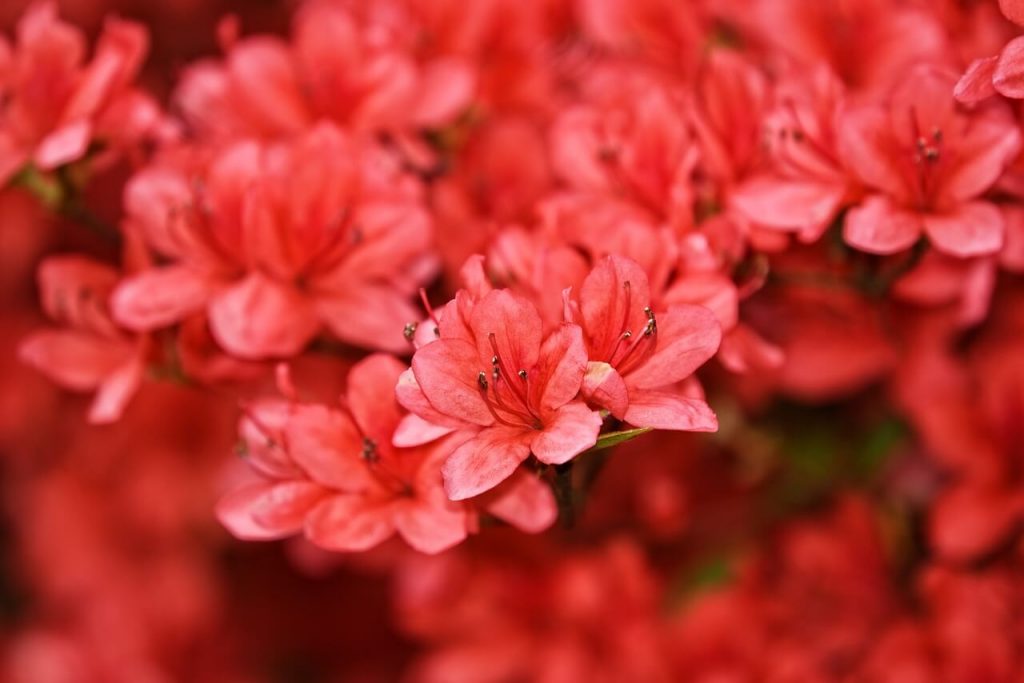
2. Summer Season (June – August)
This is the season when the temperature rises higher 30-degree Celsius. This season is also called Monsoon Season. It is hot and wet everywhere as there is daily rainfall with thunderstorms. It is not the best season to visit Nepal.
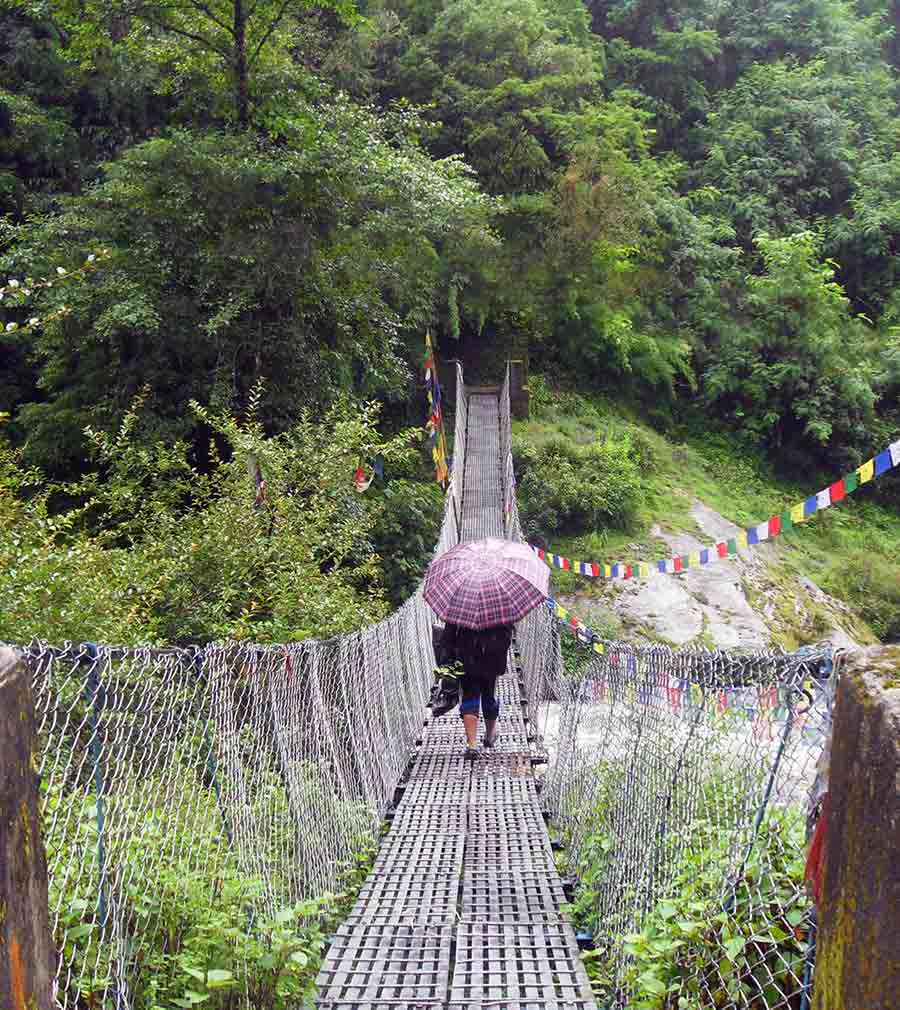
3. Autumn Season (September – November)
Well, Autumn Season is the best tourist season in Nepal. The weather in this season is amicable for trekking, hiking, etc.
You can find many tourists booking their tickets to Nepal for the mesmerizing view of the mountains. This is also the season of the Biggest Festival Dashain in Nepal , celebrated by Hindus followed by another festival Tihar .
4. Winter Season (December – February)
As you know, In the winter season the weather is cold. At higher altitudes, there will be heavy snowfall . This is also the best season to visit Nepal if you want to explore lower elevations.
Related Reading: What to wear in Nepal in January?
Temperature in Kathmandu
Nepal has its own six seasons. The temperature varies according to the elevation. We are going to list the monthly average temperature of Kathmandu the (Capital City of Nepal).
Must Read: Getting Around Nepal
This best time to visit Nepal guide is going to help you to choose the best season to travel to Nepal. As Nepal has numerous beautiful destinations, any season is the best season to explore different regions.
If you have any questions/queries then please feel free to comment below. We will try to reply ASAP.
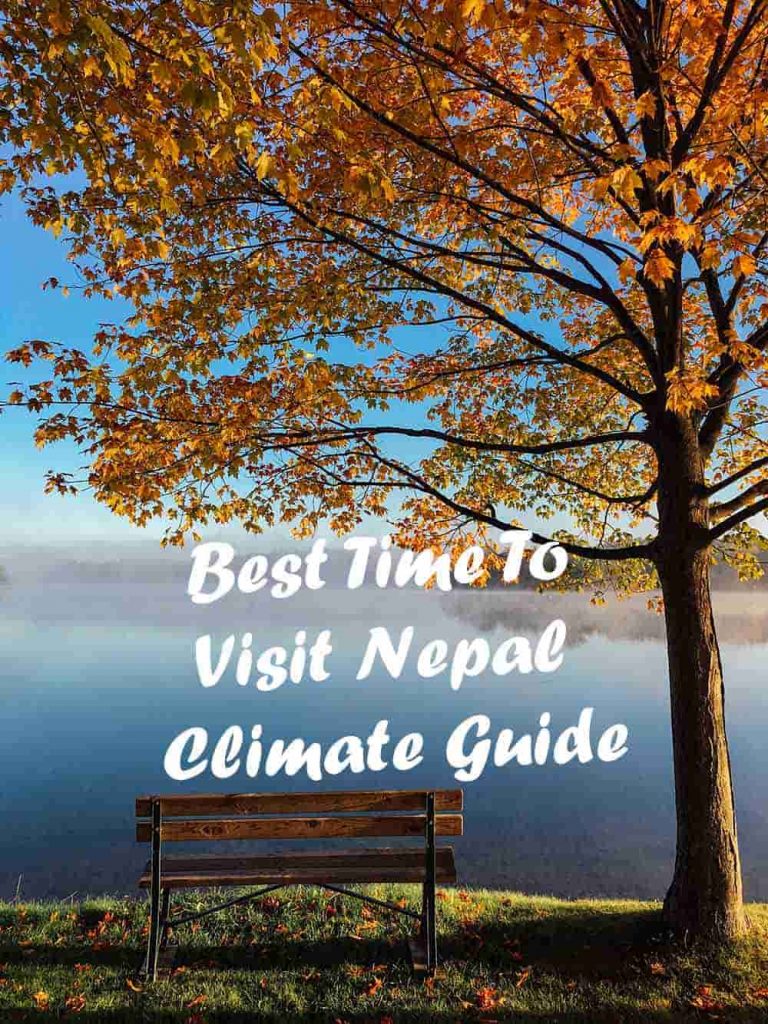
Suraj Katwal
Suraj is a travel enthusiast who believes in finding solace in the heart of nature. He enjoys exploring new destinations, different culture, and encouraging people to travel.
Travel Resources
Hotel & Flight
Searching for the best hotels & flight tickets to visit Nepal? Check out the best deals.
Related Articles...
Yeti Airlines in Nepal
Buddha Airlines in Nepal
Kathmandu Airport Guide – Tribhuvan International Airport
Tipping in Nepal: How Much to Tip and When?
Can US Citizens Drive in Nepal?
Dhap Dam – Location, Distance, Hiking Route
Do US citizens need visas for Nepal?
How much dollar can I carry to Nepal?
Leave a Comment Cancel reply
About stunning nepal.
Stunning Nepal is a travel blog that intends to provide travel tips, references & guides, things to do & also your guide for hiking & trekking in Nepal.
Things To Do
Trekking in Nepal
Food and Festivals
Privacy Policy
Get in Touch
Stunning Nepal
Address: Dhanawantari Marg, Kathmandu 44600, Nepal
+977-9808211139
© 2024 Stunning Nepal. All Rights Reserved
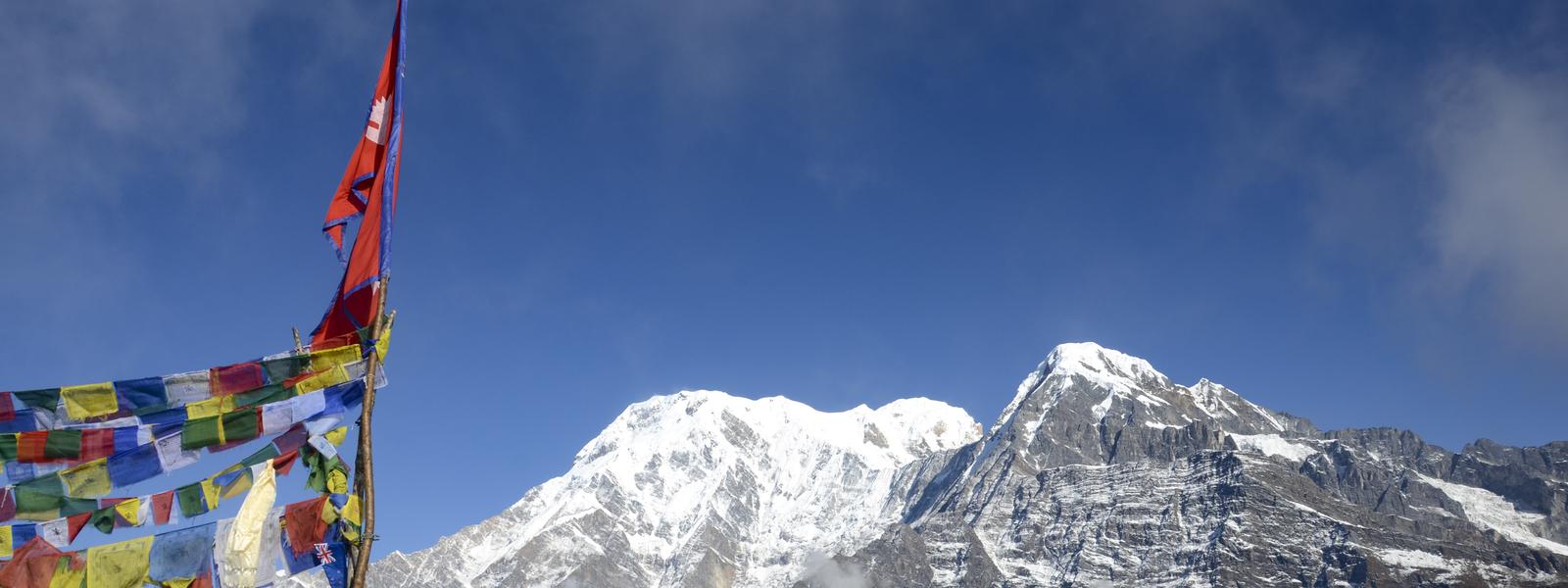
When to go to Nepal
When is the best time to visit Nepal?
The best time to visit Nepal is during Autumn with dry days, clear blue skies and great trekking conditions. Spring is also popular as the temperatures begin to rise, and the countryside looks even more spectacular.
Nepal weather & when to go
Pick a month below.
Weather seasons are becoming less predictable but peak visitor months remain more certain.
Unfollow the herd - avoid the peak months to enjoy fewer crowds, better availability, often lusher countryside and help to spread the economic benefits of tourism.
Weather overview
Nepal monsoon season.
Nepal's annual monsoon takes place between June and August . Fat rain clouds bubble up over the sea south of India and sweep across the country where they collide with the cooler air of the Himalayas, dropping their rain in torrential fashion. Most parts of the country experience sudden sharp downpours, although some mountainous areas remain pretty dry year-round, sheltered from the rain by the mighty Himalayas. The Upper Mustang region and sections of the Annapurna circuit, in particular Jomsom, in the rain shadow gets just 30mm of rain mid-monsoon in August, while Pokhara is drenched in 850mm. Even in peak monsoon season it rarely rains for long periods, and more intrepid visitors will enjoy having the cultural sights and drier trekking trails almost to themselves.
Nepal seasons and climate
Seasons in Nepal can be divided roughly into four seasons, although (as with weather conditions worldwide) these seasons are increasingly blurred. From the lowlands close to the Indian border to the 8,850m peak of Mount Everest, Nepal's climate is hugely altitude dependent. The landscape divides into three quite distinct zones. The Terai zone, located in the south, runs along the border with India, with some areas virtually at sea level. A belt of often humid, jungle and farmland, the temperature in the Terai, for example in Janakpur, can often hit 35°C. It's home to two of the country's most impressive national parks, Chitwan and Bardia, both of which are home to the rare One-Horned Rhino, and iridescently colourful birdlife.
The country’s heartland - Pahar - is a wide stretch of rolling foothills and valleys, where villages perch on the hilltops and bright green paddy fields step down the contours. The Kathmandu Valley is located within this area. Crammed with spectacular ancient cities and villages trapped in time, it's a treasure trove of cultural delights, buzzing markets and streets packed with colour and noise. Temperatures here tend to be pleasantly warm year-round, perfect for exploring, though you’ll need a fleece in the evenings and early mornings during winter months.
At the northern reach of the country, bordering Tibet and rising to exceptionally high altitude, there's the Himalaya mountain range. It's a wildly beautiful panorama of jagged snow-capped mountains, glacial lakes and flower-strewn valleys. No matter where you are in Nepal, on a clear day those lofty peaks loom above everything. In this region, places like Namche Bazaar, which sits at an altitude of 3,450m, experience temperatures of -7°C at night.
Winter in Nepal
Winter occurs from late November to February and is typically rain-free and clear. High altitude areas above 3,000 metres will be snowy and very cold indeed with night time temperatures of -10°C not uncommon. Whilst you won't want to venture towards Everest Base Camp, lower altitude treks are quite feasible at this time of year if you come properly prepared for the chill. Even in the Kathmandu valley and the flat plains it gets cold at night with temperatures hovering around 3°C so you should pack a warm fleece for the evenings. Winter is low season for tourists and a great time of year to visit places like Pokhara and the national parks on the plains.
Spring in Nepal
From March onwards spring makes its appearance, the temperatures climb and the flowers on the hillsides burst into bloom. You'll see vast swathes of pink and red rhododendrons in particular. Spring is a popular time of year to visit Nepal. Long grasses in the national parks have been cut back so visibility for rhino spotting is excellent; trekking conditions are perfect, with daylight hours lasting longer into the evening, and so tea houses and treks at higher altitude open up again. The only downside is the haze that often swathes the peaks at this time of year.
Summer in Nepal
Summer brings the monsoon months of June, July and August with the rains really hitting their peak during August. Flash floods are not uncommon, washing away roads and making some journeys problematic. Internal flights are often disrupted by low-level cloud. It rains daily, though often only for a couple of hours and usually overnight, leaving mornings fresh and bright at first. If you come prepared (pack wet weather gear), and rise early to make the most of the mornings, then a visit to Nepal during summer still has much to offer, especially for cultural pursuits. Daytime temperatures are a warm but not unpleasant 27°C. Trekking isn't totally off the agenda, with certain areas of the mountains tucked in the Himalayan rain shadow. If you venture to Manag, Mustang or Dolpo you'll have many trails to yourself.
Autumn in Nepal
By mid-September the rains have abated and autumn is well on the way. Visibility at this time of year is exceptional as the smog and haze have been washed away by the monsoon. It's the most popular time of year to visit Nepal with conditions ideal for trekking , wildlife viewing and cultural exploration alike. October and November are particularly good months if you want to see Nepalese culture at its most vibrant as two of the most important festivals - Dasain and Tihar - are celebrated at this time. Expect street parades, decorated houses and temples, dancing and singing long into the night.
We think you may like this journey…
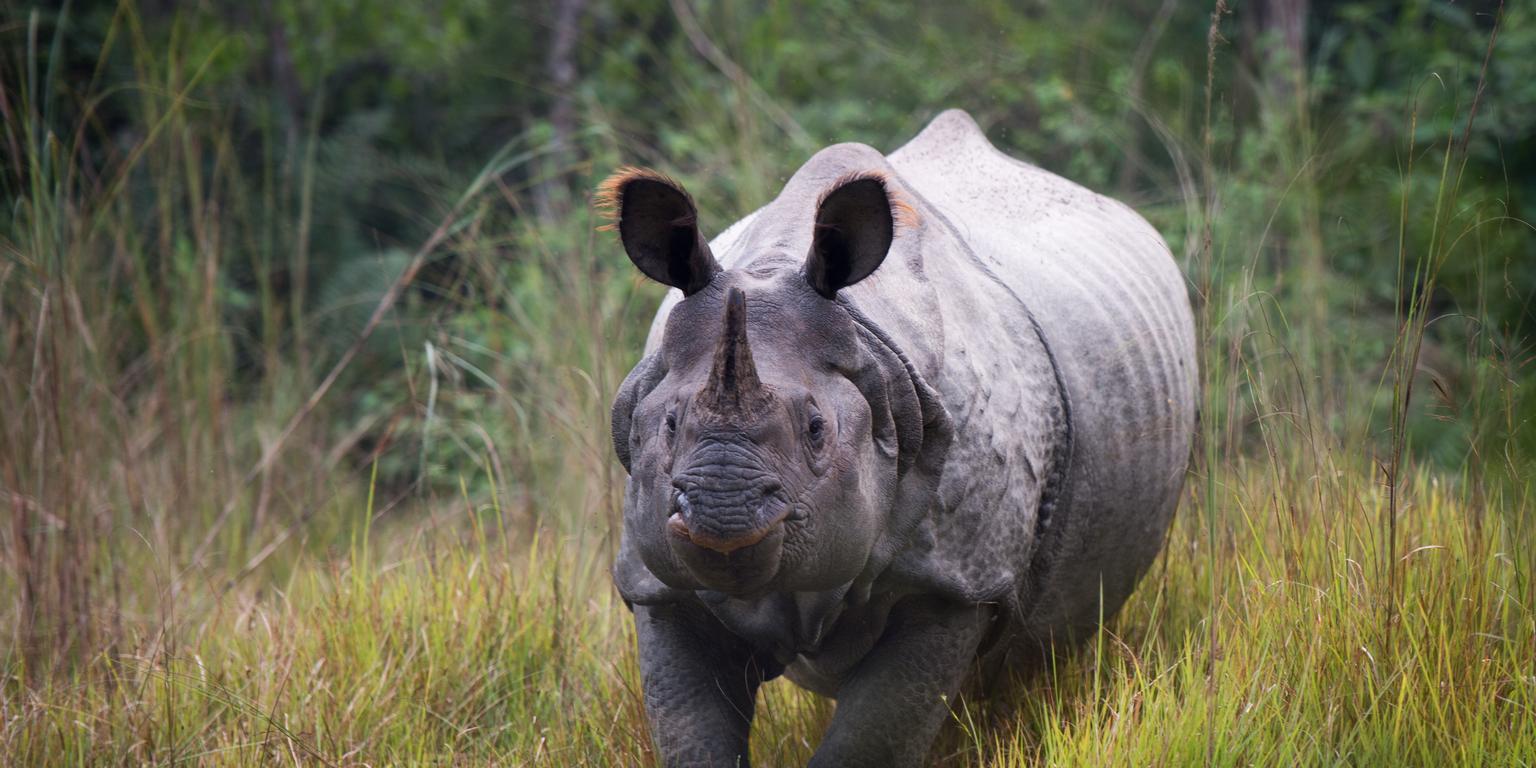
Rhinos & Rhododendrons
Taking an alternative approach to a classic Nepal combination, this journey contrasts the heady and hectic streets of Kathmandu with the open savannah of Chitwan National Park. Slow down to search for tigers and rhinos amid the wilderness, before strapping up your boots for a light trek between two atmospheric lodges in the Himalayan foothills around Pokhara.
Looking for inspiration?
- Search Please fill out this field.
- Newsletters
- Destinations
Your Trip to Nepal: The Complete Guide
:max_bytes(150000):strip_icc():format(webp)/Profilepic_small-825a61251a60463999e3bdc1e5add2a5.jpg)
- Best Time to Visit
- Weather & Climate
- Kathmandu Airport Guide
- Top Destinations in Nepal
- One Week in Nepal
- Tipping Guide
- Getting Around
- Top Things to Do in Nepal
- Complete Guide to Kathmandu
- Top Things to Do in Kathmandu
- Top Things to Do in Pokhara
- Sacred Sites
- Amazing Festivals
- Top National Parks
- Must-Try Food
- Annapurna Circuit
- Manaslu Circuit
- Himalaya Trail
- Facts About Mt. Everest
- Trek to Everest Base Camp
There's a lot to love about small, landlocked Nepal, with its numerous wildlife-filled national parks, ancient Hindu and Buddhist cultures, and more than its fair share of the tallest mountains on Earth . Sandwiched between India to the south and China (Tibet) to the north, the South Asian country's landscape and culture shares similarities with its neighbors, but is also distinctly different. And, despite looking small on the map, its mountainous geography and limited road networks mean that Nepal is stunningly diverse. Popular among trekkers and mountaineers, Nepal is also a fun destination for families, couples, high-budget travelers, and anyone else looking to be surprised and impressed.
Nevertheless, Nepal is a low-income developing country and faces some serious infrastructure challenges. Travelers will have a better time if they're not in a hurry and learn to go with the flow. Here are some important tips for getting the most out of your trip to Nepal.
Planning Your Trip
- Best time to visit : For most outdoor activities in most parts of the country, the best time to visit is from September to November, and from March to May. Winter (December to February) is comfortable at lower altitudes. Traveling during monsoon season (June to August) is not advised, except to areas in the Himalayan rainshadow (Mustang, Dolpo, and others).
- Languages: Nepali and Newari in Kathmandu. Elsewhere, many indigenous and regional languages are spoken, including Maithili, Bhojpuri, Tharu, Gurung, Tamang, and Sherpa. English is spoken as a second language by educated professionals in the main cities.
- Currency: Nepali Rupee (NPR)
- Getting around: Take domestic flights for longer distances, local and tourist buses between the main cities, and private taxis within cities and along major highways.
- Know before you go: Not all of Nepal is at high altitude. It ranges from not much more than sea level on the plains bordering India to 2,700 feet in Pokhara, 4,600 feet in Kathmandu, and 29,000 feet at the summit of Everest. This means how you pack and what you wear should depend on where you're going, and in which season.
Things To Do
Nepal is famous as a mountain adventure playground, and whether you're into high-altitude mountain climbing or gentle walks in the hills, you'll find it. In addition to hiking, you can go whitewater rafting and kayaking, paragliding , zip lining, bungee jumping, and more. But you don't have to be ultra-athletic to enjoy Nepal, as the towns and cities offer cultural and artistic attractions, while the national parks have wildlife safaris and bird watching.
- Go trekking. Trekking trails follow the mountainous paths that Nepalis have been using for centuries, and range from lower-altitude day walks near the main cities to multi-week adventures high in the mountains.
- Tour the temples of Kathmandu. Nepal's capital, Kathmandu , is an ancient city that has traditionally been at the crossroads of trade routes and culture. Its combined Hindu and Buddhist traditions can best be seen in the multitude of temples throughout the Kathmandu Valley, including Boudhanath Stupa, Swayambhunath Stupa, Pashupatinath Temple, and the Durbar Squares in Kathmandu, Patan, and Bhaktapur.
- Join a jungle safari. Spot rhinos, crocodiles, elephants, monkeys, birds, deer, and perhaps even the Royal Bengal Tiger in Nepal's jungle parks, including Chitwan, Bardia, and Koshi Tappu.
Explore more attractions with our full-length articles on sacred sites in Nepal , national parks in Nepal , and the Great Himalaya Trail .
What to Eat and Drink
The staple foods of the Nepali diet are rice and lentil curry, a dish called dal bhat. Most Nepali people will eat dal bhat at least once a day; it may be a simple meal of just rice, lentils, and a pickle, or it may be a more elaborate affair with vegetable and meat curries (chicken, mutton, or buffalo), salad, curd, papad, and fruit. Dal bhat is available in restaurants and food establishments throughout the country, and may have regional variations in the type of lentil or vegetables used. Nepali curries are generally much less creamy or buttery than those eaten in neighboring Northern India. Vegetarianism isn't that common, although vegetarian food is easy to find (vegan food less so).
Nepali cuisine also has Tibetan influences, and a favorite snack among Nepalis belonging to various ethnic groups is Tibetan momos. These are small dumplings filled with meat or vegetables and served steamed, fried, or in a soup.
In terms of alcoholic beverages, locally produced beer brands are popular everywhere (particularly Gorkha and Everest brands), but in rural areas it's more common for locals to drink and serve homemade rice wine, called chhang or raksi.
Where to Stay
Almost all visitors to Nepal will arrive in, or pass through, Kathmandu. In the capital, the central Thamel district is most popular with travelers—this is where the greatest concentration of hotels, tour companies, restaurants, and shops can be found. Other areas with good quality hotels and guesthouses include Patan, Boudha, Lazimpat, and Bhaktapur.
Beyond the capital, Pokhara and the small towns around the Chitwan National Park are popular and offer a good range of accommodation, from high-end resorts to mid-range hotels and homestays. Pokhara is an especially scenic city because it's set on a lake (Phewa Tal) and is right beside the Annapurna range. Should you stay here, try to get a room with a lake and/or mountain view. Safari lodges around Chitwan often offer all-inclusive packages, or at least jungle safari services for an extra fee.
In rural and mountainous areas, it's not hard to find accommodation, but standards vary enormously. "Teahouses" offer basic accommodation in popular trekking areas, usually with private rooms, shared toilets, and home-cooked meals.
Getting There
Kathmandu's Tribhuvan International Airport is the only international airport in Nepal. Direct flights arrive from a variety of Asian and Middle Eastern cities, including Istanbul, Dubai, Qatar, Delhi, Bangkok, Kuala Lumpur, and Singapore. To reach Nepal from further afield, such as North America and Europe, it's usually necessary to connect to a flight from one of these other cities first. There are also regular flights to/from Lhasa (Tibet) and Paro (Bhutan).
To enter Nepal overland, there are a number of border crossings along the India border, and limited options on the northern border with China (Tibet). Long-distance buses operate from Delhi , but these can take more than 30 hours, so are only a good option if you're on a very tight budget. Other buses can be taken from places in Uttarakhand, Uttar Pradesh , Bihar, and West Bengal states in India. Be aware, though, that some border crossing points are only open to Nepali and Indian citizens (it's an open border). Citizens of other countries are only permitted at a few select crossings.
The land border with Tibet is only really a possibility if you've arranged a Tibet tour with a Nepal or China-based tour company, and shouldn't be relied upon as a general entry point. The border is often closed, with little or no notice, by the Chinese authorities.
Culture and Customs
- You'll rarely, if ever, be pressured into leaving a tip, but it is certainly welcome as most Nepalis earn very low wages. When tipping in a restaurant, it's polite to round up the bill to the nearest round number, or to leave about 10 percent in change. When tipping a guide, porter, driver (except short-distance taxi driver), or someone else who has provided you a service, it's better to give this to them directly, at the end of their service. If you give it to their company with the request that the tip be passed on, there's a high chance your guide won't receive it. Again, about 10 percent of the total cost of the service is appropriate.
- Nepali culture is quite traditional, so it's appropriate to dress modestly. Women will generally feel more comfortable covering their shoulders, chests, and knees with loose-fitting clothing. Men should avoid wearing tank tops as these are considered underwear. In Kathmandu and Pokhara, you will likely see young Nepalis of all genders wearing modern clothes, but the vibe is more conservative in small towns and villages.
- Tourists are generally allowed in temples, but be respectful. It's not a great idea to get your camera right up into someone's face as they go about their daily rituals. A few temples, such as Kathmandu's Pashupatinath and Patan's Krishna Mandir, prohibit non-Hindus from entering certain sections, but these are signposted. When visiting a Buddhist stupa or passing a mani stone wall in rural areas, always pass it on its left. This is the custom, and not doing so is rude.
Money Saving Tips
Nepal is a good value destination and prices are generally low, although not as low as some other South and Southeast Asian countries because of the logistics of transporting goods to Nepal.
- In general, the higher you go in the mountains, the more expensive food becomes. A meal that could be bought for $5 in Kathmandu will likely be double that in Namche Bazaar or elsewhere high in the mountains. Budget accordingly, with cash, as there are few-to-no ATMS away from the main roads.
- When taking a taxi a short distance, such as from the airport or between tourist attractions, settle on a price with your driver before starting out. Ask at your hotel what the price should be. You'll still probably be charged an inflated tourist fare, but you'll save yourself some stress if you agree on a price beforehand—meters are rarely used (or in working order).
Related Articles
More related articles.
Discover a New Adventure
DISCOVER A NEW ADVENTURE

Experiences

- Chemin des Avouillons 45, 1926 Fully, Switzerland +41-(0)79 478 83 21 [email protected]
Destinations
Nepal is a landlocked gem, sandwiched between India and China, located in the Himalaya (“The mystic land of Yetis”).The country fascinates with mesmerizing mountains, rich cultural diversity, magnificent temples, artistic shrines, and inspiring natural scenery. Due to its geographical diversity, Nepal is one of the best travel destinations in the world. Whatever action you love to do, in Nepal you can do it! The choices to embark to a lifetime experience are endless. Either you climb high mountains, trek between the world’s tallest mountains, go for a Safari ride, mountain bike in the core of the Himalaya, raft on the wild rivers, explore the UNESCO World heritage sites, the experience is indescribable.
Bhutan is well-known for its dramatically varied topography. It boasts a great diversity of awe-inspiring landscapes of snow-clad mountains, lush valleys, dense forests and rushing streams that are considered to be abodes of the gods.To the south lies India; to the north Tibet. Having only opened its doors to the tourism in 1974, Bhutan has remained relatively isolated from western influence and enabled to maintain a rich traditional based Buddhist culture.
The autonomous region of Tibet is located at the main part of Qinghai-Tibet plateau, south-West frontier of China. Tibet borders with Sichuan, Yuannan, Qinghai and Xinjiang; to the south contiguous to India, Nepal, Sikkim, Bhutan and Burma, and bounded by Kashmir on the west. Open grassland, virgin forest, Tibet is also home for some of the world’s tallest mountains, with several of them making the top ten list with Mount Everest: the highest mountain on earth. With its particular dry climate, Tibet is worth a visit almost all year long. April to November are the milder months.
A splendid Nature, a history of several thousand years, an identity like no other: the Alps. Are you dreaming of a new experience? Climbing a 4000-metre high peak, enjoying a meal at a timeless bivouac or admiring the high peaks on a journey of several days’ walking. Excited of spending the summer in the mountains? Discover this true natural gem with WILD YAK. Whether in Switzerland, France or Italy, WILD YAK takes you off the beaten track.
- Trekking in Nepal
- Trekking in Tibet
- Trekking in Bhutan
- Cultural Tours
- Private Trips
- Everest North
Love love love! Have you ever dreamt of going trekking in Nepal? If you have never done trekking in Nepal, then you certainly miss a magical experience in your life. However, many people assume one needs to be strong, physically very fit, and have a long holiday to go trekking in Nepal.
Open grassland, virgin forest, Tibet is also home to some of the world's tallest mountains, with several of them making the top ten list. Experience an authentic discovery of the highland of Tibet by foot. Mount Everest: the highest mountain on earth in the background gives a special taste to your adventure.
In the Himalayas' heart, landlocked between India and Tibet, Bhutan offers many possibilities for trekking off the beaten track that will leave no one indifferent. Due to the country's policy of isolation, there is little traffic on the trekking trails. With 70% of its territory covered by forests
The Himalayas are a treasure trove of traditions and culture. WILD YAK EXPEDITIONS offers a wide range of guided tours to enjoy the charm of these local treasures. Discover our cultural tours or contact us for a customized cultural tour, we will be happy to advise you!
The best time to visit Nepal for Trekking: A season-by-season guide
On April 24, 2023 by wildyak
Nepal, the land of never-ending trek has its highs and lows (literally). Jaw-dropping landscapes, lush green forests, friendly locals, snow-capped peaks, diverse culture, and the list goes on and on. That’s what makes Nepal a popular destination for trekking or let’s just say, a trekker’s paradise. But trekking in Nepal is not always a walk in the park. You know, right? It can be rough and tough. However, the rewards of reaching at the top make all the effort worthwhile. And the best part, trekking in Nepal is open throughout the year. But remember, the best time to visit Nepal depends on the season. So it is highly recommended for you to go through a season-by-season guide to determine the best time to visit Nepal while planning a trekking trip in Nepal. Let’s get started.
Winter (December-February)
Winter in Nepal is no joke, especially at higher altitudes! But, don’t let the cold scare you away. The utmost fun lies here. If you are looking for quieter trails and scenic winter escape, it can be a good time to visit Nepal. December is the best month to go trekking during winter. Skies are clear and you will not miss the stunning views of the mountains and the himalayas.
During the rest of the winter season, when snowfall is maximum, routes may be closed due to slippery trails. Also, the temperature is always low in the mountains, and the brisk winter wind makes it even worse. So make sure to have proper gear to keep you warm and comfortable and keep an eye out for altitude sickness. Safety first, peeps!
But the rewards of winter trek is like the saying, “it’s so worth it!” Popular treks during this season include Gosainkunda Trek, Mardi Trek, Ghorepani Poon Hill Trek and the Langtang Trek. So, what are you waiting for?
Spring (March-May)
Spring brings vibrancy and vibe. And that’s just as true in the mountains of Nepal, as it is anywhere else. The flowers are blooming wide and happy, the weather is mild and dry, the sun looks bright and the landscapes look crystal clear. It’s no wonder that people in Nepal love spring, especially after a long, cold winter.
If you are thinking of trekking in Spring, there are few things to keep in mind. While the temperature in lower elevations is usually warm and comfortable during the day, it can still get quite chilly at night. So, make sure to have extra gears and clothes for your own comfort and safety. And as you climb towards the summit, the temperature will drop even more. So, be prepared!
Popular treks during this season include the Annapurna Base Camp Trek, the Upper Mustang Trek, and the Everest Base Camp Trek. With the right gear and sense of adventure, trekking during spring can be one of the most unforgettable experiences of your life in the stunning lap of the Himalayas.

Summer (June-August)
Even though it’s summer, mountains are never too hot. The temperature usually remains mild and pleasant. So, you won’t have any issues with the temperature. That being said, it should be noted that the monsoon falls under summer in Nepal. This is a time of heavy rainfall and high humidity. In such situations, roads can be slippery and muddy and there can be leeches in the lower lands. Hence, it’s always a good idea to be careful of the situation and prepare accordingly.
Despite these, trekking in summer also has its own unique perks. It is the best time for festivals and cultural activities. The traditional farming practices give you a chance to experience the local culture and tradition firsthand. Similarly, there are less people on the trail making it the best time for someone who loves to trek in smaller groups.
If you are planning to trek this summer, explore the rain shadow areas of Upper Mustang and Dolpo which is a perfect destination to trek in summer.
Fall (September- November)
Ah, fall in Nepal! There’s really nothing quite like it. The season is characterized by clear skies, moderate temperatures, and excellent visibility of mountains. For those who love high-altitude treks, fall is the best time to trek. The weather will be stable with little to no rainfall.
Fall is also a great time to explore the culture and traditions of locals. The country celebrates major festivals such as Dashain and Tihar. Everest Base camp, Annapurna circuit, Langtang Himal etc. are the best treks in this season. Don’t miss out on an opportunity to explore the beautiful trails of Nepal in the beauty and magic of the fall.
So, every season has its own sets of perks and challenges. If you are a first time trekker, it’s advisable to go with proper planning and preparation. Stick to a comfortable route. If you are an experienced trekker, you can choose the month based on your preferences and trekking goals.
And don’t forget, when it comes to trekking and adventure in Nepal, Wild Yak Expeditions, the best trekking company in Nepal , has got your back. We are here to help you out with all your trekking needs, so you can focus on enjoying the great outdoors and having an unforgettable adventure. So what are you waiting for? Trails in Nepal await you. Make some memories that will last a lifetime.
Share this Article
Leave a reply cancel reply.
Your email address will not be published. Required fields are marked *
Save my name, and email in this browser for the next time I comment.
Contact the Experts, Get Better Insight.

Norbu Sherpa
Norbu speaks fluently: English, Tibetan, Nepali and Hindi. The vision to empower the young generation and inspire the benefit of traveling to the people are Norbu’s principal aspirations behind the creation of WILD YAK EXPEDITIONS.

Andrea Ursina Zimmermann Sherpa
Andrea speaks fluently: Swiss German, French, German, English (with a little bit of Italian). Believing in high-quality service and responsible tourism, her aim is to give people the opportunity to discover the magnificence of the mountain world and to help support the local people.

Travel Guides & Tips
Best time to visit nepal.
Choosing the right time to visit Nepal is crucial to ensure you make the most of your journey. Depending on your interests and preferences, different seasons offer unique opportunities and challenges.
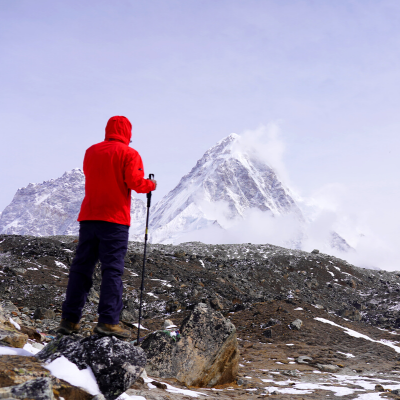
Nestled between the soaring peaks of the Himalayas and the lush jungles of the Terai, Nepal is a captivating travel destination that offers unparalleled natural beauty, rich cultural heritage, and warm hospitality. This South Asian gem, home to eight of the world's ten highest mountains, including the majestic Mount Everest, is a haven for trekkers, adventurers, and spiritual seekers alike. As you explore the wonders of Nepal, you will be enchanted by the diverse experiences it offers, from the bustling streets of Kathmandu to the serene monasteries perched atop hilltops.
Choosing the right time to visit Nepal is crucial to ensure you make the most of your journey. Depending on your interests and preferences, different seasons offer unique opportunities and challenges. This blog post will provide you with a comprehensive travel guide to Nepal, covering major attractions, the best time to visit, essential travel tips, and a glimpse into the country's rich cultural heritage. So, buckle up and get ready to embark on an unforgettable adventure to the land of the Himalayas!
Overview of Nepal's Seasons and Climate
Nepal's climate is primarily influenced by its diverse topography and altitude, resulting in a wide range of weather conditions across the country. Generally, the climate can be divided into four distinct seasons: spring, summer, autumn, and winter. Understanding each season's characteristics will help you plan your visit accordingly.
Spring (March-May):
Spring is considered one of the best times to visit Nepal, as the weather is generally mild and pleasant. The temperature ranges from 16°C to 23°C (61°F to 73°F) in lower elevations and is cooler at higher altitudes. This season offers excellent trekking conditions, with clear skies and blooming rhododendron forests adding vibrant colors to the landscape. It is also a popular time for mountaineering expeditions.
Summer (June-August):
The summer season in Nepal is marked by the monsoon, which brings heavy rainfall and occasional landslides, especially in the lower regions. Despite the rain, temperatures can reach up to 30°C (86°F) in some areas. The monsoon season makes trekking challenging, but it's an excellent time to visit the rain-shadow areas like Mustang and Dolpo, which remain relatively dry. The lush greenery and rice terraces during this season are also a sight to behold.
Autumn (September-November):
Autumn is widely considered the best time to visit Nepal, as the monsoon has cleared the air, leaving crystal-clear skies and spectacular mountain views. The weather is stable, with temperatures ranging from 15°C to 24°C (59°F to 75°F). The pleasant climate and breathtaking scenery make it the peak season for trekking, cultural tours, and wildlife safaris. However, popular trails can be crowded during this time.
Winter (December-February):
Winter in Nepal is characterized by cold temperatures, particularly in the mountainous regions, where it can drop below freezing. The lower elevations and cities like Kathmandu and Pokhara experience milder temperatures, ranging from 9°C to 12°C (48°F to 54°F). The winter season is ideal for lower-altitude treks, cultural tours, and wildlife safaris in the Terai region. Snowfall in higher elevations may make some trekking routes inaccessible.
Nepal's climate and seasons offer a variety of experiences. Spring and autumn are the most popular times to visit due to favorable weather conditions, while summer and winter have their unique charms and opportunities for more off-the-beaten-path adventures.
Table Of Content
A. spring (march-may).
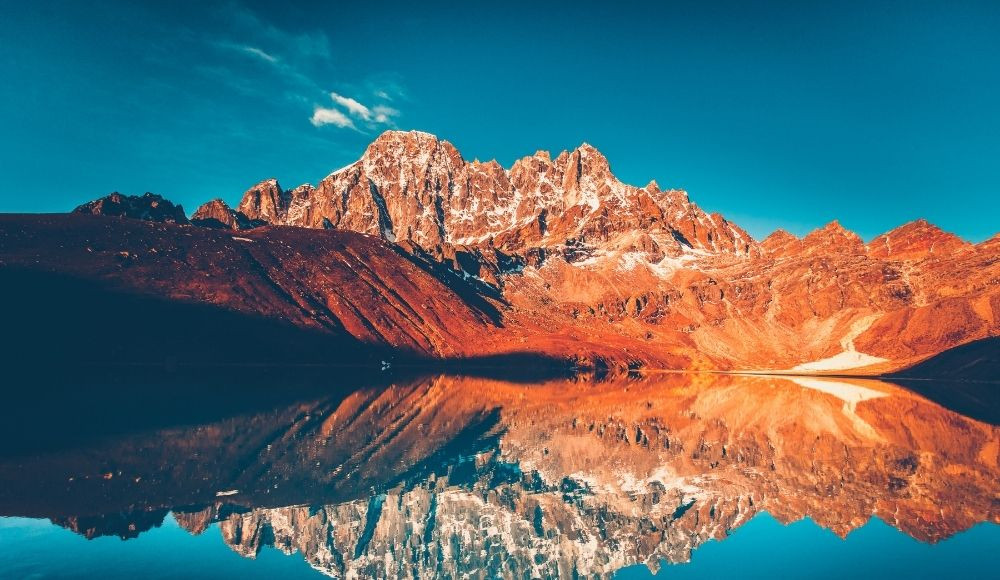
Spring in Nepal is characterized by mild and pleasant weather, with temperatures ranging from 16°C to 23°C (61°F to 73°F) in lower elevations and cooler temperatures at higher altitudes. As the snow from winter melts, the days become warmer and longer, and the skies are mostly clear, offering stunning views of the snow-capped Himalayas.
Major attractions during Spring:
Trekking: Spring is an excellent time for trekking in Nepal, with popular routes such as the Everest Base Camp Trek, Annapurna Circuit Trek, and Langtang Valley Trek offering ideal conditions and picturesque landscapes.
Rhododendron forests: The vibrant red, pink, and white rhododendron blooms add a magical touch to the country's hills and mountains during spring, making it a fantastic time for nature lovers and photographers.
Wildlife safaris: The mild temperatures and clear skies make spring an ideal time to visit national parks like Chitwan National Park and Bardia National Park for wildlife safaris, where you can spot animals like one-horned rhinoceros, Bengal tigers, and various species of deer and birds.
Paragliding and hot air ballooning: The favorable weather conditions during spring make it a great time for adventure activities like paragliding in Pokhara and hot air ballooning in the Kathmandu Valley, offering breathtaking aerial views of the landscape.
Festivals and events:
Holi: Known as the festival of colors, Holi is a lively and vibrant event celebrated throughout Nepal, usually in March. People throw colored powders and water at each other and indulge in music, dance, and merrymaking.
Nepali New Year (Bisket Jatra): Celebrated in mid-April, the Nepali New Year marks the beginning of the Bikram Sambat calendar. The celebration involves processions, chariot pulling, and various cultural events, with the town of Bhaktapur hosting the most famous festivities.
Buddha Jayanti: This significant Buddhist festival, usually celebrated in May, commemorates the birth, enlightenment, and passing away of Lord Buddha. Lumbini, the birthplace of Buddha, and other sacred Buddhist sites like Boudhanath and Swayambhunath Stupa in Kathmandu, become hubs of religious activities and prayers during this time.
Summer (June-August)
The summer season in Nepal is marked by the monsoon, which brings heavy rainfall and high humidity, particularly in the lower regions. Temperatures can range from 20°C to 30°C (68°F to 86°F), with occasional landslides and flooding in some areas. The monsoon season typically lasts from late June to early September.
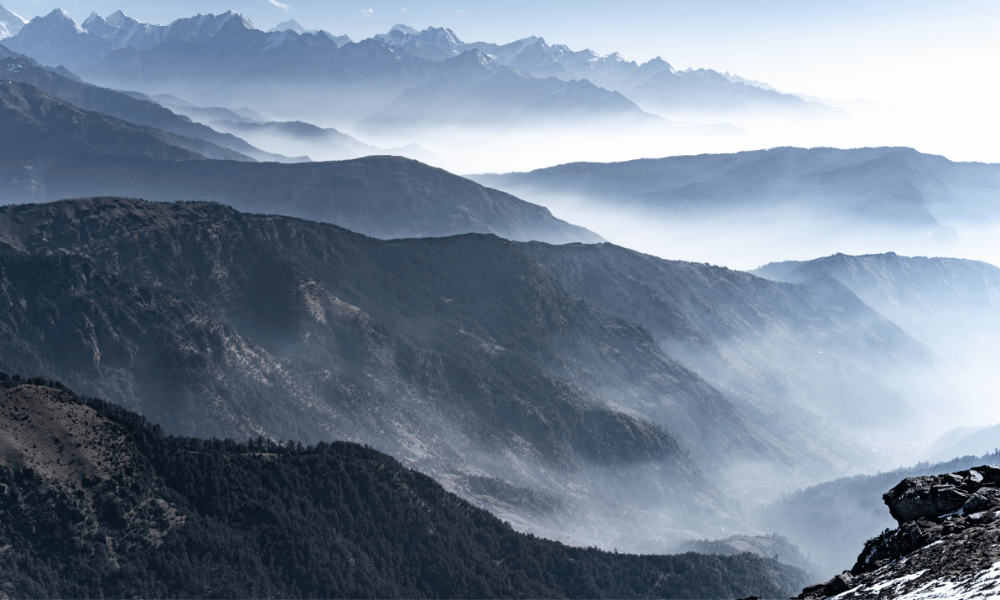
Major attractions during Summer:
Rain-shadow areas: Despite the monsoon, some regions like Upper Mustang and Dolpo lie in the rain-shadow of the Himalayas, remaining relatively dry during the summer months. These areas offer unique trekking and cultural experiences.
Lush green landscapes: The monsoon rains transform Nepal's countryside into a verdant paradise, with rice terraces and forests taking on a vibrant green hue. This is an excellent time for photographers to capture the beauty of the country's lush landscapes.
Indoor activities: While outdoor activities may be limited due to the rain, summer is a great time to explore Nepal's rich cultural heritage through visits to museums, art galleries, and ancient temples in cities like Kathmandu, Bhaktapur, and Patan.
Yoga and meditation retreats: The summer months are ideal for spiritual seekers to immerse themselves in yoga and meditation retreats, which can be found in serene locations like Pokhara, Lumbini, and Nagarkot.
Rato Machhindranath Jatra: Celebrated in Patan between May and June, this month-long festival honors the rain god Machhindranath. The event is marked by a colorful procession, where a large chariot carrying the deity's image is pulled through the city streets, attracting thousands of devotees.
Janai Purnima: Held in August, Janai Purnima is a sacred thread-changing festival observed by Hindu Brahmins and Kshatriyas. Pilgrims flock to the Kumbeshwar Temple in Patan and the Gosainkunda Lake in the Langtang region to take holy baths and change their sacred threads.
Teej: Celebrated by Hindu women in August or September, Teej is a vibrant festival marked by fasting, singing, and dancing. Women dress in red, visit temples, and pray to Lord Shiva for the well-being of their husbands or future spouses.
Gai Jatra: This unique festival, held in August in the Kathmandu Valley, commemorates those who have passed away during the previous year. Families who have lost loved ones participate in a procession with cows or children dressed as cows, while onlookers enjoy satirical performances, dances, and traditional music.
Autumn (September-November)
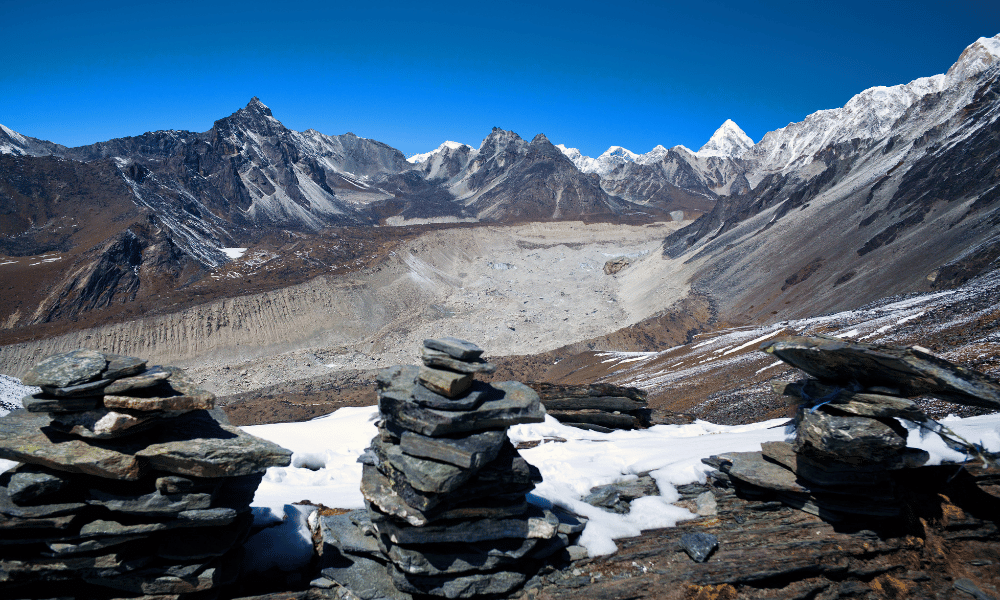
Autumn is considered the best time to visit Nepal due to its stable and pleasant weather conditions. The monsoon season has passed, leaving clear skies and crisp mountain views. Temperatures range from 15°C to 24°C (59°F to 75°F) in lower elevations, with cooler temperatures at higher altitudes. The mild climate makes it an ideal time for various outdoor activities.
Major attractions during Autumn:
Trekking: With the optimal weather and spectacular mountain vistas, autumn is the peak season for trekking in Nepal. Popular routes like the Everest Base Camp Trek , Annapurna Circuit Trek, and Manaslu Circuit Trek provide trekkers with incredible experiences and unparalleled scenery.
Wildlife safaris: National parks in the Terai region, such as Chitwan National Park and Bardia National Park, offer fantastic wildlife viewing opportunities during autumn. The clear skies and pleasant temperatures make it an ideal time for safaris to spot one-horned rhinoceros, Bengal tigers, elephants, and various bird species.
Cultural tours: Autumn's agreeable weather is perfect for exploring Nepal's ancient cities, temples, and UNESCO World Heritage Sites. Visit the Kathmandu Valley, Bhaktapur, and Patan to discover the country's rich history and architecture.
Mountain flights: With clear skies and stunning visibility, autumn is an excellent time to take a mountain flight for breathtaking aerial views of the Himalayan peaks, including Mount Everest.
Dashain: The most significant Hindu festival in Nepal, Dashain , is celebrated in September or October. The 15-day event is marked by family reunions, animal sacrifices, feasting, and the exchange of blessings and gifts. The festival symbolizes the victory of good over evil and is an opportunity for Nepalis to come together and celebrate with friends and family.
Tihar (Diwali): Known as the festival of lights, Tihar or Diwali is celebrated in October or November over five days. This joyous occasion involves the lighting of oil lamps, candles, and colorful decorations to welcome the goddess of wealth, Laxmi, into homes. Each day of the festival has its unique rituals and customs, including the worship of crows, dogs, cows, and oxen.
Chhath: Primarily celebrated by the people of the Terai region, Chhath is a sun worship festival that takes place in October or November. Devotees gather near rivers, ponds, or other water bodies to offer prayers to the sun god, Surya, and his sister Chhathi Maiya. The festival is marked by fasting, singing, and dancing.
Mani Rimdu: Mani Rimdu is an important Buddhist festival celebrated at Tengboche Monastery in the Everest region, usually in October or November. This colorful event features masked dances and rituals performed by monks, representing the triumph of Buddhism over the ancient Bon religion. The festival draws locals and trekkers alike, providing a unique cultural experience.
Indra Jatra: Celebrated in September, Indra Jatra is an eight-day festival that takes place in Kathmandu. The event honors Indra, the Hindu god of rain, and features various processions, masked dances, and the hoisting of a giant wooden pole called "Yosin" at Kathmandu Durbar Square. The festival also includes the Kumari Jatra, a chariot procession featuring the living goddess Kumari.
These festivals and events during autumn offer travelers a unique opportunity to immerse themselves in the rich cultural traditions of Nepal and create unforgettable memories.
Winter (December-February)
Winter in Nepal is characterized by cold temperatures, particularly in mountainous regions where temperatures can drop below freezing. The lower elevations and cities like Kathmandu and Pokhara experience milder temperatures, ranging from 9°C to 12°C (48°F to 54°F). The skies remain mostly clear during this season, providing stunning mountain views. Snowfall in higher elevations may make some trekking routes inaccessible.
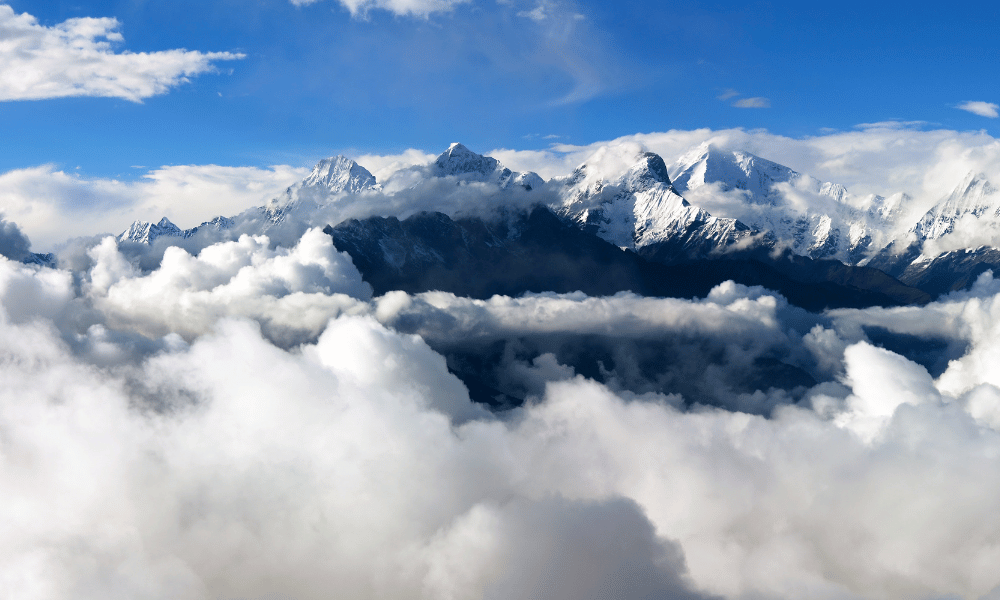
Major attractions during Winter:
Lower altitude treks: While higher altitude treks may be challenging due to snow and cold temperatures, winter is a great time for lower altitude treks such as Poon Hill, Ghorepani, and the Kathmandu Valley Rim Trek. These trails offer impressive mountain views and fewer crowds.
Cultural tours: Winter is an excellent time to explore Nepal's cultural heritage in cities like Kathmandu, Bhaktapur, and Patan. The cooler temperatures make it comfortable for sightseeing and visiting ancient temples, palaces, and UNESCO World Heritage Sites.
Wildlife safaris: The Terai region, home to Chitwan National Park and Bardia National Park, offers milder temperatures during winter, making it an ideal time for wildlife safaris to spot one-horned rhinoceros, Bengal tigers, elephants, and various bird species.
Skiing and snowboarding: For adventure seekers, some regions in Nepal, such as Muktinath and Kalinchowk, offer skiing and snowboarding opportunities during the winter months, providing a unique way to experience the Himalayas.
Lhosar: Celebrated in January or February, Lhosar marks the Tibetan New Year and is observed by the Sherpa, Tamang, and Gurung communities in Nepal. The festival includes colorful processions, traditional dances, and family gatherings, offering a glimpse into the rich cultural traditions of these ethnic groups.
Maghe Sankranti: Maghe Sankranti is a mid-winter festival celebrated in January, marking the beginning of the month of Magh in the Bikram Sambat calendar. The festival involves ritual bathing in holy rivers, worshiping at temples, and feasting on traditional dishes like sesame seed laddoos and sweet potatoes.
Basanta Panchami: This Hindu festival, also known as Saraswati Puja, is celebrated in January or February to honor Saraswati, the goddess of knowledge, music, and art. Devotees visit temples, offer prayers, and participate in cultural programs, while students seek blessings for their education and artistic pursuits.
Winter in Nepal offers unique attractions and cultural experiences, making it an ideal time for travelers looking to explore the country's beauty and traditions with fewer crowds
Trekking and Mountaineering
The best months for trekking in Nepal are during the spring (March-May) and autumn (September-November) seasons. These months offer the most stable weather conditions, with clear skies, moderate temperatures, and excellent visibility. Spring brings the added bonus of blooming rhododendron forests, while autumn boasts crisp mountain views after the monsoon season.
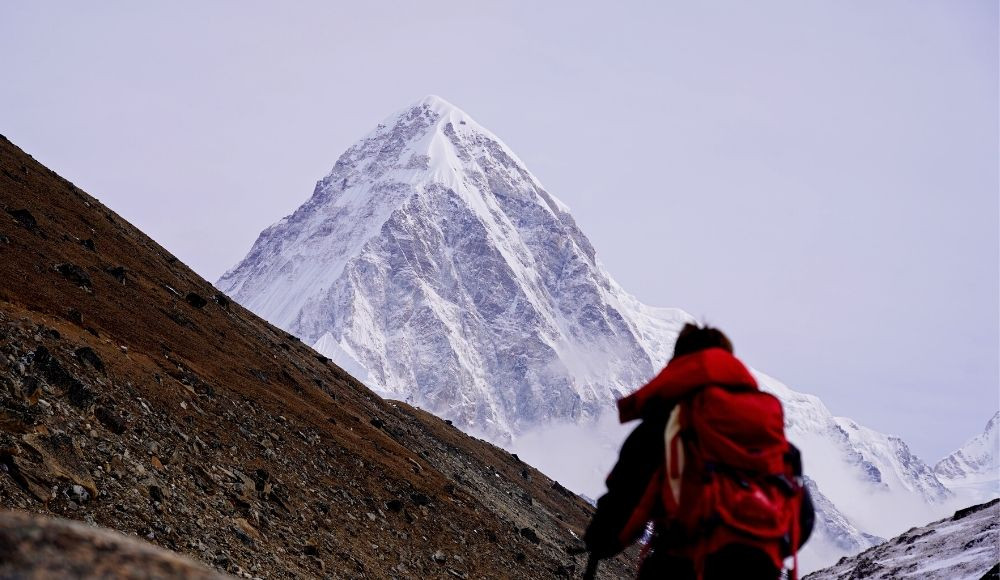
Popular trekking routes:
Everest Base Camp Trek: This iconic trek leads you to the foot of Mount Everest, the world's highest peak. The journey takes you through the heart of the Sherpa homeland, offering stunning views of the Himalayas and an insight into the local culture.
Annapurna Circuit Trek: One of Nepal's most diverse and popular treks, the Annapurna Circuit trek takes you through various landscapes, from lush subtropical forests to the arid Tibetan Plateau, with awe-inspiring views of the Annapurna massif.
Langtang Valley Trek: A relatively shorter and less crowded trek, the Langtang Valley Trek offers a rich cultural experience and breathtaking mountain views. It is easily accessible from Kathmandu and takes you through traditional Tamang villages and beautiful rhododendron forests.
Manaslu Circuit Trek: This off-the-beaten-path trek circles the eighth-highest peak in the world, Mount Manaslu. The trail offers a diverse range of landscapes, from subtropical forests to high-altitude glaciers, and a unique blend of Nepalese and Tibetan cultures.
Tips for a successful trekking experience:
Choose the right trek: Consider your fitness level, available time, and personal preferences when selecting a trekking route. Some treks are more challenging or longer than others, so it's essential to pick one that suits your abilities and interests.
Acclimatize properly: Altitude sickness can be a significant concern when trekking in Nepal. To minimize the risk, ensure you have a well-planned itinerary that allows for gradual acclimatization, with rest days and slow ascents.
Hire a guide and porter: A knowledgeable guide can enhance your trekking experience by sharing information about the culture, flora, and fauna of the region. A porter can help you carry your gear, allowing you to focus on enjoying the trek and preserving your energy.
Pack appropriately: Bring suitable clothing and gear for varying weather conditions, including warm layers, waterproof jackets, and proper footwear. Don't forget essentials like sunscreen, sunglasses, and a hat to protect against the intense sun at higher altitudes.
Stay hydrated and well-nourished: Drinking plenty of water and eating high-energy foods can help you maintain your energy levels and reduce the risk of altitude sickness.
Wildlife Safaris
The best months for wildlife viewing in Nepal are during the dry season, which spans from late autumn (October-November) through winter (December-February) and into early spring (March-April). During these months, the weather is cooler, and the skies are clear, making it easier to spot animals. Additionally, as the water sources in the forests and grasslands start to dry up, wildlife tends to congregate around the remaining water sources, increasing the chances of sightings.

Popular national parks and wildlife reserves:
Chitwan National Park: Located in the subtropical lowlands of the Terai region, Chitwan National Park is Nepal's first national park and a UNESCO World Heritage Site. The park is home to diverse ecosystems, including forests, grasslands, and riverine areas, providing habitat for numerous wildlife species.
Bardia National Park: Situated in the far western region of Nepal, Bardia National Park is the country's largest national park and offers a more remote and pristine wildlife experience. It is known for its extensive wildlife populations and a higher chance of spotting the elusive Bengal tiger.
Koshi Tappu Wildlife Reserve: Located in southeastern Nepal, Koshi Tappu Wildlife Reserve is a haven for birdwatchers, boasting over 450 species of birds. The reserve also hosts several mammal species and serves as a crucial habitat for the endangered wild water buffalo.
Wildlife species to look out for:
One-horned rhinoceros: Nepal is home to the world's second-largest population of one-horned rhinoceros, primarily found in Chitwan and Bardia National Parks.
Bengal tiger: These elusive big cats can be found in both Chitwan and Bardia National Parks, with Bardia offering a higher probability of sightings due to its remote location and fewer visitors.
Asian elephant: While some wild elephants can be spotted in Chitwan and Bardia National Parks, visitors can also observe and interact with captive elephants at various conservation centers and lodges in the parks.
Gharial and mugger crocodiles: Both Chitwan and Bardia National Parks provide suitable habitats for these reptiles, which can often be seen basking in the sun along the riverbanks.
Birds: Nepal boasts over 850 bird species, making it a paradise for birdwatchers. Some of the most sought-after species include the Bengal florican, swamp francolin, and various species of egrets, storks, and kingfishers.
When planning a wildlife safari in Nepal, it's essential to work with reputable tour operators and follow park guidelines to ensure a responsible and enjoyable wildlife experience.
Cultural Tours
While cultural exploration can be enjoyed year-round in Nepal, the best months for comfortable sightseeing are during the spring (March-May) and autumn (September-November) seasons. These months offer pleasant weather, clear skies, and moderate temperatures, allowing for easy exploration of cultural sites and participation in outdoor festivals.
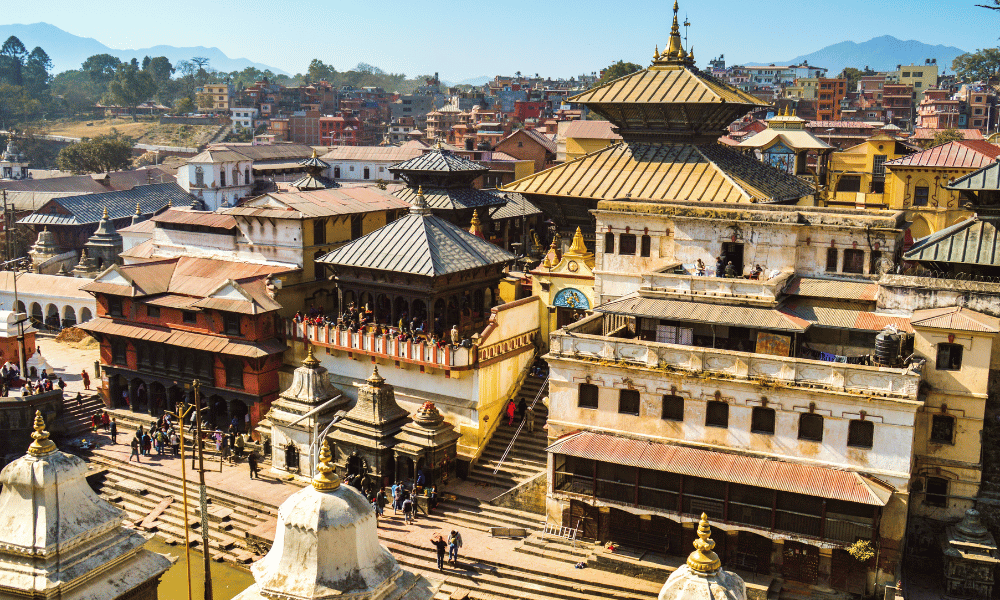
Must-visit cultural sites and cities:
Kathmandu Valley: The valley comprises three ancient cities – Kathmandu, Patan, and Bhaktapur – each boasting a rich cultural heritage, ancient temples, and exquisite architecture. Key sites include the UNESCO World Heritage Sites of Pashupatinath, Swayambhunath, Boudhanath, and the Durbar Squares in each city.
Lumbini: As the birthplace of Lord Buddha, Lumbini is a UNESCO World Heritage Site and an important pilgrimage destination for Buddhists worldwide. The site features the Sacred Garden, Maya Devi Temple, Ashokan Pillar, and numerous monasteries built by various countries.
Pokhara: Known for its natural beauty, Pokhara also offers cultural experiences, including visits to the International Mountain Museum, Barahi Temple, and the Gurkha Museum. The city is also home to the World Peace Pagoda, which provides stunning views of the Annapurna mountain range.
Bandipur: A picturesque hilltop village located between Kathmandu and Pokhara, Bandipur showcases well-preserved traditional Newari architecture and offers a glimpse into rural life in Nepal.
Major cultural festivals and events:
Dashain: Celebrated in September or October, Dashain is Nepal's most significant Hindu festival, marking the victory of good over evil. The 15-day event involves family reunions, feasting, and the exchange of blessings and gifts.
Tihar (Diwali): Known as the festival of lights, Tihar takes place in October or November and features the lighting of oil lamps, candles, and colorful decorations to welcome the goddess of wealth, Laxmi. The five-day festival involves various rituals, including the worship of crows, dogs, cows, and oxen.
Holi: Celebrated in March, Holi is the festival of colors, marking the arrival of spring and the victory of good over evil. People throw colored powders and water at each other, making for a vibrant and joyous celebration.
Indra Jatra: This eight-day festival in September honors Indra, the Hindu god of rain. The event takes place in Kathmandu and features processions, masked dances, and the hoisting of a giant wooden pole called "Yosin" at Kathmandu Durbar Square.
Exploring Nepal's cultural heritage allows travelers to gain a deeper understanding of the country's history, traditions, and diverse communities.
Pros and Cons of Visiting Nepal During Each Season
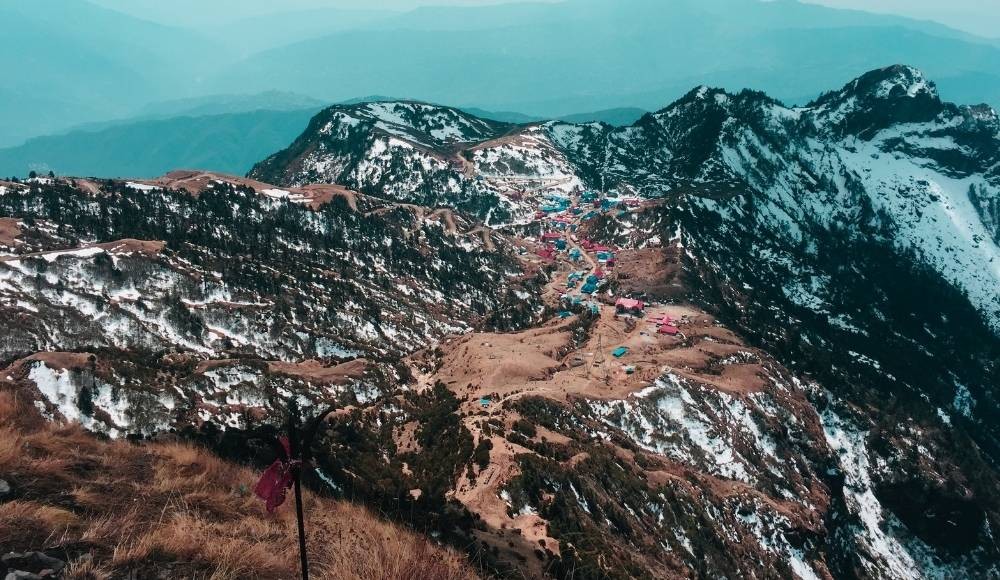
Pros of Spring (March-March)
Pleasant weather with moderate temperatures, making it comfortable for various activities such as trekking, sightseeing, and wildlife safaris.
Blooming rhododendron forests, which add vibrant colors to the landscapes, particularly during trekking.
Clear skies and excellent visibility for mountain views and scenic flights.
Fewer tourists compared to the peak autumn season, providing a more peaceful experience.
Cons of Spring (March-March)
Occasional pre-monsoon showers may cause temporary disruptions to outdoor activities.
Allergy sufferers may experience discomfort due to the increased pollen count during the flowering season.
Pros of Summer (June-August)
Lush and green landscapes due to the monsoon rains, particularly in lower elevations.
Lower tourist numbers, offering a more secluded experience.
Ideal time for visiting the rain shadow areas like Upper Mustang and Dolpo, where the monsoon has little effect.
Cons of Summer (June-August)
Monsoon rains can cause landslides, making some trekking routes and roads difficult to navigate.
Increased humidity and higher temperatures in the Terai region, making it less comfortable for wildlife safaris.
Limited mountain views and reduced visibility due to cloud cover and rain.
Pros of Autumn (September-November)
Stable and pleasant weather conditions, with clear skies and excellent visibility for mountain views.
Ideal for trekking, wildlife safaris, and cultural tours due to the comfortable temperatures and minimal rainfall.
Numerous cultural festivals, such as Dashain and Tihar, offering travelers unique insights into Nepalese traditions.
Cons of Autumn (September-November)
Peak tourist season, resulting in crowded trekking routes, busy accommodations, and higher prices.
Higher chances of encountering leeches in lower elevations during early autumn, following the monsoon season.
Pros of Winter (December-February)
Fewer tourists, providing a more tranquil and intimate experience.
Cooler temperatures in the Terai region make it more comfortable for wildlife safaris.
Snow-capped mountains offer stunning views and photography opportunities.
Cons of Winter (December-February)
Cold temperatures, particularly at higher elevations, which may make trekking more challenging and require additional gear.
Limited accessibility and increased difficulty for high-altitude treks due to snowfall and the risk of avalanches.
Shorter daylight hours, which may limit the time available for outdoor activities.
Packing essentials for different seasons
Spring and Autumn: Pack lightweight clothing for daytime, with warmer layers for evenings and higher elevations. Include a waterproof jacket for unexpected rain showers, comfortable trekking shoes or boots, sun protection (sunglasses, hat, and sunscreen), and a reusable water bottle.
Summer: Bring lightweight, breathable clothing, a waterproof jacket for monsoon rains, insect repellent, and quick-dry shoes or sandals. Don't forget sun protection and a reusable water bottle.
Winter: Pack warm clothing, including thermal layers, insulated jackets, gloves, scarves, and hats. Waterproof and insulated trekking boots are essential for higher elevations, as well as sun protection and a reusable water bottle.
Health and safety considerations:
Stay updated on vaccinations and consult a travel doctor for any necessary immunizations and medications.
Purchase comprehensive travel insurance, including coverage for trekking and emergency evacuation, if necessary.
Drink only bottled or properly treated water to avoid waterborne illnesses.
Practice good hygiene and carry hand sanitizer for situations where handwashing facilities are limited.
Acclimatize properly to minimize the risk of altitude sickness during high-altitude treks.
Always carry a well-stocked first aid kit and know how to use it.
Obtaining necessary permits and documentation:
Ensure that your passport is valid for at least six months beyond your intended stay in Nepal.
Apply for a tourist visa at a Nepalese embassy or consulate or obtain a visa-on-arrival at the Tribhuvan International Airport in Kathmandu or select land border crossings.
Obtain necessary trekking permits, such as the TIMS (Trekkers' Information Management System) card and conservation area or national park entry permits, before starting your trek. These can usually be arranged by your trekking agency or at designated permit offices.
Respecting local customs and traditions:
Dress modestly, especially when visiting religious sites, by covering your shoulders and knees.
Remove your shoes before entering temples or people's homes.
Seek permission before photographing people or religious sites.
Do not touch or point at people or objects with your feet, as it is considered disrespectful.
Avoid public displays of affection, which may be deemed inappropriate in Nepalese culture.
Use your right hand when giving or receiving items, as the left hand is considered unclean.
By following these travel tips, you can ensure a safe, enjoyable, and culturally respectful experience while exploring the beautiful country of Nepal.
In conclusion, Nepal is a truly diverse and captivating travel destination, offering something for everyone, from adrenaline-pumping treks in the majestic Himalayas to immersive cultural experiences in ancient cities and thrilling wildlife safaris in lush national parks. Throughout this blog post, we have explored the different seasons and their unique characteristics, as well as the best time to visit Nepal for various activities such as trekking, wildlife safaris, and cultural tours.
Remember, the best time to visit this beautiful country ultimately depends on your personal preferences, interests, and the activities you wish to undertake. By considering the pros and cons of each season and taking into account your desired experiences, you can plan a trip that perfectly aligns with your expectations and interests.
We encourage you to plan your Nepal adventure wisely, taking into account the valuable insights provided in this article. By doing so, you can ensure a memorable, enjoyable, and hassle-free journey in this enchanting land, creating memories that will last a lifetime. So, pack your bags, and get ready to embark on the trip of a lifetime in the magical country of Nepal!
Frequently Asked Questions
The peak tourist season in Nepal is during the autumn months of September to November, when the weather is most favorable for trekking and outdoor activities.
While trekking during the monsoon season (June-August) is generally not recommended due to heavy rains, slippery trails, and potential landslides, some areas like Upper Mustang and Dolpo lie in the rain shadow and can still be visited during this time.
Yes, lower altitude treks can be done during winter (December-February), but be prepared for colder temperatures and shorter daylight hours. High-altitude treks may be more challenging due to snow and the risk of avalanches.
The best time for wildlife safaris in Nepal is during the spring (March-May) and autumn (September-November) seasons, when the weather is comfortable, and the vegetation is not as dense, making it easier to spot animals.
The rhododendron forests in Nepal typically bloom during the spring season (March-May), adding vibrant colors to the landscape, particularly on trekking routes.
Cultural tours can be enjoyed year-round in Nepal, but the most comfortable weather conditions for sightseeing can be found during spring (March-May) and autumn (September-November).
Some major festivals in Nepal include Dashain (September or October), Tihar (October or November), Holi (March), and Indra Jatra (September). These events offer unique insights into Nepalese culture and traditions, so you may want to plan your trip around these festivities.
BLOGS & TRAVEL STORIES
our first-hand Himalayan travel experience
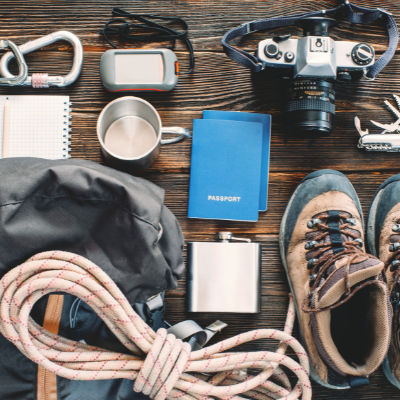
Culture and Festivals
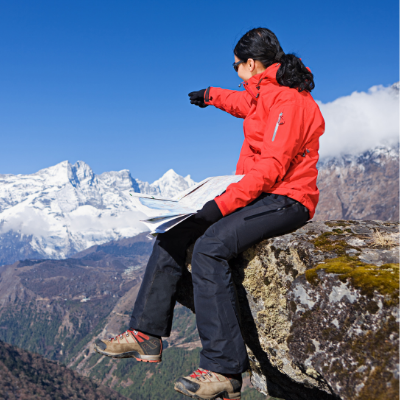
Travel Stories
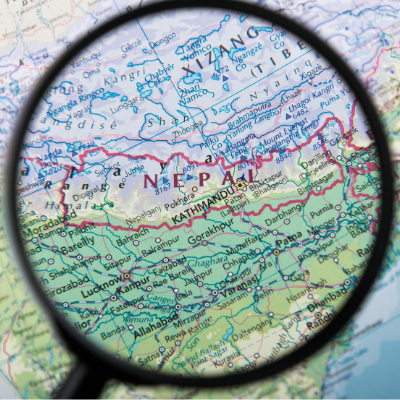
Latest Travel News
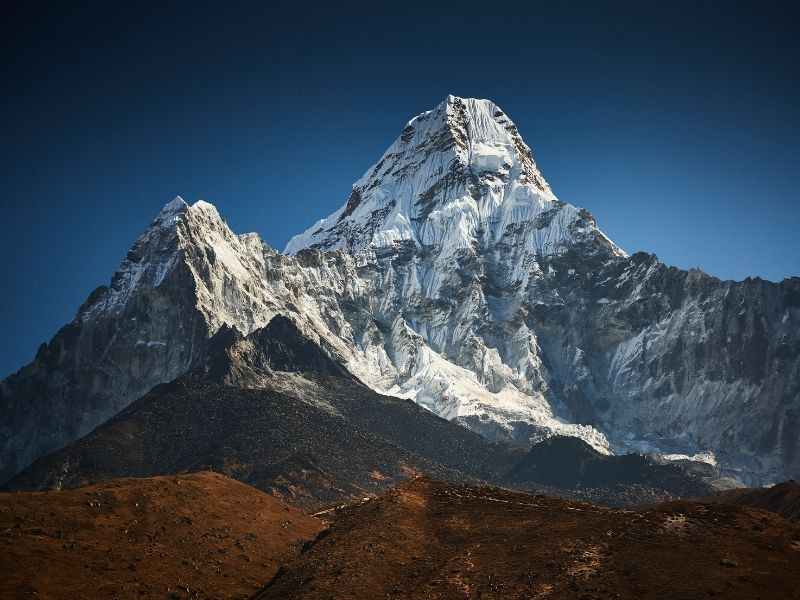
Mount Everest Region
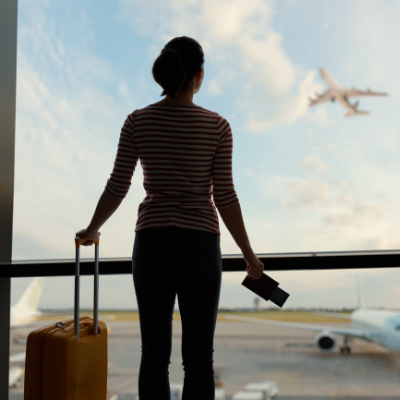
World Heritage Sites
Cookies & privacy policy.
This website uses cookies to improve your experience. Learn More
- South Africa
- Dominican Republic
- United States
- Philippines
- Saudi Arabia
- South Korea
- United Arab Emirates
- French Polynesia
- New Zealand
- Bosnia and Herzegovina
- Netherlands
- North Macedonia
- Switzerland
- United Kingdom
- Hotel Reviews
- Travel eSIM Cards
- Travel News
- Show the search field

Best Time to Visit Nepal.
Discover When is the Best Time to Visit Nepal
The best time to visit Nepal is during the autumn months of September to November for most travelers due to the clear skies, mild weather, and ideal trekking conditions. However, if you enjoy blooming rhododendrons and warmer temperatures, spring (March to May) is ideal, while winter (December to February) is perfect for those who prefer fewer tourists and snow-covered landscapes.
Table of Contents
Seasonal Highlights in Nepal
Nepal, a country of majestic mountains, rich culture, and vibrant traditions, offers a variety of experiences throughout the year. Each season unveils a unique charm, making Nepal a fascinating destination no matter when you visit.
Spring in Nepal (March, April, May)

Spring in Nepal is a vibrant and colorful season, marked by blooming rhododendrons and pleasant weather. This is an excellent time for trekking, wildlife viewing, and exploring the cultural heritage of the Kathmandu Valley. The temperatures are warmer, and the landscapes are lush and green.
Spring temperatures in Nepal range from 16°C (61°F) to 30°C (86°F). The weather is generally mild, with occasional rain showers towards the end of May. Light layers and rain gear are recommended for comfort during outdoor activities.
- Rhododendron Blooms : Trek through trails in the Annapurna and Langtang regions to see the spectacular rhododendron forests in full bloom.
- Chitwan National Park : Visit Chitwan for wildlife safaris, where you can spot rhinos, tigers, and elephants.
- Festivals : Experience local festivals like Holi, the festival of colors, and Bisket Jatra, a unique New Year celebration in Bhaktapur.
Summer in Nepal (June, July, August)

Summer in Nepal coincides with the monsoon season, bringing heavy rains and lush greenery. While this period sees fewer tourists and trekking is less popular due to slippery trails, it is an excellent time for cultural exploration and visiting the rain-shadow areas like Mustang and Upper Dolpo.
Summer temperatures range from 20°C (68°F) to 35°C (95°F), with high humidity and frequent rainfall. Waterproof clothing and sturdy footwear are essential for traveling during this season.
- Cultural Sites : Explore the rich cultural heritage of Kathmandu, Patan, and Bhaktapur with fewer crowds.
- Rain-shadow Treks : Visit Mustang and Upper Dolpo, which remain relatively dry during the monsoon season.
- Lush Landscapes : Enjoy the vibrant green countryside and terraced rice fields that thrive in the monsoon rains.
Autumn in Nepal (September, October, November)

Autumn is the most popular time to visit Nepal, offering clear skies, moderate temperatures, and excellent trekking conditions. The post-monsoon season brings lush landscapes and stunning mountain views, making it the ideal time for outdoor adventures and cultural experiences.
Autumn temperatures range from 15°C (59°F) to 25°C (77°F). The weather is generally dry and clear, perfect for trekking and sightseeing. Layered clothing is recommended for varying temperatures throughout the day.
- Trekking : Explore the famous trekking routes in the Everest, Annapurna, and Langtang regions with optimal weather and breathtaking views.
- Dashain and Tihar : Participate in Nepal’s biggest festivals, Dashain and Tihar, which feature vibrant celebrations and cultural traditions.
- Mountain Flights : Take scenic flights over the Himalayas for an unforgettable aerial view of the world’s highest peaks.
Winter in Nepal (December, January, February)

Winter in Nepal brings cooler temperatures and snow in the higher altitudes. This season is ideal for those who enjoy peaceful treks and exploring the cultural sites without the crowds. The lower altitude regions remain relatively mild and accessible.
Winter temperatures range from 2°C (36°F) to 20°C (68°F). The higher altitudes experience freezing temperatures and snowfall. Warm clothing and proper gear are essential for trekking and outdoor activities during this season.
- Lower Altitude Treks : Enjoy quieter trails in the lower regions, such as the Ghorepani Poon Hill trek and the Chisapani Nagarkot trek.
- Everest Base Camp : For the more adventurous, winter treks to Everest Base Camp offer stunning snowy landscapes and fewer trekkers.
- Cultural Exploration : Visit historical and cultural sites in Kathmandu Valley, including temples, stupas, and ancient palaces.
Nepal offers a rich tapestry of experiences across its varied seasons, making it an attractive destination year-round. The best time to visit Nepal is during the autumn months for clear skies and ideal trekking conditions. Spring is perfect for blooming landscapes and warmer weather, while winter provides a peaceful retreat with snow-covered scenery. No matter when you go, take advantage of the must-do activities in Nepal that will make your next trip unforgettable.
This post may contain affiliate links, which means we may receive a commission if you click a link and purchase something that we have recommended, at no extra cost to you.
David Zacik
I like to travel and I run a website about interesting places, food, countries and customs, sharing practical tips and inspiring others. Follow me on YouTube and Instagram .
Nepal: Himalayan Heights and Sacred Sites
© 2024 MyTravelation.com

Destinations
When is the Best Time to Visit Nepal? 5 Points To Note
Best Time To Visit Nepal
Nepal is a beautiful country with a rich culture and stunning natural landscapes. If you’re planning a trip, it’s important to know the best time to visit to make the most of your experience. From the weather to festivals and events, we’ve put together a comprehensive guide to help you plan your perfect trip to Nepal.
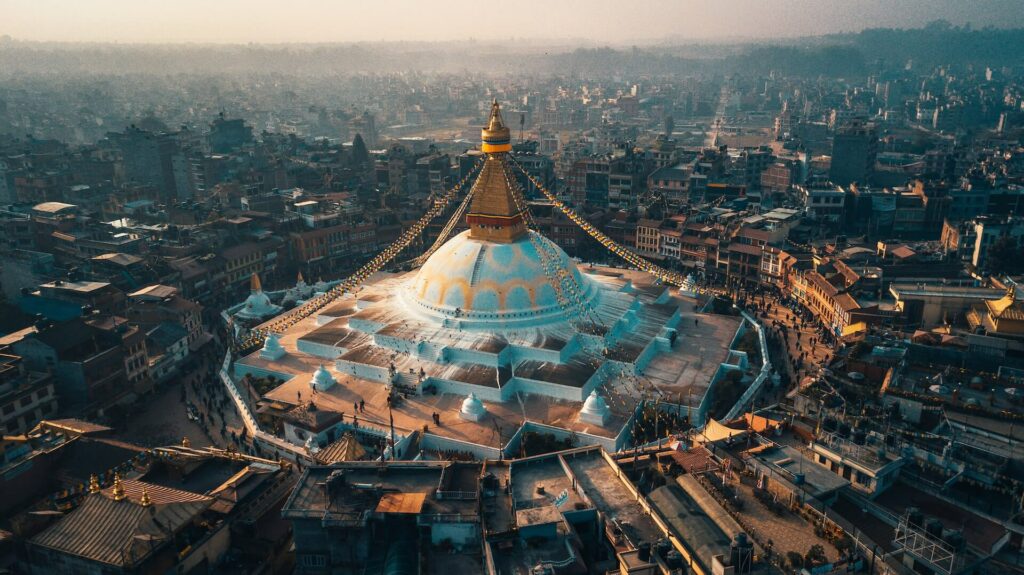
Understanding Nepal’s Seasons
Nepal has four distinct seasons: spring, summer, autumn, and winter. Each season has its own unique characteristics and attractions for visitors. Spring (March to May) is a popular time to visit as the weather is mild and the flowers are in bloom. Summer (June to August) is the monsoon season, with heavy rainfall and high humidity. Autumn (September to November) is considered the best time to visit as the weather is clear and dry, and many festivals take place during this time. Winter (December to February) is cold and dry, but still offers beautiful views of the snow-capped mountains. The best time to visit nepal also depends on your intent for visiting nepal.
Best Time To Visit Nepal for Trekking and Hiking
If you’re planning on trekking or hiking in Nepal, the best time to visit is during the autumn season (September to November) or the spring season (March to May). During these times, the weather is clear and dry, making for ideal trekking conditions. The views of the mountains are also stunning during these seasons. However, if you prefer to avoid the crowds, consider trekking during the winter season (December to February), when there are fewer tourists. Just be prepared for colder temperatures and the possibility of snow.
Cultural Events & Festivals of Nepal
Nepal is a country rich in culture and tradition, and there are many cultural events & festivals of Nepal throughout the year. One of the most popular festivals of nepal is Dashain, which usually falls in September or October. It is a 15-day festival that celebrates the victory of good over evil and involves feasting, dancing, and the exchange of gifts. Another important festival is Tihar, also known as the Festival of Lights, which usually falls in October or November. During this festival, people light candles and lamps to welcome the goddess of wealth and prosperity into their homes. Other festivals of nepal to look out for include Holi, Buddha Jayanti, and Teej.
Wildlife Viewing and Safari
Nepal is home to a diverse range of wildlife, including tigers, rhinos, elephants, and various species of birds. The best time to go on a wildlife safari in Nepal is during the dry season, which runs from October to May. During this time, the grass is shorter, making it easier to spot animals, and the weather is generally clear and sunny. Some of the best places to go on a safari in Nepal include Chitwan National Park, Bardia National Park, and Koshi Tappu Wildlife Reserve. It’s important to note that some parks may be closed during the monsoon season, which runs from June to September, due to flooding and other hazards.
Budget and Crowds
When planning your trip to Nepal, it’s important to consider both your budget and the crowds. The peak tourist season in Nepal is from September to November and from February to April, when the weather is mild and dry. However, this also means that prices for accommodations and activities may be higher, and popular tourist destinations may be crowded. If you’re looking to save money and avoid the crowds, consider visiting during the off-season, which runs from June to August and from December to January. During this time, you may encounter more rain and colder temperatures, but you’ll also have the opportunity to experience Nepal without the crowds.
How to Reach Nepal From Delhi
There are different ways to reach Nepal from Delhi, depending on your budget, time and preference. The fastest and most convenient way is to take a flight from Delhi to Kathmandu, the capital of Nepal. The flight duration is about 1.5 hours and the cost ranges from $56 to $192. Another option is to travel by road , which can be cheaper but also longer and more tiring. You can also take a direct bus from Delhi to Kathmandu, which costs around $32 to $40 and takes about 28 hours.
In conclusion, Nepal is a diverse and fascinating country that offers something for everyone, from trekking and wildlife to culture and festivals. The best time to visit Nepal depends on your preferences and activities, but generally speaking, October and November are the most popular months due to the clear skies and pleasant weather. Spring and autumn are also good seasons, but the weather can be more unpredictable. Winter and summer have their own advantages and disadvantages, such as fewer crowds and lower prices versus cold temperatures and heavy rain. No matter when you choose to go, Nepal will reward you with unforgettable experiences and memories.
What are the four distinct seasons of Nepal?
The four distinct seasons of Nepal are spring (March to May), summer (June to August), autumn (September to November) and winter (December to February).
What is the best time to visit Nepal for trekking and hiking?
The best time to visit Nepal for trekking and hiking is during the autumn season (September to November) or the spring season (March to May), when the weather is clear and dry, and the views of the mountains are stunning.
What are some of the cultural events and festivals of Nepal?
Some of the cultural events and festivals of Nepal include Dashain, Tihar, Holi, Buddha Jayanti, and Teej. Dashain and Tihar are the most important festivals, celebrated in September or October and October or November respectively. They involve feasting, dancing, lighting candles and lamps, and exchanging gifts.
What are some of the best places to go on a wildlife safari in Nepal?
Some of the best places to go on a wildlife safari in Nepal include Chitwan National Park, Bardia National Park, and Koshi Tappu Wildlife Reserve. These parks are home to a variety of animals, such as tigers, rhinos, elephants, and birds. The best time to go on a safari is during the dry season, from October to May.
How does the budget and crowds affect the travel experience in Nepal?
The budget and crowds affect the travel experience in Nepal depending on the season. The peak tourist season in Nepal is from September to November and from February to April, when the weather is mild and dry. However, this also means that prices for accommodations and activities may be higher, and popular tourist destinations may be crowded. If you’re looking to save money and avoid the crowds, consider visiting during the off-season, which runs from June to August and from December to January. During this time, you may encounter more rain and colder temperatures, but you’ll also have the opportunity to experience Nepal without the crowds.
(Cancel Reply)
Subscribe to Updates
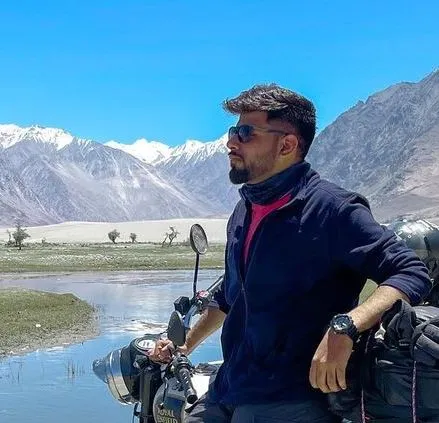

The Best Time To Visit Nepal (And The Worst!) 2024
Wondering when the best time to visit Nepal is? Then you’re not alone. Thousands of tourists visit this beautiful country every single year, and if this is a once-in-a-lifetime trip then you’re going to want to make sure you’ve picked the best time to visit.
Nepal is a country that offers a diverse range of experiences for travelers, from trekking in the Himalayas to exploring ancient temples and immersing oneself in the vibrant culture. And we absolutely loved getting stuck into it all.
However, choosing the right time to visit Nepal is crucial to make the most out of your trip.
Nepal’s climate and weather conditions vary significantly throughout the year, which can affect the availability of activities and the overall experience of your trip.
Before we booked our trip to Nepal we scoured the internet trying to find the best time to visit, but unfortunately for us we didn’t have availability to visit at the peak time. This was both a blessing and curse, and we’ll explain more below.
In this blog post, we will explore the best time to visit Nepal based on different factors such as weather, festivals, and activities, to help you plan your trip effectively and make it a memorable one.
Whether you’re a nature lover, adventure enthusiast, or cultural explorer, this guide will provide you with valuable insights into the ideal time to visit Nepal based on your interests and preferences.

As an Amazon Associate, we earn from qualifying purchases. We also earn from other affiliate programs. This means we may receive a small commission on products purchased through our links at no extra cost to you.
Table Of Contents
Is nepal worth visiting, the best time to visit nepal, what is the best time to go trekking in nepal, when do most tourists visit nepal, the cheapest time to go to nepal, what month is the most hot in nepal, what is the rainy season in nepal, the worst time to visit nepal, frequently asked questions, top tips for visiting nepal.

Absolutely, Nepal is worth visiting! In our opinion anyway.
Nepal is a unique country with a rich culture, history, and stunning natural beauty. From the soaring peaks of the Himalayas to the lush jungles of Chitwan National Park, Nepal offers a diverse range of landscapes and experiences.
I think Nepal was the place where we had the most unique experiences of any of our travels. We saw tigers in the jungle, trekked in the Himalayas, and explored some of the most beautiful religious sites, including Lumbini, birth place to Buddhism.
Nepal is home to several UNESCO World Heritage Sites, including the historic city of Kathmandu, which offers a glimpse into the country’s rich cultural heritage.
The Nepali people are incredibly friendly and hospitable. Everyone will stop and bow their hellos as you walk past. The country is known for its delicious cuisine, which offers a blend of Indian, Tibetan, and Chinese flavors.
Moreover, Nepal is a popular destination for adventure enthusiasts, offering opportunities for trekking, mountaineering, rafting (the white water rafting here is amazing), and more.
Overall, Nepal is a destination that should be on every traveler’s bucket list, offering a unique and unforgettable experience. We highly recommend you book a visit NOW!
The best time to visit Nepal depends on various factors such as weather, festivals, and activities you plan to do. There is such a huge range of things to do in Nepal and some quite distinct weather patterns.
Here are the best times to visit Nepal based on different interests:
The best time for trekking in Nepal is during the dry season, which is from October to May. During this time, the skies are clear, and the temperature is pleasant, making it ideal for trekking in the Himalayas.
However, the peak trekking season is from October to November when the weather is at its best, and the trails are less crowded than during the spring season.
We’ve written more on this below, as let’s be honest, trekking is one of the main reasons most people visit Nepal.
Cultural Exploration
Nepal is a culturally rich country, and the best time to explore its heritage is during the festivals. The most significant festival in Nepal is Dashain, which falls between September and October, followed by Tihar in November.
During these festivals, the streets are decorated with lights, and the temples are bustling with people, offering a unique cultural experience.
Nepal does have an awful lot of festivals though, so whatever time of year you visit you will probably find there is something going on. We were there during International Womens Day and even in a remote village in Chitwan they were still celebrating with music and dancing.
Wildlife Safari
The best time for a wildlife safari in Nepal is from October to March, which is the dry season. During this time, the animals gather around waterholes, making it easier to spot them.
Mountaineering
The best time for mountaineering in Nepal is during the pre-monsoon season, which is from April to May. During this time, the weather is stable, and the snow conditions are ideal for climbing. However, the post-monsoon season, which is from September to November, is also suitable for mountaineering.
Again, we’ve written more about this in the section below.
In summary, the best time to visit Nepal depends on your interests and activities you plan to do. However, generally speaking, the best time to visit Nepal is during the dry season, which is from October to May, when the weather is favorable for most outdoor activities.

Nepal is famous for its mountains, with the Himalayas being some of the most sought-after trekking and mountaineering destinations in the world.
It’s honestly hard to imagine the scale of them until you see. They never failed to take my breath away and they are some of the most awesome views I’ve seen in my entire life.
Saying that, these mountains are no joke. No matter what kind of trek you are planning you should always take an experienced guide. These mountains constantly move and breath, whether that’s due to avalanches or landslides. They are surrounded by dense jungle that would be easy to get lost in forever, and altitude sickness is also a very real danger.
The best time to go trekking in Nepal is during the dry season, which is from October to May. During this time, the skies are clear, and the temperature is pleasant, making it ideal for trekking in the Himalayas.
The peak trekking season in Nepal is from October to November when the weather is at its best, and the trails are less crowded than during the spring season. The skies are clear, and the temperature is moderate, making it the perfect time to enjoy the stunning mountain views and natural scenery.
However, trekking during the winter months, from December to February, can also be a fantastic experience as the skies are still clear, and the trails are relatively quiet. The only drawback is that it can be very cold at higher altitudes, so proper equipment and clothing are necessary.
You should also be aware that when there is snow on the mountains, there is always an avalanche risk. You should be well versed in avalanche survival tactics and always take an experienced guide who has the proper safety communications equipment.
The great thing about trekking Nepal during the dry season is that you’re almost guaranteed incredible views.
Trekking during the spring season, from March to May, is also a popular option as the weather is still pleasant, and the flowers and vegetation start to bloom, making the landscapes even more beautiful. However, the trails can be quite crowded during this time, and there can be occasional rain showers.
During the rainy season of June through to August you’ll get regular monsoon rains and possibly absolutely no views due to cloud cover. This is more likely that you’d think, so plan carefully if you’re going for the views (which are honestly incredible).
We visited in July and August and got very, very lucky. We managed to get little glimpses of the view on most days of our 12 day trek, though they were short glimpses before the clouds rolled in again.
The other thing to note about trekking during the rainy season is that landslides aren’t uncommon. We were forced to scale our way across a recent landfall when it was blocking our exit from the mountain. It was pretty scary!
Overall, the best time to go trekking in Nepal is during the dry season, which is from October to May, depending on your preferences and trekking route. It’s essential to research your trekking route and the weather conditions beforehand to ensure you have the best possible trekking experience.
The peak tourist season in Nepal is from September to November and from March to May. During this time, the weather is pleasant and dry, and the skies are clear, making it the perfect time to explore Nepal’s natural beauty, cultural heritage, and outdoor activities.
The September to November period is the best time for trekking in Nepal, and it coincides with the Dashain and Tihar festivals, which are the most significant festivals in Nepal. This period attracts a large number of tourists who come to Nepal to witness the festivities and explore the country’s natural beauty.
The March to May period is also a popular time to visit Nepal as the weather is mild, and the flowers and vegetation start to bloom, making the landscapes even more beautiful. This period is perfect for exploring Nepal’s cultural heritage, as many festivals and events take place during this time.
However, it’s worth noting that the peak tourist season can also mean higher prices, crowded tourist destinations, and limited availability of accommodations and services.
If you prefer fewer crowds and lower prices, it’s best to consider visiting Nepal during the shoulder seasons, which are from February to April and from September to November, or during the winter months from December to February.
During these periods, the weather can still be pleasant, and there are fewer tourists, making it a great time to explore Nepal’s natural beauty and cultural heritage without the crowds.

The cheapest time to visit Nepal is generally during the monsoon season, which runs from June to August. During this period, the tourist inflow decreases, and prices for accommodation, flights, and other services tend to be lower than during the peak tourist season.
However, it’s important to note that the monsoon season brings heavy rain showers, and some roads and trekking routes may be inaccessible or challenging to navigate. Outdoor activities such as trekking, rafting, and mountain climbing may also be limited or not recommended during this time.
Another option for budget-conscious travelers is to visit Nepal during the winter months, from December to February, which is considered the low season for tourism.
While the temperature can be cold, and some higher-altitude trekking routes may be closed, it’s still possible to explore the lower elevations and enjoy the cultural attractions in cities like Kathmandu and Pokhara.
Overall, if you’re looking for the cheapest time to visit Nepal, consider planning your trip during the monsoon season or the winter low season, but keep in mind that some activities may be limited, and the weather may not be ideal for outdoor adventures.
The hottest month in Nepal is generally considered to be May, which falls during the pre-monsoon season. During this month, the temperature in the lower elevations, including Kathmandu Valley, can reach up to 30-35 degrees Celsius (86-95 degrees Fahrenheit).
May is also the month when Nepal’s pre-monsoon season starts, which brings hot and humid weather with occasional thunderstorms and rain showers. The high humidity and hot temperatures can make it challenging to explore the outdoors, especially for activities such as trekking and mountaineering.
However, it’s worth noting that the temperature can vary depending on the altitude and location in Nepal. For example, in mountainous regions, the temperature can be much lower, and in higher elevations, it can be quite cold even during the hottest months.
Overall, if you’re planning to visit Nepal during the hottest month of May, it’s best to be prepared for the heat and humidity by wearing lightweight and breathable clothing, staying hydrated, and taking breaks in shaded areas.

The rainy season in Nepal is known as the monsoon season, which usually starts in early June and lasts until late September. During this period, the country receives the majority of its annual rainfall, particularly in the southern and eastern regions.
The monsoon season in Nepal is characterized by heavy rain showers, high humidity, and occasional thunderstorms, particularly in the afternoons and evenings. The rainfall can cause flooding, landslides, and disruption of transportation and infrastructure, particularly in rural areas.
Despite the challenges posed by the monsoon season, it can also be a beautiful time to visit Nepal, particularly in the lush greenery of the country’s forests and hills.
It’s important to keep in mind that some trekking routes may be inaccessible or challenging to navigate during the monsoon season, and outdoor activities such as rafting and mountaineering may also be limited.
Overall, if you plan to visit Nepal during the rainy season, it’s important to prepare for the weather conditions by bringing waterproof gear, planning indoor activities, and being flexible with your itinerary in case of disruptions.
Nepal is a beautiful country to visit throughout the year, and the best time to visit depends on your personal preferences and interests. However, there are a few periods that are not recommended for visiting Nepal due to weather conditions or other factors that may affect your travel experience.
The winter months, from December to February, can be quite cold in Nepal, particularly in the higher elevations. Some trekking routes may be closed or challenging to navigate, and outdoor activities such as rafting and mountain climbing may be limited.
However, it’s still possible to explore the lower elevations and enjoy cultural attractions in cities like Kathmandu and Pokhara.
The monsoon season, which runs from June to September, can be challenging for travel due to heavy rainfall, landslides, and flooding. Trekking and outdoor activities may be limited or not recommended during this period, and transportation and infrastructure may be disrupted, particularly in rural areas.
In addition, it’s important to consider Nepal’s festivals and events when planning your visit. During peak festival times, such as the Dashain and Tihar festivals in October and November, accommodation prices can be higher, and tourist destinations may be crowded.
Overall, it’s essential to do your research and plan accordingly based on your interests, preferences, and the season in Nepal.
While there may be certain periods that are not ideal for travel, Nepal remains a beautiful and captivating destination throughout the year.
Here are some of your most commonly asked questions answered!
How Many Days In Nepal Is Enough?

The number of days you need to spend in Nepal depends on your travel interests, goals, and itinerary.
If you’re interested in trekking, you’ll need to set aside more time than if you’re only interested in visiting the cities and cultural attractions. Additionally, the duration of your trip will also depend on your budget and how much time you have available.
Generally, a minimum of seven to ten days is recommended for a first-time visit to Nepal, which would allow you to explore the main highlights of the country, including Kathmandu, Pokhara, and Chitwan National Park. This time frame would also allow you to do some short treks or day hikes in the surrounding areas.
If you’re interested in trekking in the Himalayas, you’ll need to set aside more time, as most treks take at least a week to complete. The Everest Base Camp trek, for example, takes about 12-14 days, while the Annapurna Circuit trek can take up to 21 days. Additionally, you’ll need to factor in a few days for acclimatization, rest, and travel.
Ultimately, the ideal duration of your trip to Nepal depends on your travel goals, interests, and budget.
Whether you’re interested in cultural sightseeing, trekking, adventure sports, or spiritual exploration, Nepal has a lot to offer, and you can customize your itinerary to fit your preferences and available time.
What Is The Best Month To Visit Kathmandu
Kathmandu, the capital city of Nepal, can be visited and enjoyed throughout the year.
The peak tourist season in Kathmandu is from September to November, after the monsoon season has ended, and the weather is dry and mild. During this period, the city is bustling with activity, and there are several festivals and events, including the Dashain and Tihar festivals.
However, it’s also the busiest time of the year, and prices for accommodation and flights can be higher.
Another good time to visit Kathmandu is from February to April, during the spring season when the weather is warm and dry. This is an excellent time for sightseeing, trekking, and other outdoor activities, and the city is less crowded than during the peak tourist season.
If you prefer to avoid the crowds and save some money, the offseason from June to August can be a good time to visit Kathmandu.
Although it’s the monsoon season, the rains are not continuous, and you can still enjoy some sunny days. However, you’ll need to be prepared for the occasional downpour, and some trekking routes and outdoor activities may be limited.
Ultimately, the best month to visit Kathmandu depends on your interests, preferences, and travel goals. Whether you’re interested in cultural sightseeing, trekking, adventure sports, or spiritual exploration, Kathmandu has a lot to offer, and you can customize your itinerary to fit your needs.
The Best Time To Visit Pokhara

Pokhara is a popular tourist destination in Nepal, known for its stunning natural beauty, lakes, and adventure sports. It’s also the jumping off point for the Annapurna mountain range trek, which is the one we did and it’s absolutely incredible.
The best time to visit Pokhara depends on your preferences and interests.
The peak tourist season in Pokhara is from September to November, after the monsoon season has ended, and the weather is dry and mild. During this period, you can enjoy clear skies, stunning views of the Himalayan peaks, and participate in adventure sports like paragliding, bungee jumping, and rafting.
Another good time to visit Pokhara is from February to April, during the spring season when the weather is warm and dry. This is an excellent time for sightseeing, trekking, and other outdoor activities, and the city is less crowded than during the peak tourist season.
If you’re interested in trekking, the autumn and spring seasons are the best times to visit Pokhara. During these periods, the weather is clear, and the visibility is excellent, making it perfect for trekking in the nearby Annapurna range.
The monsoon season from June to August isn’t the best time for trekking but we did ours in August and loved it. The tracks felt more dangerous as they were slippy and we saw frequent evidence of landslides, but with an experienced guide and some mountain knowledge you should be ok. You might not see any view at all though due to cloud cover.
Ultimately, the best time to visit Pokhara depends on your interests, preferences, and travel goals. Whether you’re interested in adventure sports, trekking, sightseeing, or simply relaxing by the lake, Pokhara has a lot to offer, and you can customize your itinerary to fit your needs.
What Is The Best Month To Visit Nepal?
Nepal has a diverse geography and climate, with varying temperatures and weather conditions throughout the year. However, generally, the best time to visit Nepal is from September to November and from February to April. It’s hard to pin it down to a certain month.
The period from September to November is the peak tourist season in Nepal, after the monsoon season has ended.
The weather is dry and mild, and the skies are clear, making it perfect for trekking, sightseeing, and outdoor activities. The views of the Himalayan peaks are spectacular during this period, and several festivals and events, including Dashain and Tihar, take place.
The period from February to April is also an excellent time to visit Nepal, as the weather is warm and dry. The skies are clear, and the visibility is excellent, making it perfect for trekking and other outdoor activities. The rhododendrons are in bloom during this period, adding to the beauty of the landscape.
If you’re interested in trekking, the autumn and spring seasons are the best times to visit Nepal, as the weather is favorable, and the visibility is excellent.
However, if you prefer to avoid the crowds and save some money, the offseason from June to August can be a good time to visit Nepal, especially for exploring the cities and cultural attractions. However, the monsoon season can limit outdoor activities and trekking.
Ultimately, the best month to visit Nepal depends on your interests, preferences, and travel goals. Whether you’re interested in trekking, adventure sports, cultural sightseeing, or spiritual exploration, Nepal has a lot to offer, and you can customize your itinerary to fit your needs.

Visiting Nepal can be an incredible experience, full of adventure, culture, and stunning natural beauty. Here are some top tips to make the most of your trip to Nepal:
- Pack appropriately: Nepal has a diverse climate, and you need to pack accordingly. Bring warm clothing, especially if you’re planning to trek in the mountains, as the weather can be chilly, especially at higher elevations. Also, pack comfortable walking shoes, a sun hat, and sunscreen.
- Take precautions against altitude sickness: If you’re planning to trek in the mountains, take precautions against altitude sickness. Acclimatize gradually and stay hydrated. It’s also a good idea to carry medication for altitude sickness, just in case. The locals drink ginger soup which you can get at the tea houses along the way.
- Respect local customs and culture: Nepal is a culturally rich country, and it’s essential to respect local customs and traditions. Dress modestly, especially when visiting temples and religious sites. Also, ask for permission before taking photographs of people and respect their privacy.
- Use a reputable trekking agency: If you’re planning to trek in the mountains, use a reputable trekking agency. They can provide you with experienced guides, porters, and the necessary equipment. They can also ensure that you’re trekking responsibly and following environmental and cultural guidelines.
- Stay in locally owned accommodations: Staying in locally owned accommodations, such as homestays and guesthouses, can help support the local economy and give you a more authentic experience of Nepal.
- Be mindful of the environment: Nepal is a beautiful country, and it’s essential to be mindful of the environment. Avoid littering and use reusable water bottles instead of single-use plastics.
- Try the local cuisine: Nepali cuisine is delicious and diverse. Don’t be afraid to try local dishes, such as momos and dal bhat. Also, try the locally brewed tea and coffee, which is grown in the mountains.
- Learn some Nepali phrases: Learning some basic Nepali phrases can go a long way in connecting with the locals and showing respect for their culture. Simple greetings such as “Namaste” and “Dhanyabad” (thank you) can make a significant difference in your interactions.
By following these tips, you can have a more enjoyable and meaningful experience in Nepal.
Conclusion: The Best Time To Visit Nepal
Nepal is a stunningly beautiful country with a diverse geography, rich culture, and warm and hospitable people. The best time to visit Nepal depends on your interests, preferences, and travel goals.
However, the peak tourist season in Nepal is from September to November and from February to April. During these months, the weather is mild and dry, making it perfect for trekking, sightseeing, and other outdoor activities.
The views of the Himalayan peaks are spectacular during this period, and several festivals and events take place, adding to the cultural richness of the experience.
The offseason from June to August can be a good time to visit Nepal, especially for exploring the cities and cultural attractions, but the monsoon season can limit outdoor activities and trekking.
Ultimately, the best time to visit Nepal is the one that suits your preferences and travel goals, and by following the tips mentioned above, you can have an enjoyable and memorable experience in this beautiful country.
Similar Posts

The Best Places To Visit In Chitwan National Park

Backpacking Nepal: The Ultimate Guide

The 21 Best Things To Do In Pokhara 2024

City Instagram Captions: 111+ Top City Captions With Emojis And Hashtags

Is Nepal Safe To Visit In 2024?

Chitwan Jungle Safari, The Ultimate Guide 2024
One comment.
Without a doubt, this Nepal guide ranks among the finest.
Leave a Reply Cancel reply
Your email address will not be published. Required fields are marked *
Ace the Himalaya
Trekking in Nepal, Peak Climbing, Mt Biking and Tours in Nepal, Bhutan and Tibet
- Everest Base Camp Trek - 14 Days
- EBC Trek with Helicopter Return - 12 Days
- Everest Base Camp Luxury Trek - 14 Days
- Everest Base Camp with Island Peak - 19 Days
- Everest Three Passes Trek - 20 Days
- Annapurna Base Camp Trek - 13 Days
- Annapurna Circuit Trek - 19 Days
- Ghorepani Poon Hill Trek - 9 Days
- Manaslu Circuit Trek - 15 Days
- Gokyo to Everest Base Camp Trek - 17 Days

Best Time to Visit Nepal
Find out the ideal time to visit Nepal to experience clear skies, moderate climate, and vibrant cultures in this Himalayan paradise.
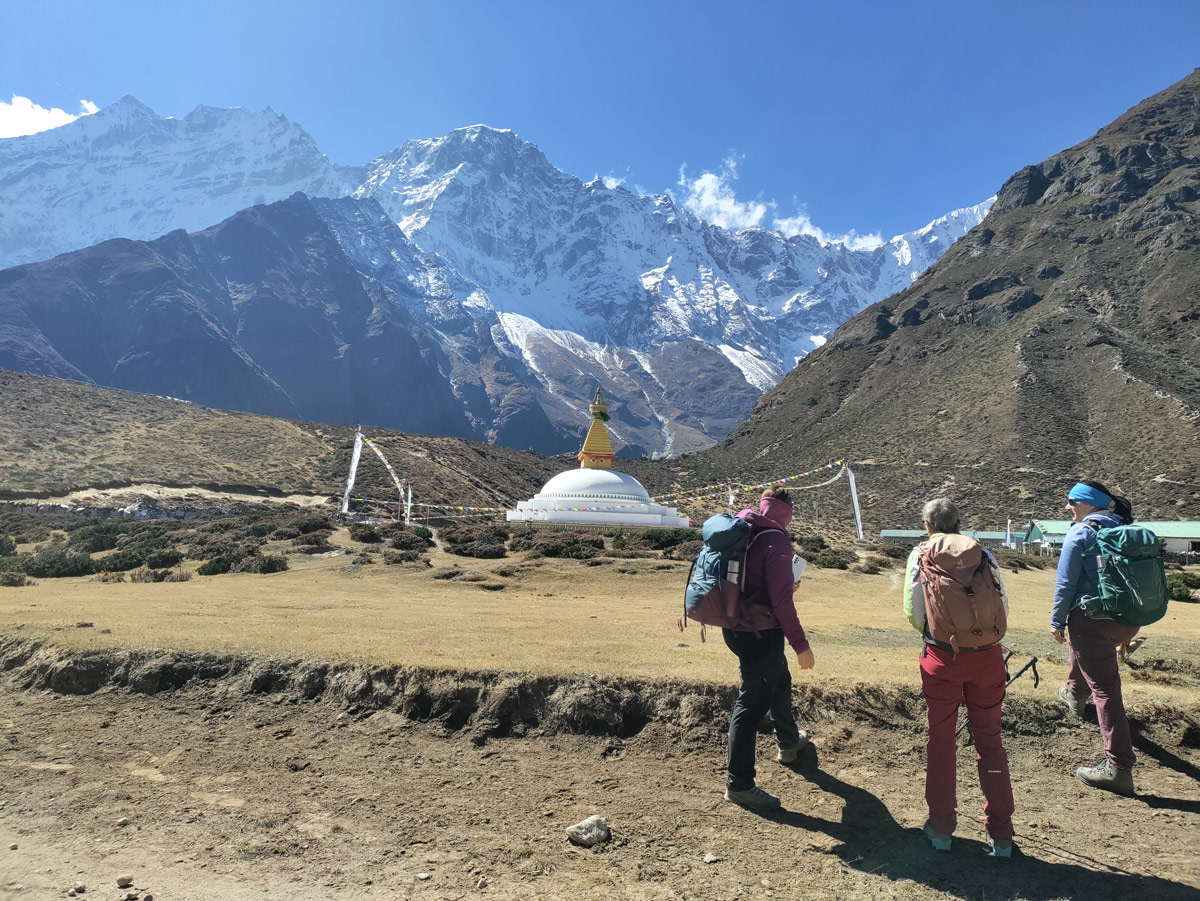
The land of soaring peaks and soul-stirring encounters, Nepal is often referred to as the ‘Amazon of Asia’. Nestled in the heart of the Himalayas, it is the land of breathtaking beauty and unparalleled adventures.
Nepal is not merely a travel destination, it is a single stop for people drawn to the adrenaline rush of high altitudes and adventures, the serenity of meditating in the monasteries, or the vibrant and colorful beauty of the cultural heritages.
With diverse landscapes, fascinating history, and a tapestry of cultures, the myriad experiences of Nepal beckon visitors from all over the world and is a top travel destination.
So, what is the best time to visit Nepal? Continue reading to find out.
Is Nepal a good place to visit?
A perfect tandem of enchanting landscapes, heart pounding adventures, heartwarming hospitality, and fascinating cultural heritages, Nepal is definitely a place worth visiting.
From trekkers to climbers to those seeking spirituality, the magic of this extraordinary land caters to all your needs, providing you with an experience unlike any other.
Diverse Landscapes
Within the small territory of Nepal lies a colorful canvas of enchanting landscapes that will provide you with a kaleidoscope of colors.
It houses the steamy jungles in the lowlands of Terai, terraced farms in the mid-hills, and the high-altitude mountain ranges housing the unique high-altitude deserts.
The Terai lowlands are the haven for flora and fauna teeming with an array of wildlife like elephants, tigers, rhinoceros, and several birds.
As you ascend from the lowlands, you enter the cultural heartland in lush hills dotted with quaint villages, picturesque valleys, and fields etched in the rolling hills along with several rivers and deep gorges.
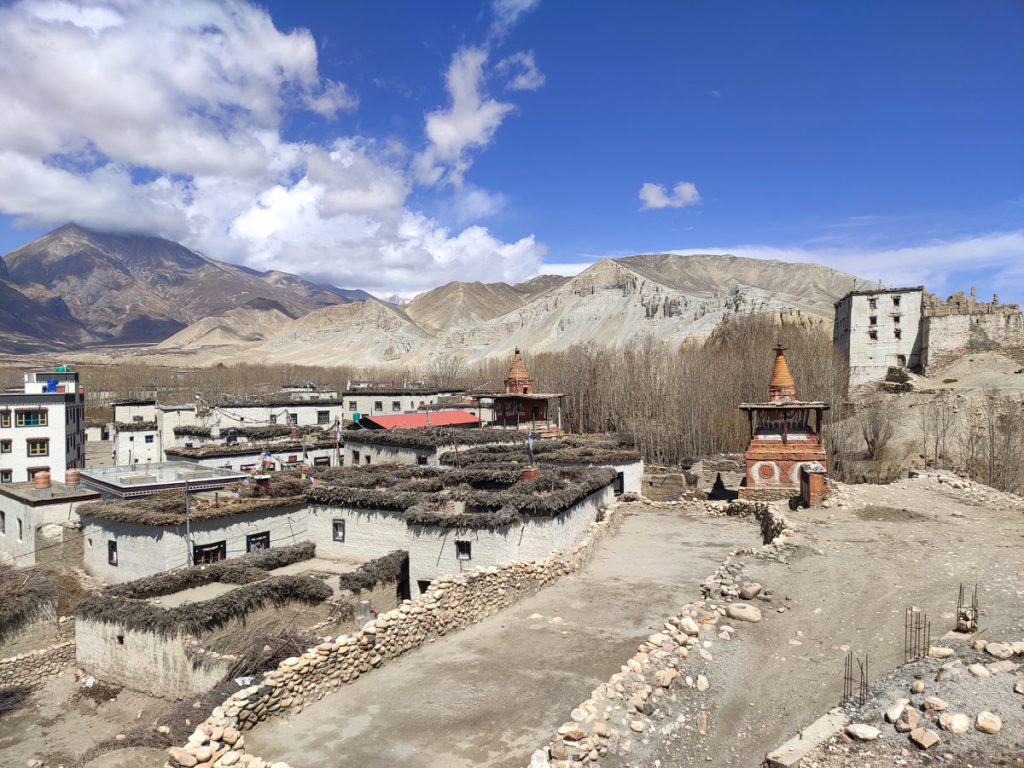
Higher than this lies the crown jewels of the country, the Himalayas. This region is home to Everest itself and features some of the tallest peaks in the world like Annapurna, Kanchenjunga, and Makalu along with other peaks like Machhapuchhre.
Nepal also features rare and beautiful high-altitude deserts in the rain shadow of the Himalayas located in places like Mustang and Dolpo in the Himalayan region.
Contrasting the lushness of other regions of Nepal, it unfolds windswept valleys and deep canyons for the visitors to explore and get a rather rustic experience. Therefore, from freshwater lakes to rugged mountain regions, Nepal has it all.
Rich Cultural Heritage
Home to many UNESCO World Heritage sites and the birthplace of Lord Buddha, Nepal has a treasure trove in the name of cultural heritage ranging from bravehearted history, religious sanctuaries, music, and much more.
The melting pot of religions, Hinduism and Buddhism are the most followed religions here.
From witnessing the close dance of life and death at Pashupatinath to delving into the spiritual energy of Buddhism at Swoyambhunath and Bouddhanath, visitors can indulge themselves in the symphony of religions and traditions.
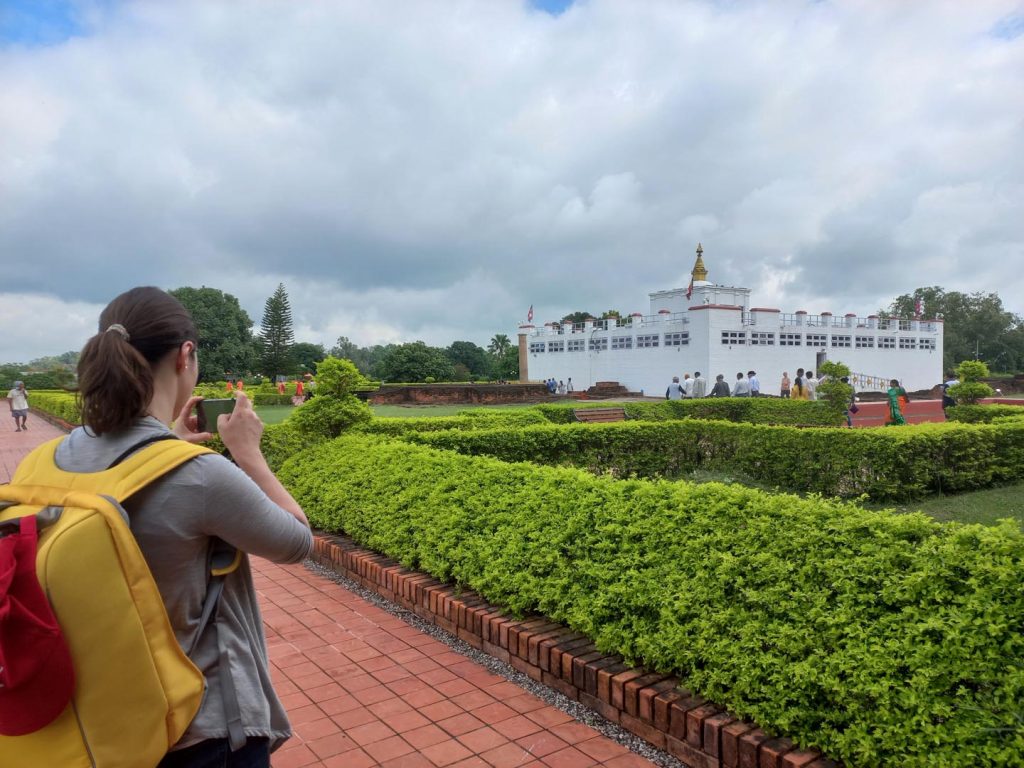
Nepal also has many festivals like Dashain and Tihar , Lhosar, and many more. Not to forget, Nepal is also home to Kumari, often known as the ‘Living Goddess’.
If you are lucky with your timing, you might even get to witness one of the iconic Jatras of the vibrant Newari community unfolding beautiful Nepali music and dance.
Taking you closer to the culture are the traditional crafts such as Thangka paintings, pottery, masks, weaving, and much more acting as the window to the heart and soul of Nepal.
Adventure Activities
For adventure seekers, Nepal is a premier destination featuring a medley of activities that provides you with the adrenaline rush and leaves your spirit soaring. Adventure awaits you at every corner of the country.
The home to some of the highest Himalayan giants, trekking is a quintessential activity including options like the iconic Everest Base Camp trek , a trek around the Annapurna region, or the less travelled Manaslu Circuit.
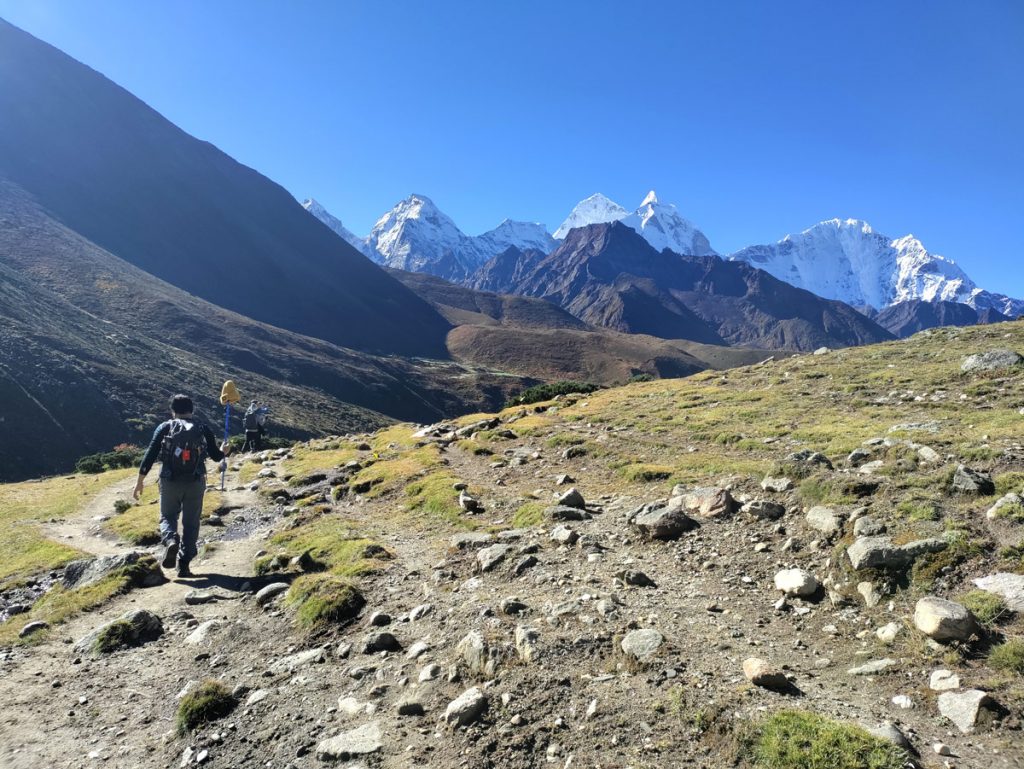
For those not satisfied with getting a closer perspective of the Himalayas, you can also climb one given you have enough determination and resilience.
You can indulge in white water rafting at the thrilling Bhote Koshi, roaring Trishuli, or the beginner-friendly Upper Seti among many options.
Bungee jumping in the world-famous Bhote Koshi gorge and paragliding amidst the towering peaks in Pokhara Valley can also be thrilling experiences.
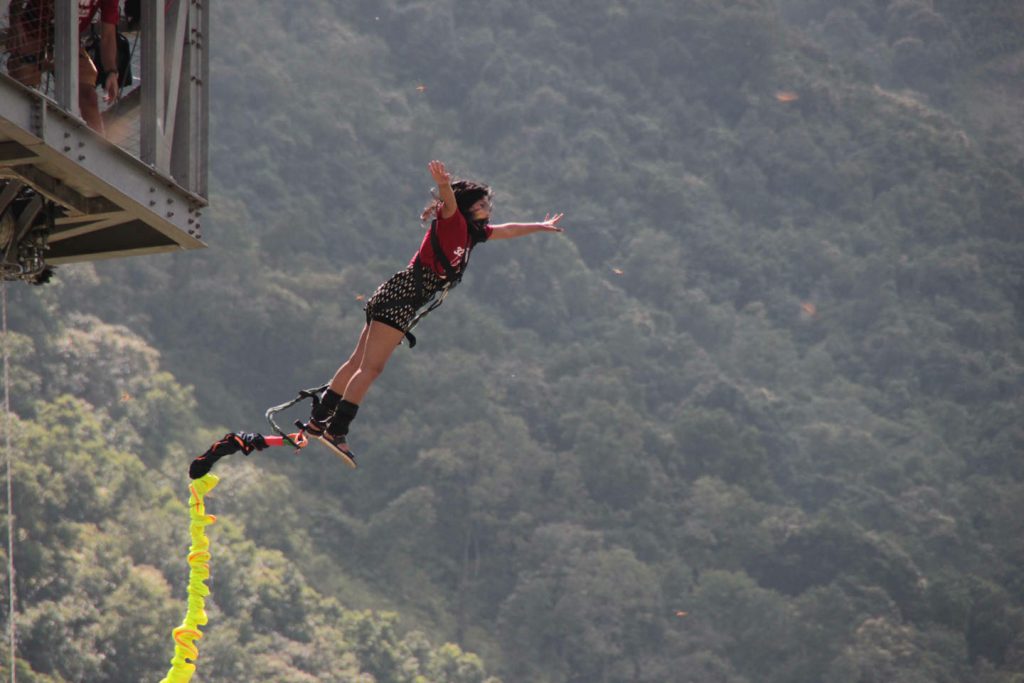
While we are taking to the skies, the hot air balloon experience in Pokhara cannot be missed.
For those inclined towards conquering the world on two wheels, embark on a mountain biking adventure in the challenging yet rewarding mountain passes in Upper Mustang , Annapurna Circuit , or even Langtang Valley .
Wildlife enthusiasts are in for a treat as they can take a wildlife safari to see tiger sightings, elephants, one-horned rhinos, and more.
Warm Hospitality
Nepalese hospitality needs no introduction as the people here are known worldwide for their warm and welcoming nature combined with the signature greeting- ‘ Namaste’ .
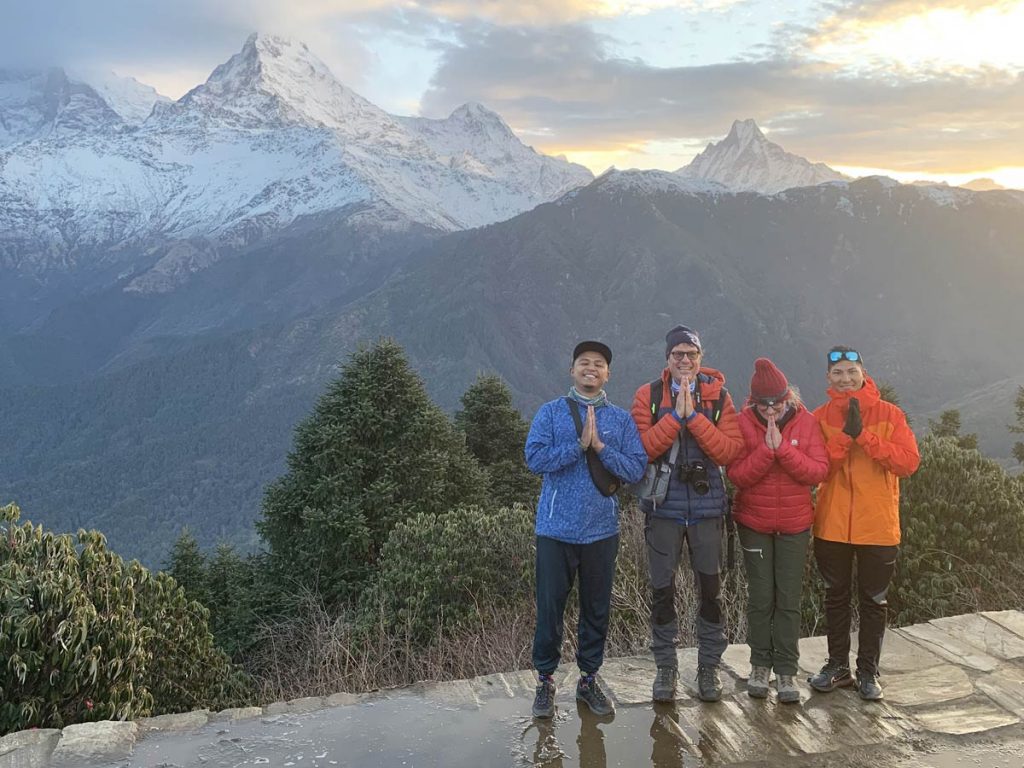
Be it in the bustling streets of the cities or the remote corners of the country, the people of Nepal are very kind and make you feel welcome instantly permeating hospitality in every interaction.
With a sense of community transcending borders, you will always feel at home, all thanks to the greeting smiles and the readiness to help. A sense of generosity and warmth lies in the people of Nepal.
Affordable Travel
Unlike many other destinations, Nepal is a viable option for extravagant travelers, budget-conscious travelers, and backpackers alike. An affordable destination, Nepal offers you great value for your money.
From relatively low travel costs to affordable stay and dining options, the journey to Nepal is a budget-friendly bliss that doesn’t require you to break the bank.
With a limited budget, you can experience lots more things compared to many popular travel destinations giving you all the more reason to plan your trip to Nepal.
When is the best time to go to Nepal?
Beyond the challenges, the months of spring (March to May) and autumn (September to November) are considered the best season to visit Nepal in general.
The moderate climates and clear skies make these seasons suitable for almost all kinds of adventures ranging from trekking, hiking, cultural tours, mountain biking, helicopter tours, and more.
Glimpse of Nepal’s Seasons
Given the diverse topography of Nepal, the country experiences a rather different seasonal cycle characterized by its four different seasons- spring (pre monsoon), monsoon, autumn (post monsoon), and winter.
Best time to visit Nepal for Trekking & Hiking
For adventure lovers wanting to trek and hike in Nepal, the autumn season (September to November) is heralded as the best time to visit Nepal followed by the months of spring (March to May).
Autumn is the peak trekking and hiking season as all the trails feature blooming landscapes with highly active flora and fauna with easier weather conditions, therefore inviting more crowds.
Treks and hikes in spring season also feature pleasant temperatures with the trails coming alive as they get painted with the different hues of several wildflowers with high wildlife activity.
Both these seasons unfold beautiful and unobstructed views of the Himalayan giants, passing on the true essence of trekking and hiking in Nepal.
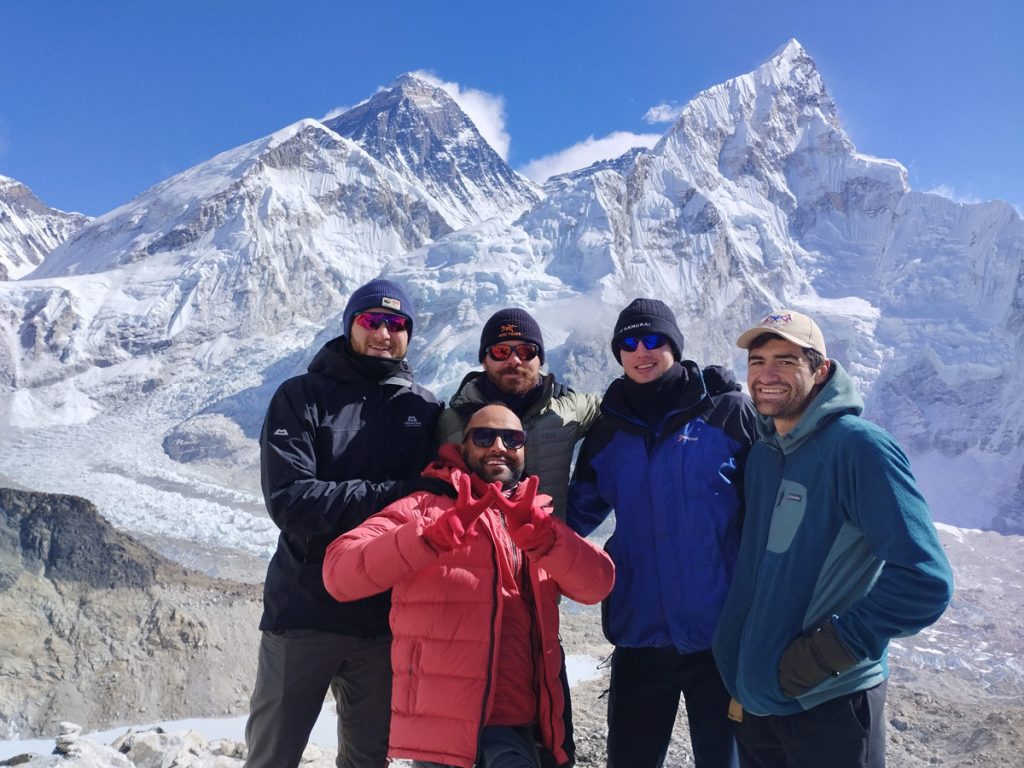
For those wanting a quieter experience, although challenging, winter (December to February) might be a good option as there is less crowd on the trekking and hiking trails of the country given the extremely cold climate.
Monsoon (June to August), however, is the season to avoid for trekkers and hiking enthusiasts as the country experiences heavy rainfall resulting in the trails becoming extremely slippery with a high risk of landslides.
Although some routes are open, exploring the trails during this season can be dangerous as you will be at risk of accidents and injuries along with the trails being infested with leeches.
Best time for cultural tours in Nepal
While a cultural tour is possible during any given season in Nepal, your experience becomes way more enhanced in the seasons of spring and autumn.
Featuring moderate climatic conditions and long days, visitors can make the most out of their day during these seasons without having to deal with the heat of the summer or the freezing temperatures of winter.
Nepal is a country rich in cultural heritage and features several festivals all year round. However, the major festivals of the country like Dashain and Tihar , Holi , and a wide range of Jatras take place in the months of spring and autumn, adding to the charm.
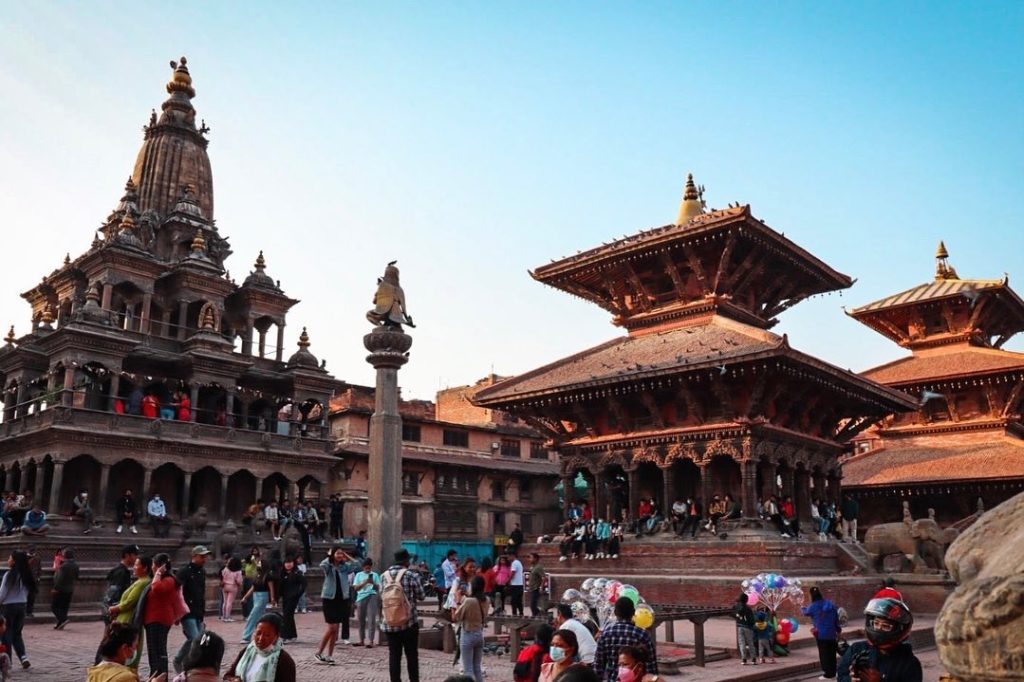
The country features lots of cultural tours like the Kathmandu Cultural Heritage Tour , combined tours like Kathmandu and Nagarkot , Kathmandu and Pokhara , as well as the overall Nepal Heritage Tour .
With clear skies and lush landscapes, these seasons allow the visitors to delve deep into the cultures of the country and witness several traditions.
However, if you want to witness the country adorned in the wintery hues and prefer exploring the cultures in solitude, winter can be a good time too.
Best time for Mountain climbing
Nepal boasts several options for mountaineering expeditions starting from Everest itself. Besides this, Mera Peak , Yala Peak , Island Peak , and Ama Dablam expedition are some other adventurous climbing options.
For gutsy visitors seeking the adrenaline rush of climbing a peak, no place can be better than the land of the Himalayas itself. However, not all seasons are suitable for mountaineering expeditions.
As mountain climbing is a risky adventure as it is, it is best to avoid seasons like monsoon and winter. Monsoon is not at all recommended for mountain climbing as the trails become extremely slippery with highly unpredictable weather and heavy rainfalls.
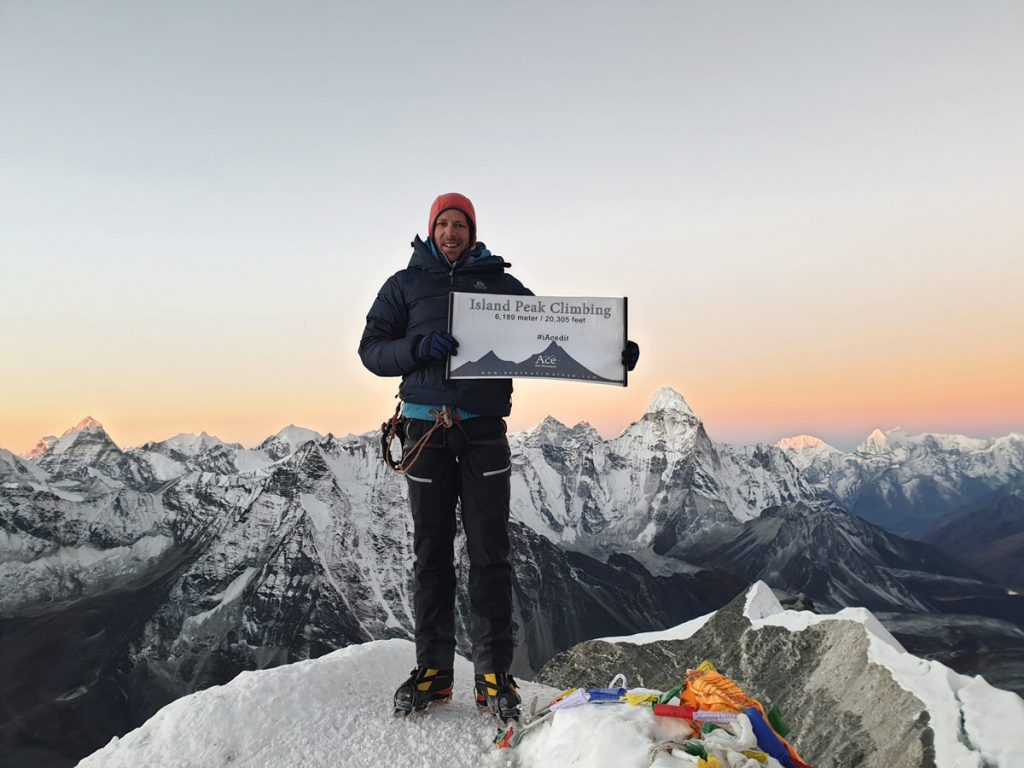
With poor visibility along the trails, the slippery trail becomes even more dangerous, and the risk of injuries is high as landslides are more common than you might think.
Mountain climbing in winter is also a big no given the extreme and unbearable temperatures of the high-altitude peaks which makes your ascent even more difficult than it already is.
The climbing trails are more prone to avalanches than ever with high risk of heavy snowfall and even blockage at times.
Spring and autumn seasons bring the minimum risk when it comes to mountain climbing in Nepal as these months feature temperatures that are way more comfortable accompanied by the clear skies and high visibility in the trails.
Although snowfalls are quite common at high altitudes, these months feature comparatively stable and predictable climatic conditions making your expedition more adventurous and less risky.
Best time for Wildlife safaris
For wildlife safari, again the months of spring and autumn are the most suitable ones. However, autumn has an upper hand here given the comparatively cooler temperatures.
Most of the wildlife safaris take place in the national parks situated in the lowlands of the country, where temperatures can go as high as 45 degrees Celsius during the months of summer.
Although the wildlife is equally active during this period, the temperature can be quite daunting. If you can take the heat, spring is a great time for wildlife safaris as you see the lush landscapes and highly active fauna.
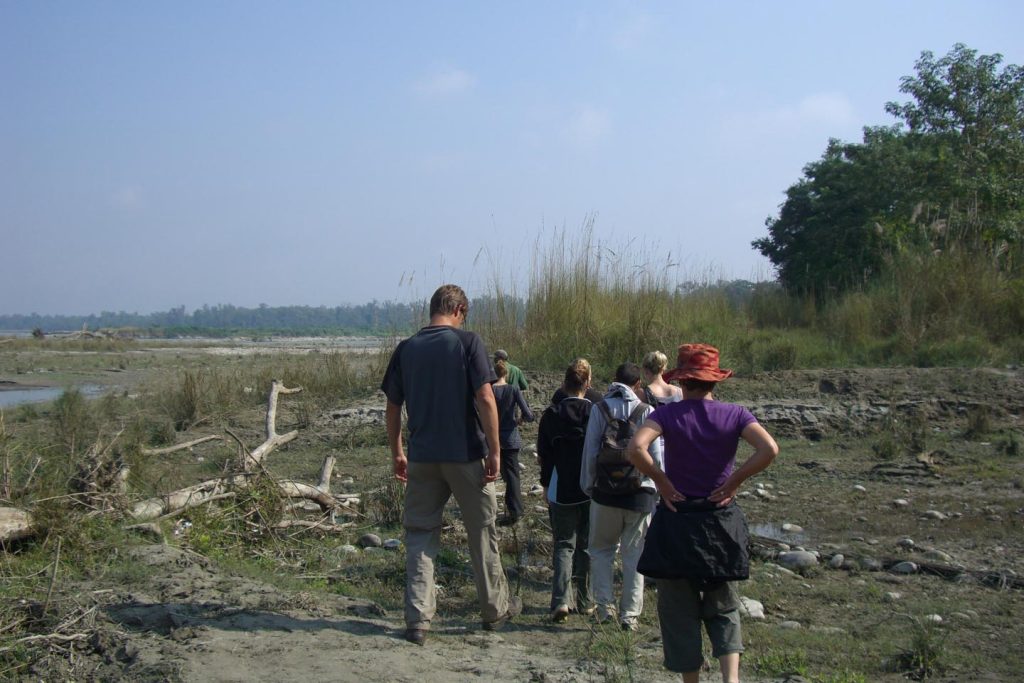
Being the post monsoon period, the autumn season adds a hint of freshness to the lush landscapes of the national parks while the animal and bird activity is equally high making it the ideal time with perfect temperature.
During the months of monsoon, you will experience lots of rainfall in these forest areas which might disrupt your experience of wildlife. And in winters, the wildlife activity is quite less with some of them being in hibernation.
Chitwan jungle safari and Bardiya jungle safari are some of the various options available for wildlife exploration in Nepal.
Best time for Mountain Biking
For those wanting to explore the Himalayas on two wheels, spring and autumn are the best seasons featuring clear skies, optimal temperatures, and crystal-clear visibility on the biking trails.
Famous biking trails like the Annapurna Circuit biking trail are adorned with lush greenery and vibrant hues of flowers making it a pleasant experience for the bikers.
The clear skies also allow you to get a perfect view of the Himalayas as you explore the rugged terrains.
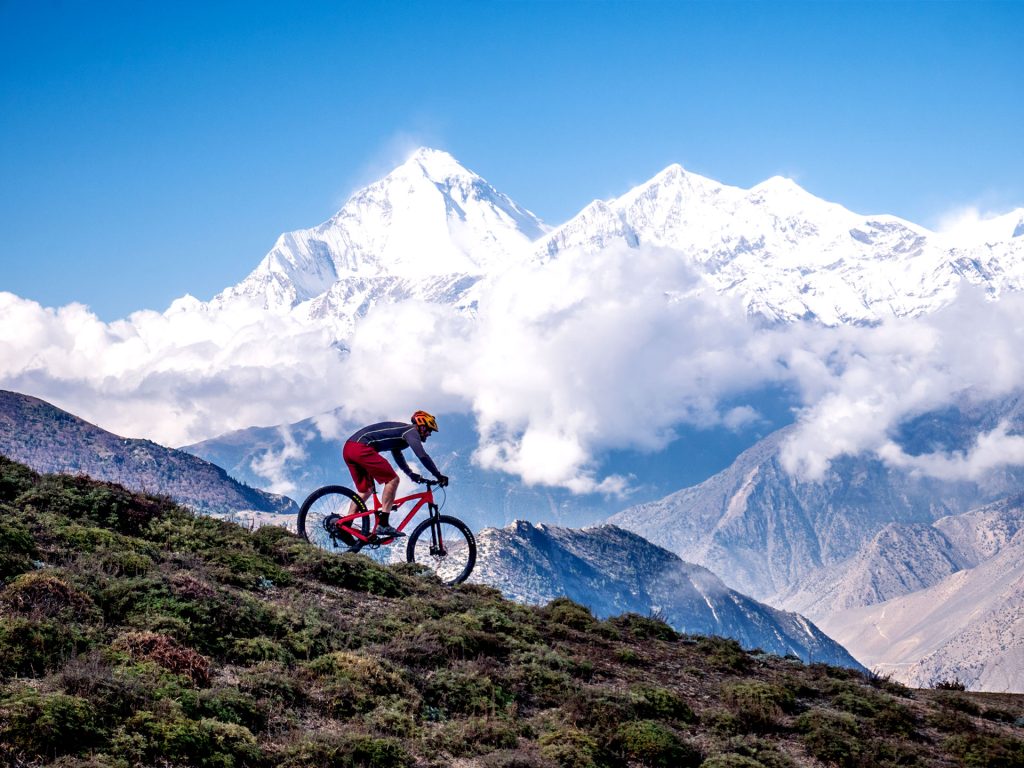
But expect a lot of bikers traffic on the trails as these seasons are the peak seasons with overflowing tourism in Nepal. Monsoon is avoided for obvious reasons of the trail being extremely slippery and hazardous.
Likewise, winters bring unbearable temperatures with frost bites being common especially for bikers. However, the perfect season also depends on factors like your preferences and your experience.
For seasoned bikers, rare adventures like mountain biking in winters and biking in the trans-Himalayan zones such as Upper Mustang biking during monsoon can be a whole new experience.
Best time for Helicopter Tours
One can aerially explore the stunning landscapes of Nepal through different helicopter tours like Everest Base Camp helicopter tour , Pokhara and Annapurna heli sightseeing , and Langtang heli sightseeing to name a few.
The best time for helicopter tours is Nepal is based on different factors, mainly on the visibility for the flight and the visibility of the landscapes. Therefore, clear skies with clear weather should be your priority.
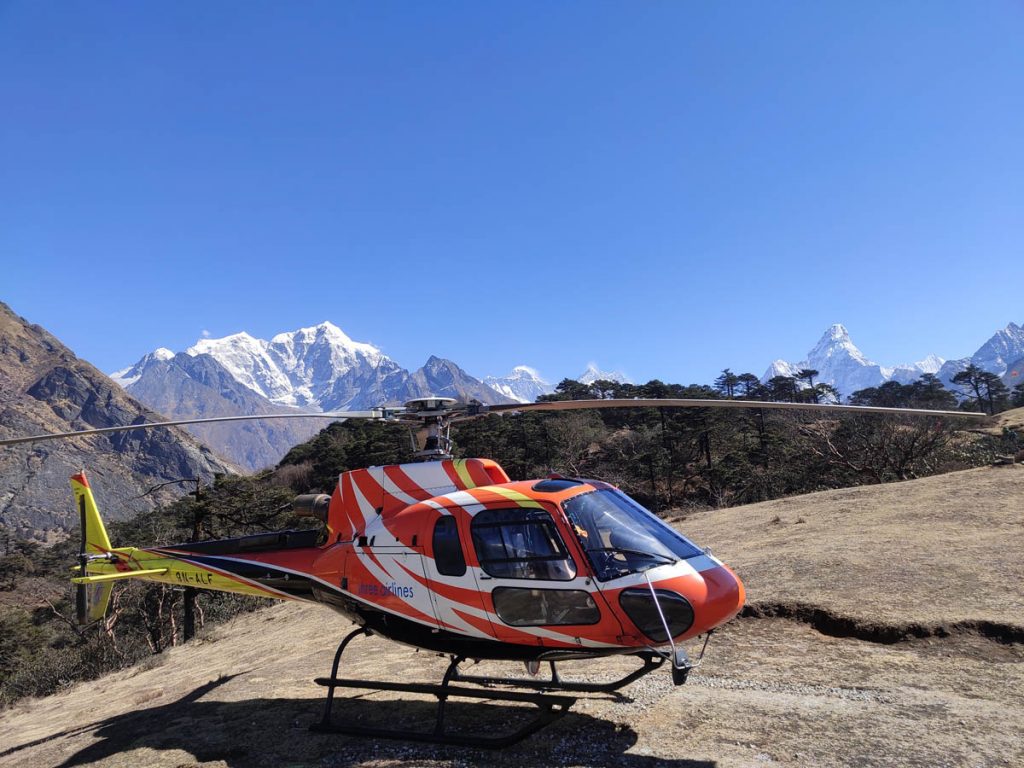
Considering these things, the months of spring and autumn again come to your rescue. These seasons feature exceptional visibility allowing the visitors to get a bird-eye view of the beautiful landscapes of the country.
Helicopter tours during monsoon and winter are highly affected by the unpredictable weather including heavy rainfall and snowfall at higher elevations. While winters present the Himalayas in all its might, it can be a risky adventure.
Morning helicopter rides give a better experience as the winds are slow giving better aerial stability and views. However, they can be quite costly during the peak seasons.
Related Blogs & Articles
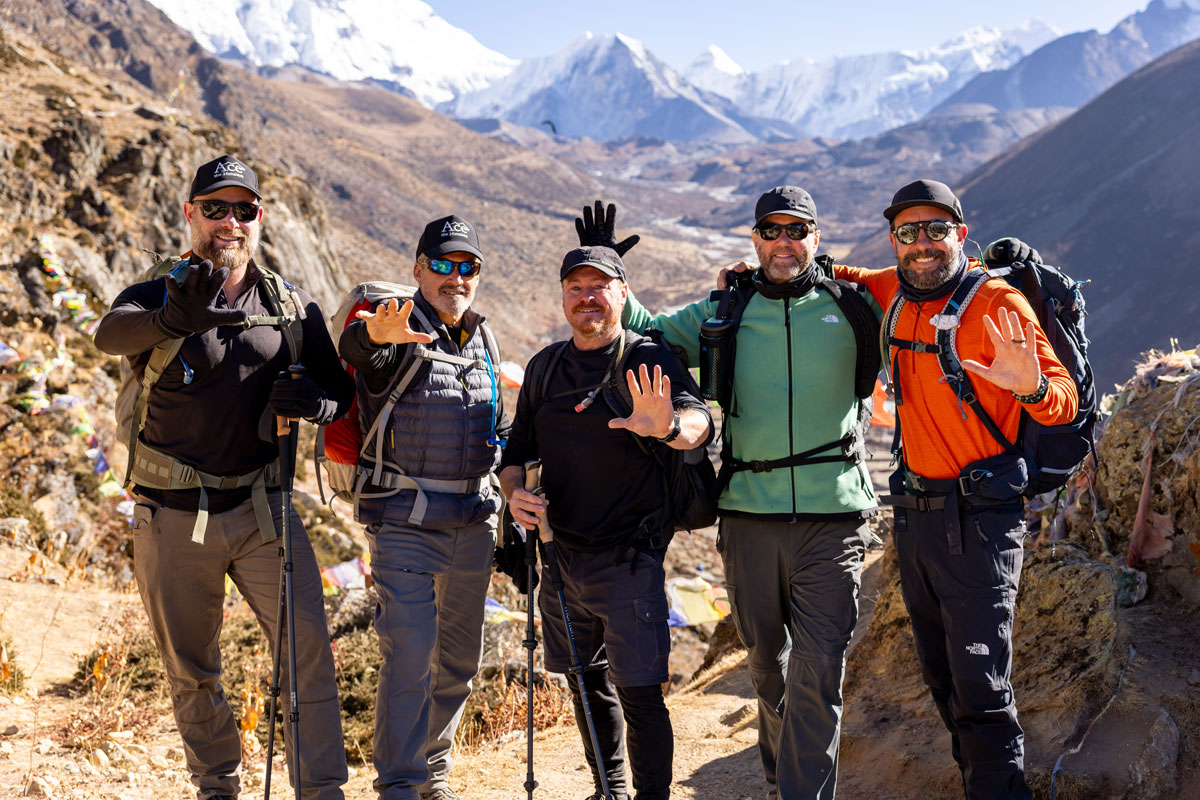
Best Things to Do During Everest Base Camp Trek
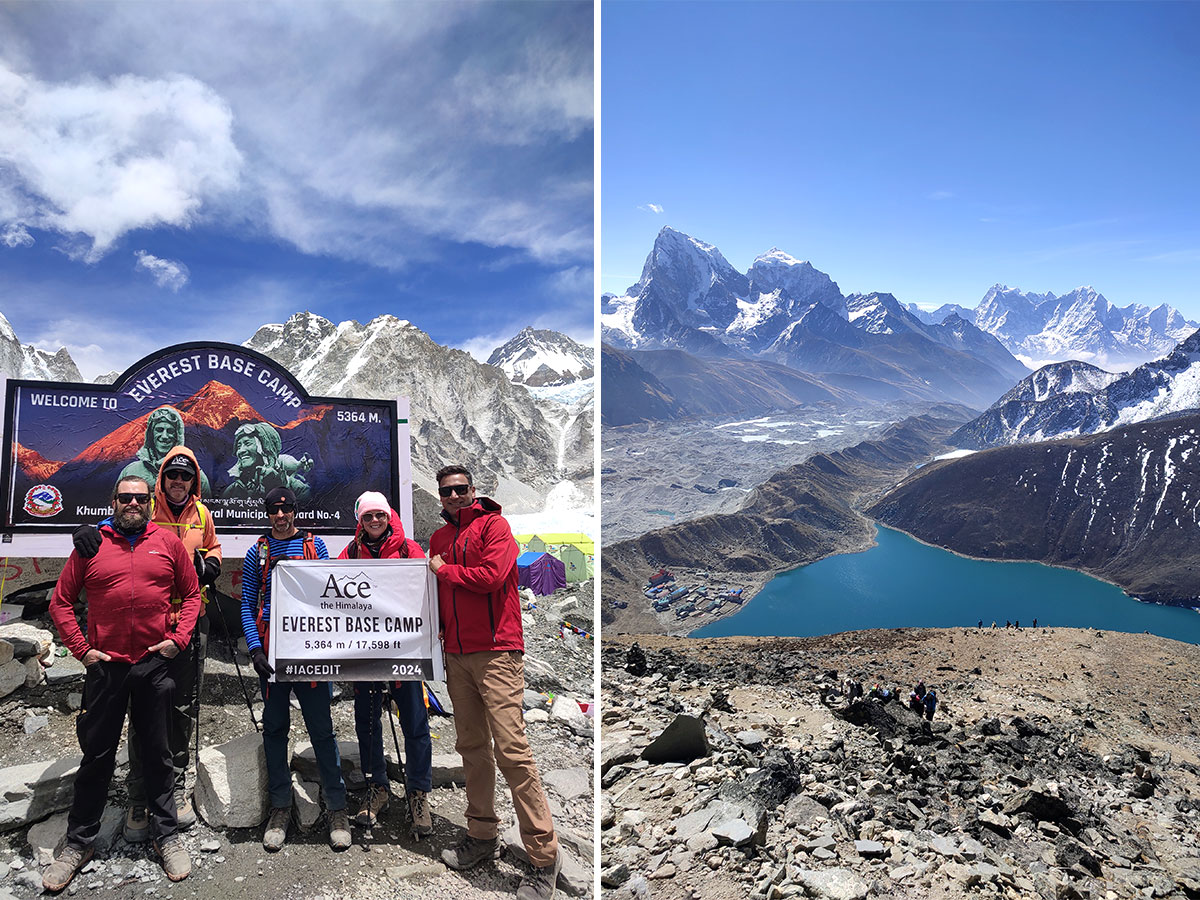
Everest Base Camp vs Gokyo Lakes: Which Trek Should You Choose?
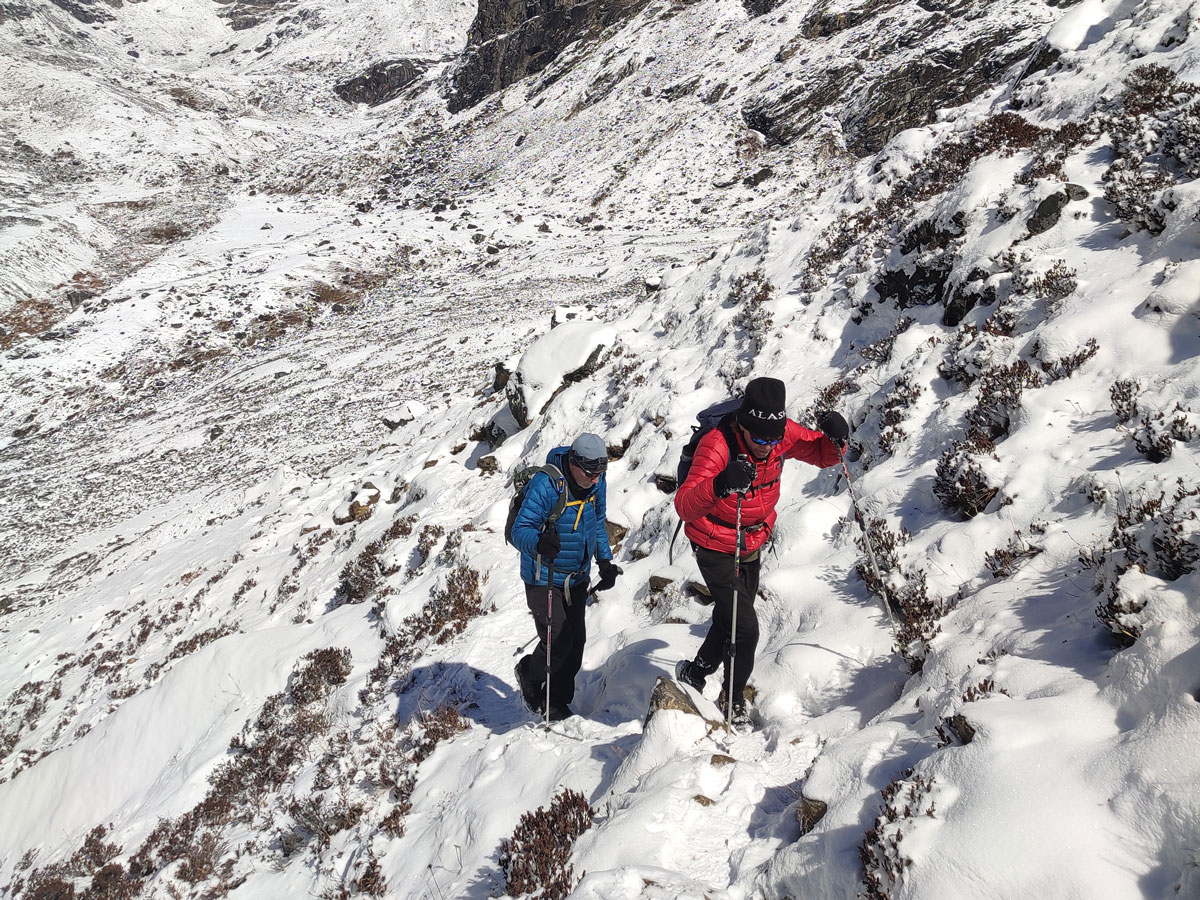
Challenging Treks in Nepal

- Email This field is for validation purposes and should be left unchanged.
Trekking in Nepal
Climbing and expedition, cultural tour and sightseeing, cycling and mountain biking, luxury treks, luxury tours, multi country tours, voluntourism trips, extend your trip.
- Everest Base Camp Heli Trek – 8 Days
- Everest Panorama Trek – 9 Days
- EBC Trek with Helicopter Return – 12 Days
- Everest Base Camp Trek – 14 Days
- Gokyo Lake Trek – 13 Days
- Gokyo and Renjo La Pass Trek – 14 Days
- Everest Base Camp Trek without Lukla Flight – 17 Days
- Gokyo to Everest Base Camp Trek – 17 Days
- Everest Base Camp with Island Peak – 19 Days
- Everest Three Passes Trek – 20 Days
- Everest High Passes and Island Peak – 23 Days
- Classical Everest Base Camp Trek – 21 Days
- Langtang Valley Trek – 10 Days
- Langtang Valley Ganja La Pass Trek – 14 Days
- Langtang Helambu Trek – 17 Days
- Ghorepani Poon Hill Trek – 9 Days
- Mardi Himal Trek – 10 Days
- Annapurna Base Camp Trek – 13 Days
- Himalayan Highlights – 13 Days
- Nar Phu Valley Trek with Annapurna Circuit – 18 Days
- Annapurna Circuit Trek – 19 Days
- Tilicho Lake Trek With Thorong La Pass – 19 Days
- Khopra Danda Trek – 11 Days
- Shivapuri-Chisapani Trek – 4 Days
- Upper Mustang Trek (Drive & Trek) – 16 Days
- Tsum Valley Trek – 16 Days
- Manaslu Circuit Trek – 15 Days
- Dhaulagiri Circuit Trek – 21 Days
- Upper Dolpo Trek – 25 Days
- Kanchenjunga Base Camp Trek – 29 Days
- Yala Peak Climbing – 13 Days
- Island Peak Climbing – 15 Days
- Mera Peak Climbing – 19 Days
- Everest Base Camp and Lobuche East – 18 Days
- Tent Peak Climbing with Annapurna Base Camp – 18 Days
- Pisang Peak and Thorung La Pass – 21 Days
- Ama Dablam Expedition – 29 Days
- Kathmandu Cultural Heritage Tour – 3 Days
- Kathmandu Heritage – 3 Days
- Inheritances of Kathmandu – 4 Days
- Glimpses of Kathmandu & Nagarkot – 5 Days
- Kathmandu and Pokhara Unveiled – 5 Days
- Explore Kathmandu – 6 Days
- Glimpse of Nepal – 8 Days
- Nepal Heritage Tour – 10 Days
- Nepal Adventure Tour – 11 Days
- Nepal Multi Sports Adventure – 11 Days
- Nepal Vista – 10 Days
- Nepal Highlights – 14 Days
- Experience Nepal – 15 Days
- One Day Biking Trip – Kathmandu – 1 Day
- Annapurna Circuit Biking – 14 Days
- Upper Mustang Biking – 16 Days
- Kathmandu Valley Rim Biking – 8 Days
- Annapurna in Luxury – 9 Days
- VVIP Everest Base Camp Trek – 10 Days
- Everest View Luxury Trek – 11 Days
- Everest Base Camp Luxury Trek – 14 Days
- Everest Base Camp Deluxe Trek – 16 Days
- Mt Everest Base Camp to Gokyo Trek – 19 Days
- Kathmandu Luxury Tour – 3 Days
- Kathmandu and Pokhara Luxury Tour – 5 Days
- Nepal Multi Sport Luxury Adventure – 11 Days
- Best of Nepal – 14 Days
- Trishuli River Rafting – 1 Day
- Everest Base Camp Helicopter Tour – 1 Day
- Everest Base Camp Heli Tour with Gokyo Extension – 1 Day
- Langtang Heli Sightseeing – 1 Day
- Pokhara and Annapurna Heli Sightseeing – 1 Day
- Paragliding in Nepal (Pokhara) – 1 Day
- Scenic Mountain Flight (Everest Flight) – 1 Day
- Ultra Light Flight – 1 Day
- Jamacho Day Hike-One day hiking trip – 1 Day
- Kathmandu Uncovered with Nagarkot – 1 Day
- Day Tour to UNESCO Heritage Sites – 1 Day
- Nepal and Tibet – 15 Days
- Nepal and Bhutan – 15 Days
- India, Nepal and Bhutan – 19 Days
- Nepal, Tibet and Bhutan – 20 Days
- Arupokhari School Volunteer Program – 14 Days
- Rebuild Home Volunteer Program – 9 Days
- Bardiya Jungle Safari – 4 Days
- Chitwan Jungle Safari – 3 Days
Trekking in Bhutan
Festival tours, motorcycling.
- Druk Path Trek – 8 Days
- Chomalhari Trek – 12 Days
- Laya Ghasa Trek – 18 Days
- Bhutan Vistas Tour – 5 Days
- Cultural Heartland Tour – 10 Days
- Hidden Valley – 11 Days
- Bhutan Multi Sports Tour – 11 Days
- Paro Tshechu Festival – 8 Days
- Punakha Tsechu – 9 Days
- Trongsa Lhuntse Tshechu – 9 Days
- Bumthang Tangbi – 11 Days
- Bhutan Ura Yakchoe – 12 Days
- Tamshingphala Choepa – 12 Days
- Mongar and Trashigang – 16 Days
- Bhutan Biking – 8 Days
- Bhutan Motorcycle Tour – 12 Days
Trekking in Tibet
- Tibet Advance Everest Base Camp – 21 Days
- Cho Oyu Expedition – 45 Days
- Shishapangma Expedition – 47 Days
- Everest Expedition via North Side – 63 Days
- Kathmandu and Lhasa Tour – 7 Days
- Tibet Heritage Tour – 8 Days
- Overland Tour to Everest Base Camp – 10 Days
- Mount Kailash Mansarovar Lake Tour – 16 Days
- Everest Base Camp Biking Tour – 21 Days
Find your adventure. The mountains are calling.
Discover A New Adventure
- Duration 0 - 10 10 - 20 20 - 30 30 - 40
- Trip Difficulty Easy Moderate Moderate to Strenuous Strenuous Very Strenuous
- Group 1 - 20 1 to 20 1 to 5 1-10 2 to 20 2-20 2+
- Altitude 0 - 500 500 - 1000 1000 - 1500 1500 - 2000 2000 - 2500 2500 - 3000 3000 - 3500 3500 - 4000 4000 - 4500 4500 - 5000 5000 - 5500 5500 - 6000 6000 - 6500 6500 - 7000 7000 - 7500

- Everest Region
- Annapurna Region
- Langtang Region
- Manaslu Region
- Other Treks
- 10 Days Himalyan Buddhist Pilgrimage Tour Nepal
- 13 Days Nepal Buddhist HimalayanTour
- 14 Days Nepal Bhutan and Tibet Tour
- 11 Days Nepal and Tibet Tour
- 9 Days Nepal and Bhutan Tour Package
- 11 Days Delights of Bhutan tour
- 5 Days Bhutan Highlights tour
- 5 Days Bhutan Cultural Tour
- 7 Days Taste of Bhutan tour
- 4 Days Tibet Lhasa Tour
- 14 Days Manasarovar and Mt. Kailash tour
- 8 days Lhasa EBC Tour and Trek
- 1 Day Kathmandu world heritage sites tour
- 6 Days Kathmandu Pokhara Tour
- 5 Days Kathmandu Nagarkot Dhulikhel
- 10 Days Highlight Nepal Tour
- 28 Days Himlung Expedition
- 36 Days Ama Dablam Expedition
- 22 Days Naya Kanga Peak Climbing
- 19 Days Tharpu Chuli Climbing
- 16 Days Lobuche East Peak Climbing
- 14 Days Chulu East Peak Climbing
- 16 Days Yala Peak Climbing
- 15 Days Pisang Peak Climbing
- 14 Days Island Peak Climbing
- 18 Days Chulu west Peak Climbing
- 14 Days Mera Peak Climbing
- 14 Days Everest Base Camp Trek
- 16 Days Everest Base Camp Trek By Road
- 20 Days Everest Classic via Jiri Trek
- 18 Days Everest Base Camp With Gokyo Trek
- 13 Days Gokyo Lakes Trek
- 12 Days Scenic Pike Hill Trek
- 1 Days Everest Base Camp Helicopter Tour
- 11 Days Everest Base Camp Heli Trek
- 20 Days Everest Three Passes Trek
- 9 Days Everest panorama Trek
- 14 Days Everest Base Camp Luxury
- 12 Days Ama Dablam Base Camp Trek
- 13 Days Annapurna Circuit Trek
- 10 Days Annapurna Basecamp Express Trek
- 12 Days Annapurna Base Camp Trek
- 8 Days Annapurna Panorama View Trek
- 11 Days Khopra Danda Trek
- 10 Days Mardi Himal Trek
- 11 Days Mohare Danda Trek
- 14 Days Annapurna Sanctuary Trek
- 8 Days Jomsom Muktinath Trek
- 21 Days Nar Phu Valley Trek
- 10 Days Langtang Valley Trek
- 11 Days Langtang Gosaikunda Trek
- 10 Days Tamang Heritage Trek
- 15 Days Tamang Heritage and Langtang Valley Trek
- 8 Days Helambu Trek
- 13 Days Ganja La Pass Trek
- 22 Days Manaslu Trek with Tsum Valley
- 20 Days Tsum Valley Trek
- 34 Days Manaslu Circuit Nar-Phu Trek
- 16 days Manaslu Circuit Trekking
- 17 days Upper Mustang Trekking
- 5 Days Nagarkot Chisapani Trek
- 18 Days Lower Dolpo Trek
- 24 days Kanchenjunga Trek
- 26 Days Upper Dolpo Trek
- Why Book with Us
- Legal Documents
- Our Friends
- Terms and Conditions

Trekking Nepal in September: Your Comprehensive Guide to Himalayan Bliss(Updated 2024)
This comprehensive guide unveils the magic of trekking Nepal in September, widely considered the sweet spot for an unforgettable experience.
Have you ever dreamt of scaling majestic mountains, witnessing breathtaking Himalayan vistas, and immersing yourself in a vibrant culture?
Look no further than Nepal, a trekker’s paradise!
Nepal, nestled amidst the Himalayas, boasts some of the world’s most spectacular trekking trails. But with diverse landscapes and varying weather patterns throughout the year, choosing the ideal time for your adventure is crucial.
We’ll delve into the reasons why September reigns supreme as the trekking season, explore the most captivating routes, and equip you with all the essential information to plan your dream trek.
So, lace up your boots, pack your sense of adventure, and get ready to embark on a journey through the heart of the Himalayas!
Best Time to Trek Nepal: Why September is Ideal
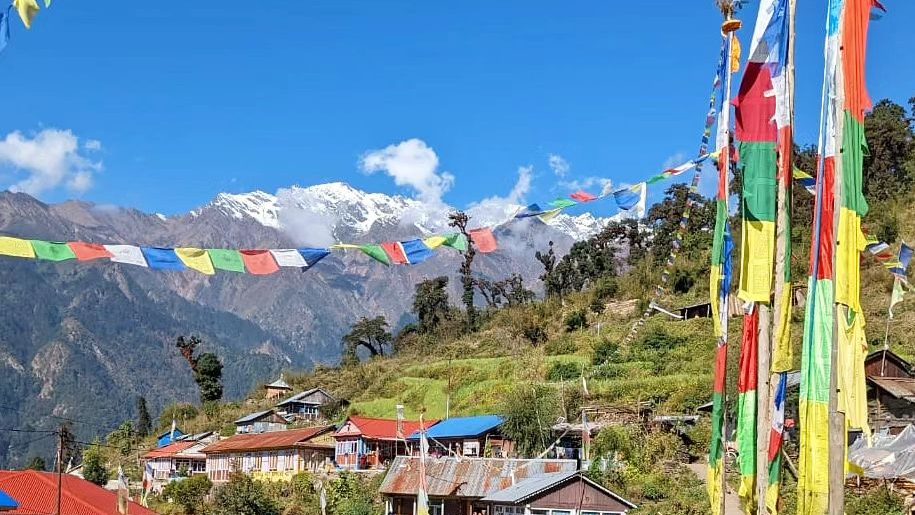
September stands out as an unparalleled month for trekking in Nepal. The monsoon season has bid farewell, leaving behind lush landscapes and rejuvenated trails. The skies are predominantly clear, offering unobstructed panoramas of snow-capped peaks.
One of the most significant advantages of trekking in September is the pleasantly warm daytime temperatures. This makes hiking comfortable and enjoyable. As the sun begins its descent, the evenings turn pleasantly cool, providing refreshing respite after a day of exploration.
Unlike the peak tourist seasons, September offers a soothing escape from the crowds. You can immerse yourself in the tranquility of nature and savor the solitude of the mountains. This exclusivity allows for a more intimate connection with the Himalayas and a deeper appreciation for their grandeur.
Furthermore, September often coincides with vibrant festivals in Nepal, offering trekkers a unique opportunity to experience the rich cultural tapestry of the country.
Popular Trekking Routes in September
Nepal boasts a diverse range of trekking trails, each offering unique experiences. September’s favorable weather conditions make it an ideal time to explore these iconic routes:
Everest Base Camp Trek
Embark on a once-in-a-lifetime journey to the foot of the world’s highest mountain. September offers clear skies, allowing for breathtaking views of Mount Everest and its surrounding peaks.
Annapurna Circuit Trek
Immerse yourself in the Annapurna region’s natural beauty, traversing diverse landscapes from lush valleys to arid deserts. September provides comfortable trekking conditions and opportunities to encounter vibrant local culture.
Langtang Valley Trek
Discover the hidden gem of Nepal, the Langtang Valley. This trek offers stunning mountain views, charming villages, and encounters with friendly Tamang people. September’s clear weather enhances the overall trekking experience.
Manaslu Circuit Trek
For adventure seekers, the Manaslu Circuit is a rewarding challenge. This less-crowded trek takes you through remote villages, pristine landscapes, and offers unparalleled views of Manaslu and other Himalayan giants. September’s stable weather conditions make this trek more accessible.
These are just a few examples of the many incredible trekking routes available in Nepal during September. When choosing your ideal trek, consider factors such as your fitness level, time available, and personal interests.
Planning Your September Trek
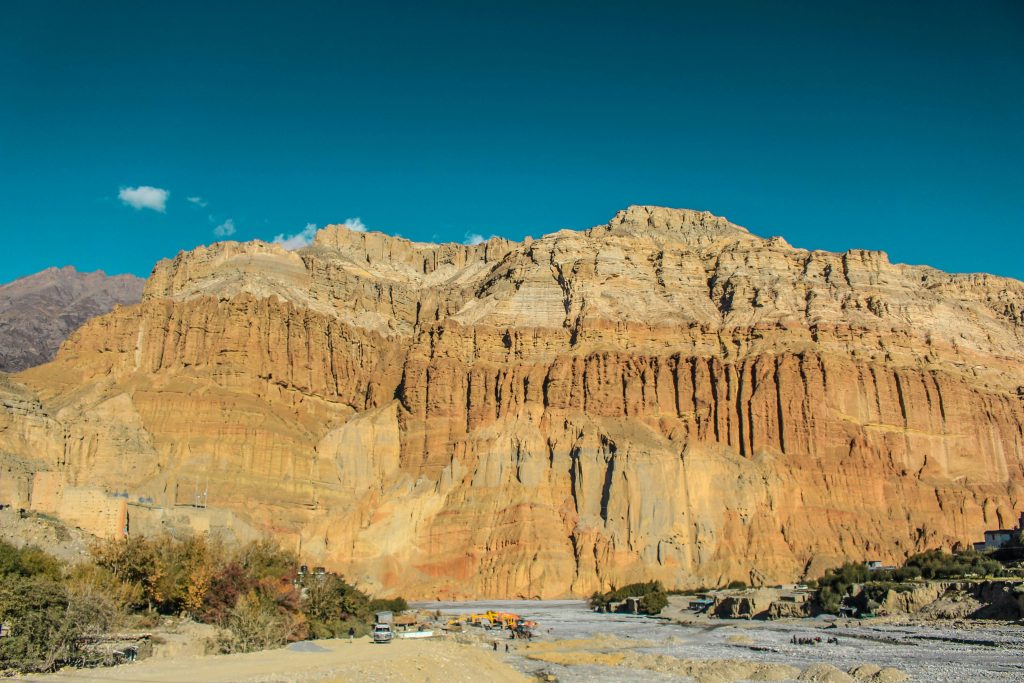
Essential Permits and Paperwork
Before embarking on your Nepalese adventure, ensure you have the necessary permits in place. The Annapurna Conservation Area Permit (ACAP) and the Manaslu Conservation Area Permit (MCAP) are required for specific regions. Research the specific permits needed for your chosen trek and allow ample time for processing.
Gear and Packing List
Packing appropriately is essential for a comfortable and enjoyable trek. Consider the weather conditions, altitude, and duration of your trip. Essential gear includes sturdy hiking boots, warm layers, waterproof clothing, a good backpack, trekking poles, and a sleeping bag.
Accommodation Options
Nepal offers a variety of accommodation choices to suit different preferences and budgets. Tea houses are popular among trekkers, providing basic amenities and hearty meals. For a more adventurous experience, camping is an option, but requires additional gear and careful planning.
Food and Water Availability
Along popular trekking routes, tea houses offer a range of local and international dishes. However, it’s advisable to carry energy-rich snacks like nuts, dried fruits, and chocolate for quick energy boosts. Water purification tablets or a water filter are essential to ensure safe drinking water.
Budget Planning
Trekking costs vary depending on the chosen route, group size, and accommodation preferences. Factor in permits, transportation, accommodation, food, gear, and guide fees when creating your budget.
Hiring a Guide or Porter
While it’s possible to trek independently, hiring a guide or porter can enhance your experience. A guide provides valuable insights, local knowledge, and assistance with navigation. Porters help carry your gear, allowing you to focus on enjoying the trek.
Trekking Experience in September
September offers an unparalleled trekking experience in Nepal. As the monsoon fades, the landscape transforms into a vibrant tapestry of lush greenery and cascading waterfalls. The clear autumn skies provide breathtaking vistas of snow-capped peaks, making every step of your journey a visual feast.
While the trekking experience is generally comfortable, it’s essential to be prepared for potential challenges. Altitude sickness can affect trekkers, especially at higher elevations. Acclimatization is crucial to prevent discomfort. Staying hydrated, taking rest days, and listening to your body are essential precautions.
To ensure a safe and enjoyable trek, it’s advisable to pack appropriate clothing, including layers for changing weather conditions. Sturdy hiking boots with good ankle support are essential. Sunscreen, sunglasses, and a hat are crucial to protect yourself from the sun’s rays.
Immerse yourself in the local culture by interacting with friendly locals and exploring charming villages along the trekking routes. Nepal’s rich heritage and warm hospitality will leave a lasting impression.
Trekking Experience in September: A Weather Comparison
September emerges as the golden period for trekking in Nepal due to its exceptional weather conditions. Let’s compare it to other seasons to understand why:
- Spring (March-May): While offering blooming landscapes, spring can be unpredictable with occasional rain showers and potential landslides.
- Summer (June-August): The monsoon season brings heavy rainfall, making trekking challenging and often unsafe.
- Autumn (September-November): This is the peak trekking season with clear skies, stable weather, and pleasant temperatures.
- Winter (December-February): Although offering stunning snow-covered landscapes, winter brings freezing temperatures and heavy snowfall, making trekking difficult in many regions.
September stands out as the perfect balance between pleasant weather and stunning scenery. The monsoon’s retreat leaves behind lush vegetation, while the skies remain clear for breathtaking mountain views. Additionally, the risk of landslides and other weather-related hazards is significantly reduced.
Would you like to proceed to the next section, or would you like to delve deeper into photography opportunities or responsible tourism?
Whitewater Rafting in Nepal: A Thrilling Adventure
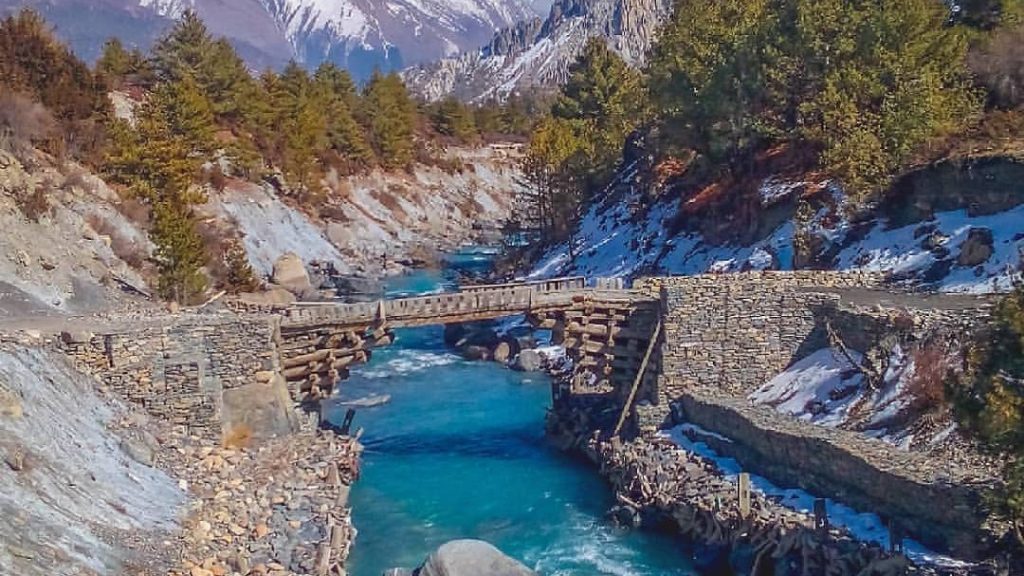
Nepal’s diverse rivers offer some of the world’s most thrilling whitewater rafting experiences. From gentle Class II rapids to adrenaline-pumping Class V challenges, there’s something for every adventure seeker.
September is an ideal month for rafting in Nepal. The monsoon season has subsided, providing optimal water levels for exhilarating rides. The rivers are well-oxygenated and offer a mix of rapids, making them suitable for both beginners and experienced rafters.
Popular rafting rivers in Nepal include:
- Trisuli River: The most accessible and popular rafting destination, offering a mix of rapids suitable for all levels.
- Sun Koshi River: A longer and more challenging rafting adventure, known for its high-volume rapids and stunning scenery.
- Karnali River: A multi-day expedition for experienced rafters, offering a wild and untamed experience.
- Bhote Koshi River: A scenic and exciting river with a variety of rapids, suitable for both beginners and intermediate rafters.
Rafting trips typically include:
- Experienced guides
- All necessary equipment
- Safety briefing
- Opportunities to swim and enjoy riverside activities
Whether you’re a seasoned rafter or a first-time adventurer, whitewater rafting in Nepal is an unforgettable experience. The thrill of navigating rapids, the beauty of the surrounding landscapes, and the camaraderie of fellow rafters create lasting memories.
As we mentioned, September offers an exceptional trekking experience in Nepal. The monsoon’s retreat creates a vibrant landscape of lush greenery, while the clear skies provide stunning vistas of the Himalayas.
Highlights of trekking in September:
- Clear weather: Enjoy unobstructed views of snow-capped peaks.
- Pleasant temperatures: Comfortable daytime temperatures and cool evenings.
- Lush landscapes: Immerse yourself in the beauty of the post-monsoon scenery.
- Fewer crowds: Experience the tranquility of the mountains.
- Cultural experiences: Encounter local festivals and immerse yourself in Nepalese culture.
Challenges and Preparations:
While September offers optimal conditions, it’s essential to be prepared for potential challenges:
- Altitude sickness: Acclimatize gradually to minimize discomfort.
- Packing: Bring appropriate clothing for varying weather conditions.
- Safety: Follow guidelines and listen to your body.
By understanding the unique characteristics of September trekking and taking the necessary precautions, you can embark on an unforgettable adventure in Nepal.
Photography Opportunities in Nepal
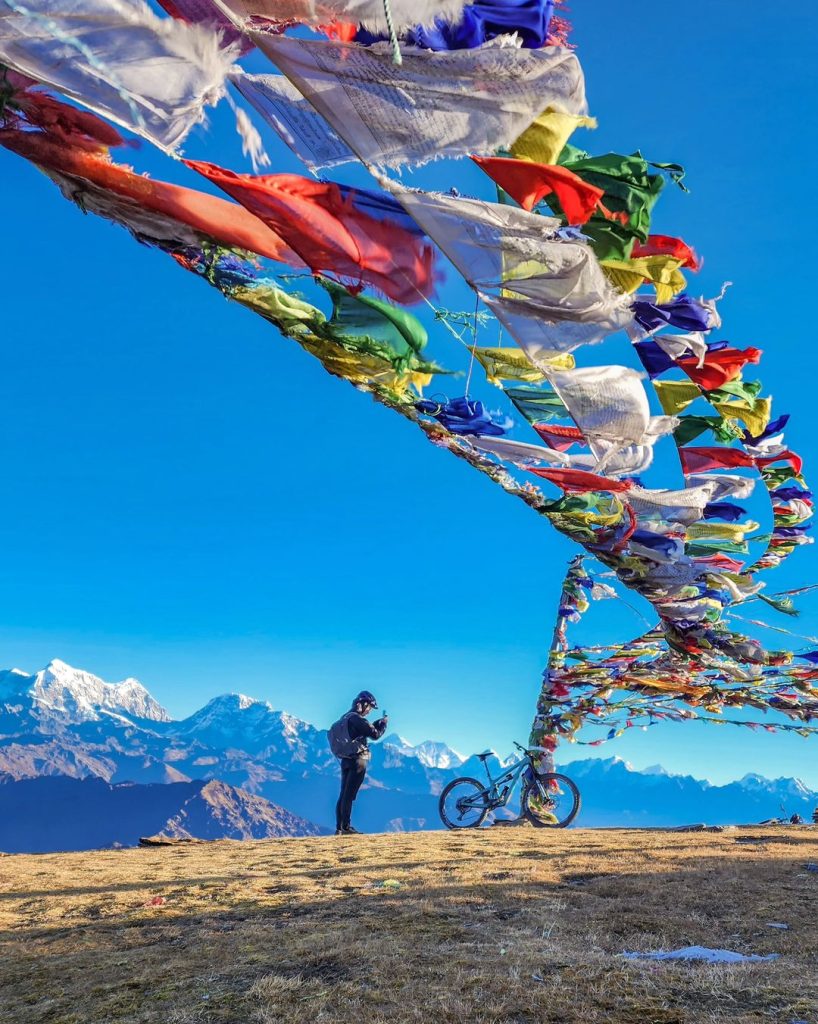
Nepal is a photographer’s paradise, offering an endless array of stunning subjects. September, with its clear skies and vibrant landscapes, provides exceptional opportunities to capture unforgettable images.
Here are some photography tips to make the most of your Nepal adventure:
- Golden Hour Magic: Capture the breathtaking beauty of the Himalayas bathed in the warm glow of sunrise and sunset.
- Cultural Insights: Immerse yourself in the local culture and capture candid moments of everyday life.
- Wildlife Encounters: Keep an eye out for diverse wildlife, from birds to rare mammals.
- Landscape Photography: Explore the vast landscapes, from snow-capped peaks to lush valleys.
- Gear Essentials: Bring a camera with a good zoom lens to capture distant mountain ranges. A tripod is essential for capturing stunning landscapes and low-light conditions.
Some popular photography spots in Nepal include:
- Everest Base Camp: Capture iconic images of the world’s highest mountain.
- Annapurna Circuit: Photograph diverse landscapes, from terraced fields to snow-capped peaks.
- Langtang Valley: Capture the unique beauty of this hidden Himalayan valley.
- Pokhara: Enjoy stunning lake views and opportunities for sunrise and sunset photography.
Remember to respect local customs and obtain necessary permits for photography in sensitive areas.
Responsible Tourism in Nepal
Nepal’s natural beauty and rich cultural heritage make it a captivating destination, but it’s essential to tread lightly to preserve this precious environment. Responsible tourism plays a vital role in ensuring the long-term sustainability of the country’s tourism industry.
Here are some ways to be a responsible traveler in Nepal:
- Support local communities: Choose accommodations and guides that are locally owned and operated. Purchase souvenirs from local artisans to contribute to the economy.
- Respect the environment: Minimize your waste by carrying reusable water bottles and avoiding single-use plastics. Stay on designated trails to protect fragile ecosystems.
- Cultural sensitivity: Dress modestly when visiting religious sites, respect local customs, and learn basic Nepali phrases.
- Support conservation efforts: Contribute to organizations working to protect Nepal’s wildlife and natural habitats.
- Choose responsible tour operators: Select companies that prioritize sustainability and ethical practices.
By following these guidelines, you can help preserve Nepal’s natural beauty and contribute to the well-being of its local communities. Responsible tourism ensures that future generations can continue to enjoy this incredible country.
Your Unforgettable Nepal Adventure Awaits
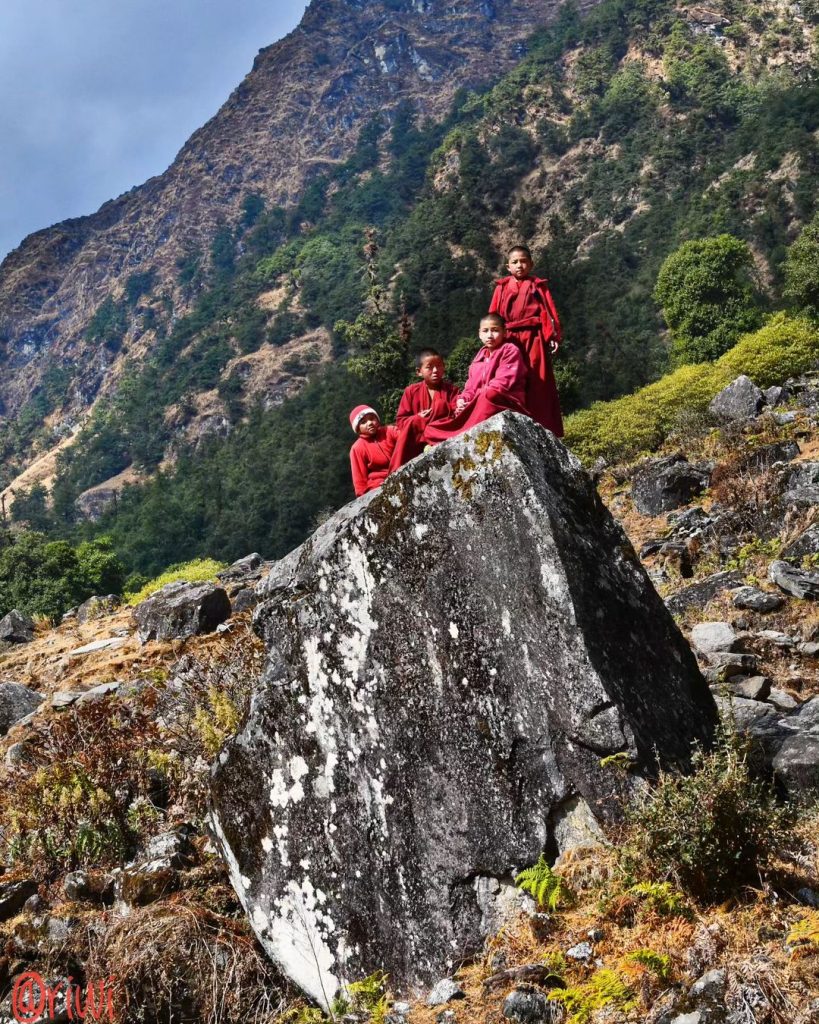
Trekking in Nepal during September offers an unparalleled experience, combining breathtaking landscapes, favorable weather, and the opportunity to immerse yourself in the rich culture of the Himalayas. Whether you’re an experienced trekker or a first-time adventurer, there’s a perfect trail waiting for you.
From the majestic peaks of the Everest region to the tranquil beauty of the Annapurna Circuit, Nepal has something to offer everyone. By planning your trip carefully, respecting the environment, and supporting local communities, you can contribute to the preservation of this natural wonder for generations to come.
Ready to embark on your Nepalese adventure? Let Third Eye Adventure be your trusted partner in exploring the Himalayas. With our expert guides, personalized itineraries, and commitment to responsible tourism, we ensure an unforgettable experience.
Contact us today to start planning your dream trek!
[Insert contact information for Third Eye Adventure]
[Insert strong call to action, such as a limited-time offer or a free consultation]
Remember to include high-quality images throughout the blog post to enhance visual appeal and engage readers.
Frequently Asked Questions (FAQs)
Is september the best month to trek in nepal.
- While September is considered one of the best months, October and November also offer favorable conditions.
Do I need a guide for trekking in Nepal?
- While it’s possible to trek independently, hiring a guide can enhance your experience, especially for first-time trekkers.
What should I pack for a trek in Nepal in September?
- Essential items include sturdy hiking boots, warm layers, waterproof clothing, a good backpack, and trekking poles.
What is the best trekking route for beginners in Nepal?
- The Annapurna Sanctuary Trek is a popular choice for beginners, offering stunning scenery and gradual acclimatization.
Is it safe to drink tap water in Nepal?
- It’s advisable to purify water before drinking. Water purification tablets or a water filter are recommended.
What vaccinations are required for trekking in Nepal?
- Consult with a travel doctor for the latest recommendations, but standard vaccinations like hepatitis A and typhoid are often suggested.
What is the cost of trekking in Nepal?
- The cost varies depending on the chosen route, group size, and accommodation preferences. Budgeting around $30-50 per day is a reasonable estimate.
Can I trek alone in Nepal?
- While it’s possible to trek alone, it’s generally recommended to go with a group or hire a guide for safety reasons.
What is the best way to get to Nepal?
- Kathmandu’s Tribhuvan International Airport is the main gateway to Nepal.
Can I arrange a trek once I arrive in Nepal?
- It’s possible to book treks upon arrival, but it’s recommended to plan to secure preferred dates and accommodations.
Recent Blogs
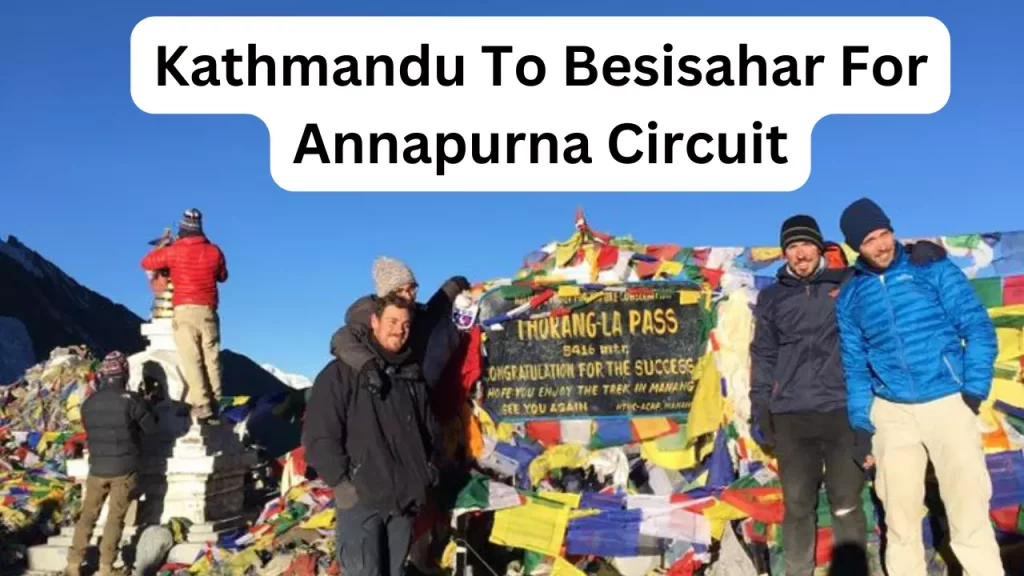
How To Get from Kathmandu to Besisahar? Flight, Bus
Kathmandu to Besisahar is an iconic journey for anyone traveling to Nepal. The 173 km journey takes you through some of the most breathtaking landscapes in the country. Travelers have the option to take a bus, plane, or jeep, depending on the kind of experience they are looking for.

Annapurna Circuit Trek Guide: Tips, Itinerary, and Safety
Discover essential tips for the Annapurna Circuit Trek, including best times to go, itinerary advice, safety measures, and cultural insights for a memorable journey in Nepal.
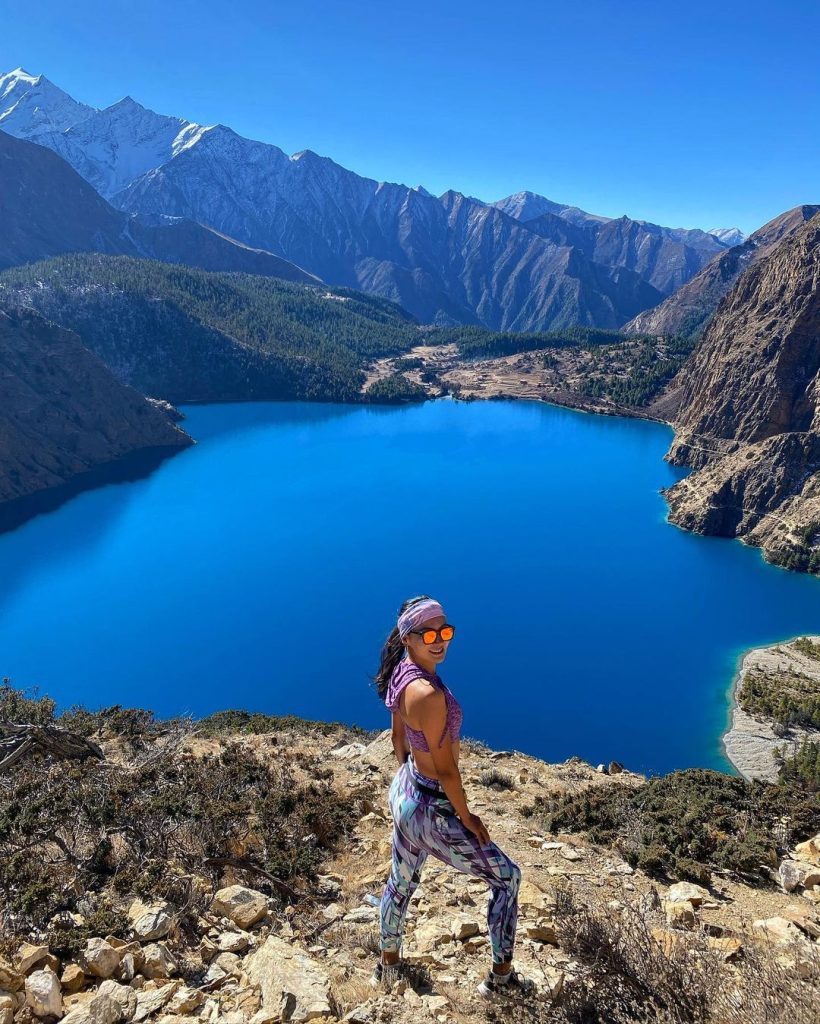
Latest Trekking Rules in Nepal 2024: Permit Guidelines & Tips
Explore the essential trekking rules and permit guidelines for Nepal in 2024. Learn how Third Eye Adventure simplifies the process for a hassle-free trek.
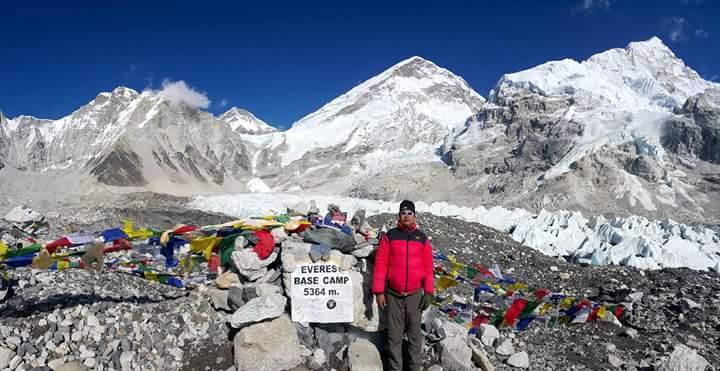
Everest Base Camp Packing Guide: Essential Gear and Tips for Your Trek 2024/25
Brief Overview of Everest Base Camp Trekking The Everest Base Camp trek is one of the world's most iconic and challenging adventures. Situated in the...

How to Plan the Perfect Honeymoon in Nepal

Honeymooners: ‘Enjoy the Virginity in the Virgin Land.’
Open the window of the world and see, Nepal is a breathtaking destination for honeymooners, offering a perfect blend of natural beauty, cultural richness, and adventure. Whether you want a romantic getaway in the mountains or a peaceful retreat in a serene valley, Nepal has something for every couple to play on the virgin land.
Here’s how you can plan the perfect honeymoon trip in Nepal.
Related read : How to Plan the Ultimate Two Weeks in Nepal
Here’s an overview:
Choosing the Right Time to Plan Your Honeymoon in Nepal
Deciding on the honeymoon destination, kathmandu valley, chitwan national park, selecting the ideal accommodation, planning romantic activities, cultural and adventure excursions, dining and culinary experiences, customizing your honeymoon package, travel essentials, creating lasting memories.

Best Seasons : The ideal time for a honeymoon in Nepal is during the spring (March to May) and autumn (September to November) seasons. During these periods, the weather is pleasant, the skies are clear, and the landscape is vibrant with blooming flowers or lush greenery.
Avoiding Monsoon and Winter : The monsoon season (June to August) brings heavy rainfall, making it difficult for outdoor activities. Winter (December to February) can be very cold, especially in the mountainous regions.
For cultural enthusiasts : Explore ancient temples, palaces, and monasteries. Kathmandu, Bhaktapur, and Patan are rich in culture and history.
Romantic experiences : Enjoy a romantic dinner at a rooftop restaurant with a view of the Himalayas or walk through Bhaktapur’s old streets.
Nepal offers a variety of honeymoon destinations, each catering to different preferences.
For nature lovers : This picturesque city is known for its stunning lakes, mountains, and laid-back atmosphere. Ideal for couples who love nature and tranquility.
Adventure activities : Paragliding, boating on Phewa Lake, or hiking to the World Peace Pagoda.

For wildlife enthusiasts : A perfect destination for couples who enjoy nature and wildlife. Go on a jungle safari to spot rhinos, tigers, and elephants.
Romantic stay : Opt for a luxury jungle resort that offers private balconies overlooking the river or jungle.

For mountain lovers : A small hill station near Kathmandu, famous for panoramic views of the Himalayas, including Mount Everest .
Sunrise and sunset views : Enjoy breathtaking views of the sunrise and sunset over the mountains, making it an ideal romantic setting.

For a peaceful retreat : A quaint hilltop village with a well-preserved old-world charm, offering tranquility and stunning views.
Cultural immersion : Experience the local culture, traditional Newari architecture, and warm hospitality.

For spiritual seekers : Visit the birthplace of Lord Buddha, offering a serene and spiritual atmosphere.
Meditation and peace : Engage in meditation sessions and explore monasteries from different Buddhist traditions.

- Luxury hotels and resorts : For a lavish experience, choose from the many 5-star hotels and resorts in Nepal that offer luxurious amenities, spa services, and breathtaking views.
- Boutique hotels : Opt for smaller, boutique hotels that provide personalized services and a more intimate atmosphere.
- Heritage hotels : Stay in a converted palace or a traditional Newari house for a unique cultural experience.
- Eco-friendly lodges : If you’re an environmentally conscious couple, consider staying at an eco-lodge that focuses on sustainability.

- Helicopter tour to everest : Experience a once-in-a-lifetime helicopter ride to see Mount Everest up close. Some packages include a champagne breakfast with a view of the Himalayas.
- Private boating on Phewa Lake : Enjoy a romantic boat ride on Phewa Lake in Pokhara, surrounded by mountains and the reflection of the Annapurna Range.
- Couple spa treatment : Indulge in a relaxing couple’s spa treatment at one of the luxurious spas, offering traditional Ayurvedic therapies.
- Sunrise and sunset views : Whether it’s from Nagarkot, Sarangkot, or Poon Hill, watching the sunrise or sunset over the Himalayas is a must-do romantic activity.
- Hot air balloon ride : In Pokhara, take a hot air balloon ride to see the Annapurna Range from above, providing an unforgettable experience.

- Visit temples and monasteries : Explore the spiritual side of Nepal by visiting iconic temples like Pashupatinath, Swayambhunath, and Boudhanath in Kathmandu.
- Trekking together : For adventurous couples, consider a short trek like the Ghorepani Poon Hill Trek, which offers stunning mountain views without being too strenuous.
- River rafting : Experience the thrill of white-water rafting on rivers like Trishuli or Seti, which also offer beautiful scenery along the way.
- Exploring local markets : Spend some time in the local markets of Kathmandu or Pokhara, shopping for souvenirs, handicrafts, and traditional Nepali items.

- Traditional Nepali cuisine : Enjoy a romantic dinner at a traditional Nepali restaurant, trying dishes like Dal Bhat, Momos, and Newari cuisine.
- Dining with a view : Choose a restaurant with a panoramic view of the mountains or the cityscape, especially in places like Nagarkot or Sarangkot.
- Private dining : Many luxury resorts offer private dining experiences, where you can have a candlelit dinner under the stars or in a secluded setting.

- Tailored itinerary : Work with a travel agency to customize your itinerary based on your interests, whether it’s adventure, relaxation, culture, or a mix of everything.
- Special add-ons : Consider adding special touches like a private guide, a surprise gift for your partner, or a vow renewal ceremony in a beautiful location.
- All-inclusive packages : Opt for all-inclusive honeymoon packages that cover accommodation, meals, transportation, and activities, allowing you to relax and enjoy without any worries.
- Visa and documentation : Ensure that you have the necessary visas and travel documents. Nepal offers visas on arrival for many nationalities.
- Health precautions : Consider getting travel insurance and ensure you have any required vaccinations. Be mindful of altitude sickness if traveling to higher elevations.
- Packing tips : Pack according to the season and the activities planned. Comfortable shoes, warm clothes (for higher altitudes), and layers are essential.
- Photography : Hire a professional photographer for a day to capture your honeymoon moments, whether it’s during a trek, a visit to a temple, or simply enjoying the scenery.
- Souvenirs : Bring back unique Nepali handicrafts, such as pashmina shawls, Thangka paintings, or handmade jewelry, as keepsakes of your special trip.

Planning the perfect honeymoon in Nepal involves a mix of adventure, culture, and romance, tailored to your preferences. By carefully selecting the destination, activities, and accommodations, you can create a memorable experience that you’ll cherish for a lifetime.
Nepal’s diverse landscapes and rich culture make it an ideal honeymoon destination for every couple seeking a unique and unforgettable journey.
Alchemy Travels
Alchemy Travels has an awesome team of experienced pros who have dedicated years to perfecting their craft in the world of travel. Their crew knows their stuff when it comes to the amazing destinations they guide you through on tours or epic treks in Nepal. Drop them a line:
Contact Alchemy Travels directly :
Alchemy Travels is formed by a team of experienced and well qualified staff who have been working in the travel industry for several years. Each of our team members is very knowledgeable about the destinations in which we lead tours or adventure climbing in Nepal. We are proud to mention that our strong relationships and networks throughout Nepal, as well as our understanding of the cultural nuances, ensure that each trip provides clients with the highest level of personal satisfaction in every aspect.
RELATED ARTICLES MORE FROM AUTHOR
Why is shivapuri day hiking in nepal so popular, how to get to honda bay palawan: travel tips & routes, things to do in nepal besides trekking, check out & follow:, similar travel tips, 14 days in vietnam itinerary, tips on hailing a tuk tuk in cambodia, signature malaysian dishes to try, explorer videos, denmark: top and unique regions for an active biking holiday, guide to skiing in st. johann in tirol, visit ljubljana – a look at the city, food and region, more travel tips, top bucket list destinations to travel to in peak summer season, insights from nfl players on traveling the world, the biggest mountains to climb around the world, follow us on instagram @/traveldudes/.
- Advertise and Media

- India Independence Day
- Paris Olympics 2024
- Lok Sabha Elections 2024
- UK Elections
- Firstpost Defence Summit
- Entertainment
- Web Stories
- First Sports
- Fast and Factual
- Between The Lines
- Firstpost America

7 things to expect from Nepal foreign minister's 5-day visit to India
Nepal’s Foreign Minister Arzu Rana Deuba is set to embark on a five-day visit to India starting August 18, aiming to deepen bilateral relations between the two countries. During her stay, Deuba will engage in significant talks with India’s External Affairs Minister S. Jaishankar, focusing on strengthening diplomatic and economic ties. This visit follows a recent diplomatic trip by Indian Foreign Secretary Vikram Misri to Kathmandu read more
)
Nepal’s Foreign Minister Arzu Rana Deuba is scheduled to visit India from August 18 to 22 in an important diplomatic engagement between the two neighboring countries.
This visit will involve key discussions with India’s External Affairs Minister S. Jaishankar and aims to explore opportunities for enhancing bilateral relations.
Here are the 7 key details about Deuba’s five-day trip and the topics likely to be on the agenda.
1. Nepal’s Foreign Minister Arzu Rana Deuba will be in India from August 18 to 22 for a five-day official visit.
2. Deuba is scheduled to hold in-depth discussions with India’s External Affairs Minister, S. Jaishankar, on Monday.
3. The visit follows a recent trip to Kathmandu by Indian Foreign Secretary Vikram Misri, indicating ongoing diplomatic engagement between the two countries.
4. The meetings will focus on exploring ways to enhance and expand the bilateral relationship between Nepal and India.
5. The visit highlights the longstanding “Roti Beti” relationship, reflecting the close and historically significant ties between the two nations.
6. Nepal, which shares a border of over 1,850 km with five Indian states, plays a crucial role in India’s regional strategic interests.
7. As a landlocked country, Nepal relies heavily on India for the transportation of goods and services, making this visit significant for economic discussions.
Related Stories
)
IMA doctors' 24-hour-long nationwide strike: What are their 5 demands?
)
Bomb threats prompt evacuations at malls in Noida, Gurugram
)
Why Sheikh Hasina’s extradition to Bangladesh isn’t a realistic scenario
)
Who is Tahawwur Rana, the 26/11 Mumbai attacks accused, who can now be extradited to India from the US?
)
- Corporate Club
- Miles&Smiles

- Book a flight
- Check-in / Manage booking
- Business upgrade
- Hold the price
- Flight status
- Frequently asked questions
- Baggage information
- Check-in information
- Special assistance
- Business Class
- Economy Class
- Dining on-board
- Inflight entertainment
- Turkish Airlines Lounge
- Exclusive Drive
- PressReader
- Istanbul Airport
- Special offers
- Promotions by destination
- Miles&Smiles offers
- Students discount
- Stay informed about offers
- Flight Destinations
- Turkish Airlines Blog
- First stop: Istanbul
- Türkiye Travel Guide
- Baggage services
- Sports equipment
- Transfer-transit passengers
- Infants&children
- Traveling with pets
- Patients and disabled passengers
Book flights to Nepal from GBP777*
Discover best flight deals to nepal.

London (STN) to
London (LHR) to
Fares displayed have been collected within the last 48 hours and may no longer be available at the time of booking. Additional fees and charges for optional products and services may apply.
Discover Nepal flights
*Fares displayed have been collected within the last 48 hours and may no longer be available at time of booking.
Find popular Nepal flights
- London - Nepal flight tickets
Best time to visit Nepal

The best time to visit Nepal is pre- and post-monsoon (March to April and September to November), especially if you want to go trekking. Spring (March to May) is a particularly beautiful season as the rhododendrons are in bloom. That being said, there’s still heaps to do even in the off-season (not to mention a jam-packed calendar of cultural and religious festivals), so you're bound to have a brilliant trip no matter when you go. Here’s our month-by-month guide to travel in Nepal.
Best for: crowd-free trails, clear skies, wildlife spotting in Chitwan National Park
January is a magical time to trek in the Himalayas thanks to little to no rainfall. Despite being the coldest month, there are consistently clear skies and the mountain views are some of the best all year. Popular treks like Everest Base Camp and the Annapurna Circuit typically aren’t busy, so there’ll be less foot traffic and fantastic photo ops on the trails.
If trekking isn’t your thing, January is slap bang in the middle of the dry season in Chitwan National Park, so it’s an ideal time to spot wildlife. It can be hectic in the capital of Kathmandu and other major cities due to domestic travellers celebrating the New Year, but it's a great time to immerse yourself in Nepalese culture if you enjoy the hustle and bustle.
Best for: trekking, small crowds, Maha Shivaratri, Tibetan New Year
The bite of winter in the high Himalayas eases towards the end of the month, and signs of spring start appearing. As an off-season, the trails are still crowd-free and sunny skies make for near-perfect trekking conditions (win-win!).
February is also a great month to experience some of Nepal’s major religious festivals. One of them is Maha Shivaratri, an auspicious Hindu festival that sees thousands of devotees gathering at Kathmandu’s Pashupatinath Temple to pray, chant and take part in rituals to worship Lord Shiva.
There’s also the Losar festival (Tibetan New Year) celebrated by the Sherpa, Tibetan, Tamang, Bhutia and Yolmo peoples. Each community has unique traditions, but they often involve ceremonial dances at local monasteries and family feasts of chaps (deep-friend pastries), guthuk (dumpling soup) and other specialties. You’ll undoubtedly be invited to join in the festivities if you’re trekking in the Himalayas.
Best for: Holi festival, trekking, spring blooms
One word: Holi! Nepal is a predominantly Hindu country, and Holi is a big deal. This ancient Hindu festival celebrates the eternal love between deities Radha and Krishna and the welcoming of spring. Expect a riot of colour, folk music, roaring bonfires and lots of laughter as you join locals to (literally) throw bright-coloured powders over each other.
March also marks the first of Nepal’s two peak trekking seasons (the other being September to November). The days get longer, and some higher-altitude trails become accessible again. The highlight of trekking in March is the beautiful rhododendrons that bloom and add a splash of red and pink to the (already incredible) landscape – there’s no sight quite like it. Some of the prettiest flowers are in Langtang Valley and the Everest Region.
Best for: trekking, spring blooms Bisket Jatra
April is one of the busiest months in Nepal, and for good reason. The warmer weather creates ideal conditions to tackle higher passes, and mountain meadows and forests are filled with sweet-smelling blooms. It can get quite hot towards the end of the month, with temperatures in Kathmandu and Pokhara reaching the low 30s. If you’re not keen on the heat, head out of the city to the Trisuli River to enjoy cooler temperatures and fresh air.
April also sees the eyebrow-raising festivities of Bisket Jatra, a nine-day festival to welcome the arrival of spring. Celebrated in Bhaktapur Durbar Square and Thimi, a massive chariot of two deities, Bhairav and Bhadrakali, is pulled through the city and two neighbourhoods battle it out in an intense tug of war to bring it to their area. Crowds also throw vermillion powder over each other while singing folk songs and dancing in the streets.
Best for: trekking, Buddha Jayanti
May is the last month of spring (and the final month to trek before the monsoon). Temperatures begin to climb with hot and sticky conditions in Kathmandu Valley and Pokhara, but it’s glorious weather to hike up the mountains where a cooler climate awaits. Afternoon showers become more frequent towards the end of the month, but it’s usually not wet enough to disrupt your travel plans.
A highlight in May’s festival calendar is Buddha Jayanti, AKA Buddha’s birthday. Celebrated on May's full Moon, locals decorate their homes with pretty butter lamps, visit temples and monasteries in white clothing to make offerings and pray, and eat kheer (a sweet rice pudding).
Best for: thinner crowds, cultural activities
June marks the start of summer and the rainy season. While it doesn’t rain all day, you can expect some rain every day (the afternoons usually bring heavy downpours). Trekking isn’t recommended during the monsoon as the trails are muddy (and you’ll likely encounter leeches), rivers swell and thick cloud cover can hide the mountains.
If you don’t mind the heat, there’s plenty to do in Kathmandu (even when it’s raining). Stroll the city’s frenetic streets alongside holy men, monks and sacred cows, peruse the markets and bazaars or watch pilgrims bathing along the banks of the sacred Bagmati River.
Best for: scenic flights over the Himalayas, cultural activities
July is one of the quietest months in Nepal. Trekking isn’t recommended in some areas as the monsoon rains saturate the ground and increase the risk of landslides, though hikes in Kathmandu Valley are still doable. Frequent road closures can also make it challenging to get around.
If you’re itching to see the Himalayas, why not take off on a scenic flight from Kathmandu? You’ll be treated to stunning views of the Himalayas in just an hour. You could also learn how to whip up Nepalese fare at a cooking class or visit one of the city’s many temples.
Best for: Twenty Thousand Lakes, Everest Base Camp trek with small crowds
The rain eases at the end of August and the landscape starts flourishing with greenery again. Everest Base Camp treks kick off again, and while it's warm and wet at lower elevations, the weather will get cooler and drier as you ascend the mountains. The plus side is that there aren’t as many trekkers, so you’ll have the views (almost) all to yourself.
August is also a great month to visit Twenty Thousand Lakes (Bis Hajaar Tal) near Chitwan National Park. Explore a maze of small lakes teeming with wildlife, including crocs and hundreds of migratory bird species. If you’re lucky, you might spot the Indian rhino.
Best for: trekking, white water rafting, Indra Jatra festival
The monsoon usually ends mid-September and clouds make way for blue skies. Hikers return to the trails in large numbers towards the end of the month as conditions continue to improve and teahouses (guesthouses) open up again. With high river water levels, thrill seekers can get their kicks on a white water rafting adventure on the Trisuli, Bhote Kosi or Upper Seti rivers.
If you’re in Kathmandu, be sure to check out the Indra Jatra festival, where you can watch the chariot of Kumari, Nepal’s Living Goddess, carried through the streets to a procession of loud drums.
Best for: trekking, white water rafting, camping by the Trisuli River, Dashain
October marks Nepal’s second trekking season of the year. Trail conditions are near-perfect, and you’ll be treated to incredible views of the Himalayas thanks to clear skies. If you want to tick off Base Camp, Annapurna or Poon Hill, now’s the time. Just remember that it’ll be busy (October is one of the peak tourist months).
White water rafting season is also in full swing, and now that the heavy rain has stopped, you can camp under the twinkling Nepalese skies on the banks of the Trisuli River. Culture vultures will also love Dashain, a two-week festival in honour of the Hindu goddess Durga. Expect elaborate pujas (prayer rituals), feasts, kite flying, and sword and music precessions.
Best for: trekking, Diwali
Prime hiking conditions continue into November with very little rain, low humidity and clear skies. The temperature gets considerably colder, but a few extra warm layers are worth it for the unobstructed vistas.
If you’re around for Tihar (also known as Diwali), you’re in for a real treat. Hindus, Jains and Sikhs celebrate this religious festival to deter darkness with light and celebrate the triumph of good over evil. Thousands of lights illuminate Nepal's cities and towns, fireworks light up the sky and locals draw beautiful mandalas outside their homes.
Best for: wildlife watching in Chitwan National Park, smaller crowds
Crowds start to thin out as icy temperatures take hold. However, the weather is mostly dry, so if you don’t mind rugging up, it can be a magical time to explore with a backdrop of the snow-clad Himalayas. It’s much warmer on lower ground and in the country's southern reaches, which can see highs of 25°C.
December is one of the best months to discover wildlife in Chitwan National Park as it’s dry and the visibility is excellent. You might get lucky and spot tigers and larger animals as they tend to congregate around waterholes.
Let's create an exclusive trip for your group.
Best places to travel in March
Best places to travel in November
Knitting a new path: How a chance meeting changed everything
Time and place: Kapan’s Buddhist nunnery, Kathmandu
The silly side of small group travel you have to experience to understand
Yeah the girls: meet the female leader challenging gender norms in Nepal
It’s official: Phurba Sherpa is the world’s best outdoor guide
What to pack for a hike: An essential checklist

Current Local Time in Nepal, Nepal
Friday, 23 August 2024
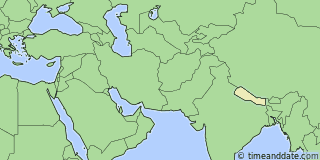
Holiday Note: 26 Aug, Gaura Parba . Businesses may be closed. See more
Broken clouds. 34 / 26 °C
Weather by CustomWeather, © 2024
More weather details

About NPT — Nepal Time
Set your location

More Sun & Moon in Nepal + Show More Twilight and Moon Phase Information
Astronomical Twilight
Nautical twilight, civil twilight, previous moon phase, next moon phase.
Need some help?

Calendar & Holidays
Create Nepal calendar
Upcoming Holidays
- 26 Aug - Gaura Parba
- 26 Aug - Shree Krishna Janamashtami
- 6 Sep - Hartalika Teej
More Holidays in Nepal

- Tribhuvan International Airport, KTM About 81 km NW of Nepal
- Lok Nayak Jayaprakash Airport, PAT (India) About 191 km SSW of Nepal
- Tenzing-Hillary Airport, LUA About 104 km NE of Nepal


IMAGES
COMMENTS
The best time to visit Nepal is October through February. These months offer dry conditions, warm weather with lower humidity, and excellent opportunities to hike, climb, go on safari, and explore Nepal. Clear skies make a visit to Nepal so much more enjoyable, and with cooler conditions between October and February (a good portion of the dry ...
Late September to November is the best time for trekking, sightseeing and festivities. October to November is the peak season for travel to Nepal and these are the best months to visit for most activities (late September is the shoulder season, although monsoon rains can linger). The weather is warm but not too hot, and the generally clear ...
Learn about Nepal's diverse climate and weather, and how it affects trekking, hiking, and other activities. Find out the best months for each season and region, and what events to expect.
Learn about Nepal's climate, seasons, and festivals, and find out when is the best time to visit for your travel plans. Whether you want to trek, sightsee, or enjoy wildlife, this guide will help you choose the optimal time to visit Nepal.
The best time to visit Nepal depends on what you plan to do while in the country. Fall/autumn and spring are the most popular times to visit for hikers, climbers and mountaineers. At this time, clear skies and pleasant temperatures create the ideal conditions for adventures in the mountains.
Best time to visit. The best time to visit Nepal is between October and December, when the skies are a clear blue and the views spectacular. The weather remains dry until about April, with temperatures varying between regions. January and February can be very cold, especially at night, with average temperatures of 43°F.
Best time to visit. The best time to visit Nepal is between October and December, when the skies are a clear blue and the views spectacular. The weather remains dry until about April, with temperatures varying between regions. January and February can be very cold, especially at night, with average temperatures of 6°C.
The best time to visit Nepal is during the months of October and November. The monsoon is over, which means magnificent, green, lush vegetation as well as clean air - the perfect time to explore the country in all its beauty, especially given the mild temperatures. This is also the time the views of the peaks of the Himalayas are nearly ...
Autumn in Nepal is undoubtedly the best time to visit Nepal for trekking and exploring the incredible Nepal Himalayas. With its pleasant weather, clear skies, and an abundance of trekking trails, there's no better time to lace up your hiking boots and embark on the adventure of a lifetime. Winter in Nepal (December-February): A Chilly Adventure
Shishir Ritu. Mid-January to Mid-March. Nepal Has Six Climatic Seasons. 1. Spring Season (March-May) In this season, the temperature is softly warm at low altitudes while moderate at higher altitudes. This is the best time to Visit Nepal if you want to explore the beauty of this beautiful country.
In this region, places like Namche Bazaar, which sits at an altitude of 3,450m, experience temperatures of -7°C at night. Winter occurs from late November to February and is typically rain-free and clear. High altitude areas above 3,000 metres will be snowy and very cold indeed with night time temperatures of -10°C not uncommon.
Planning Your Trip. Best time to visit: For most outdoor activities in most parts of the country, the best time to visit is from September to November, and from March to May. Winter (December to February) is comfortable at lower altitudes. Traveling during monsoon season (June to August) is not advised, except to areas in the Himalayan ...
The best time to visit Nepal for Trekking: A season-by-season guide. On April 24, 2023 by wildyak. Nepal, the land of never-ending trek has its highs and lows (literally). Jaw-dropping landscapes, lush green forests, friendly locals, snow-capped peaks, diverse culture, and the list goes on and on. That's what makes Nepal a popular destination ...
Autumn is widely considered the best time to visit Nepal, as the monsoon has cleared the air, leaving crystal-clear skies and spectacular mountain views. The weather is stable, with temperatures ranging from 15°C to 24°C (59°F to 75°F). The pleasant climate and breathtaking scenery make it the peak season for trekking, cultural tours, and ...
Spring and autumn are generally considered to be the best seasons to visit Nepal, since the weather tends to be moderate and stable, with clear skies. However, due to the complex nature of Nepal's geography and climate, there's a lot more to this. An ever-increasing number of travelers visit Nepal in winter and summer, and for good reason. With the right information, travel plan, and ...
Autumn in Nepal is a trekker's paradise: cloudless and dry, neither too hot nor too cold, and the clear mountain views resplendent. October to December is the best time to visit Nepal, as dry days make trekking easier and offer good visibility. Autumn (September-November) and spring (late February-mid-April) are also great seasons to trek in ...
Best time to visit Nepal. The best time to visit Nepal is pre- and post-monsoon (March to April and September to November), especially if you want to go trekking. Spring (March to May) is a particularly beautiful season as the rhododendrons are in bloom. That being said, there's still lots to do even in the off-season (not to mention a jam ...
The best time to visit Nepal is during the autumn months of September to November for most travelers due to the clear skies, mild weather, and ideal trekking conditions. However, if you enjoy blooming rhododendrons and warmer temperatures, spring (March to May) is ideal, while winter (December to February) is perfect for those who prefer fewer tourists and snow-covered landscapes.
Best Time To Visit Nepal. Nepal is a beautiful country with a rich culture and stunning natural landscapes. If you're planning a trip, it's important to know the best time to visit to make the most of your experience. From the weather to festivals and events, we've put together a comprehensive guide to help you plan your perfect trip to Nepal.
The best time to visit Nepal depends on your interests, preferences, and travel goals. However, the peak tourist season in Nepal is from September to November and from February to April. During these months, the weather is mild and dry, making it perfect for trekking, sightseeing, and other outdoor activities. ...
For adventure lovers wanting to trek and hike in Nepal, the autumn season (September to November) is heralded as the best time to visit Nepal followed by the months of spring (March to May). Autumn is the peak trekking and hiking season as all the trails feature blooming landscapes with highly active flora and fauna with easier weather ...
Chitwan National Park | Image credit: MMuzammils, CC0 1.0 UNIVERSAL Deed, via Wikimedia Commons On day 3 of your Nepal itinerary, fly to Bharatpur airport and drive to Chitwan National Park (1.5 hours), one of the best tourist places in Nepal boasting over 932 sq km of forests, marshland and grassland, and a healthy population of rhinos, tigers, leopards, sloth bears and a prolific bird life.
Best time to visit Nepal. Best time to visit Nepal. The best time to visit Nepal is pre- and post-monsoon (March to April and September to November), especially if you want to go trekking. Spring (March to May) is a particularly beautiful season as the rhododendrons are in bloom. That being said, there's still heaps to do even in the off ...
Best Time to Trek Nepal: Why September is Ideal. September stands out as an unparalleled month for trekking in Nepal. The monsoon season has bid farewell, leaving behind lush landscapes and rejuvenated trails. ... What vaccinations are required for trekking in Nepal? Consult with a travel doctor for the latest recommendations, but standard ...
Selecting the Ideal Accommodation. Luxury hotels and resorts: For a lavish experience, choose from the many 5-star hotels and resorts in Nepal that offer luxurious amenities, spa services, and breathtaking views.; Boutique hotels: Opt for smaller, boutique hotels that provide personalized services and a more intimate atmosphere.; Heritage hotels: Stay in a converted palace or a traditional ...
Nepal's Foreign Minister Arzu Rana Deuba is set to embark on a five-day visit to India starting August 18, aiming to deepen bilateral relations between the two countries. During her stay, Deuba will engage in significant talks with India's External Affairs Minister S. Jaishankar, focusing on strengthening diplomatic and economic ties. This visit follows a recent diplomatic trip by Indian ...
Visit our page to get detailed information about flights to Nepal with Turkish Airlines and to buy Nepal flight ticket. ... Discover best flight deals to Nepal. From. flight_takeoff. To. flight_land. Cabin Class. Select Travel Class. keyboard_arrow_down ... Fares displayed have been collected within the last 48 hours and may no longer be ...
Best time to visit Nepal. The best time to visit Nepal is pre- and post-monsoon (March to April and September to November), especially if you want to go trekking. Spring (March to May) is a particularly beautiful season as the rhododendrons are in bloom. That being said, there's still heaps to do even in the off-season (not to mention a jam ...
Current local time in Nepal - Nepal. Get Nepal's weather and area codes, time zone and DST. Explore Nepal's sunrise and sunset, moonrise and moonset.